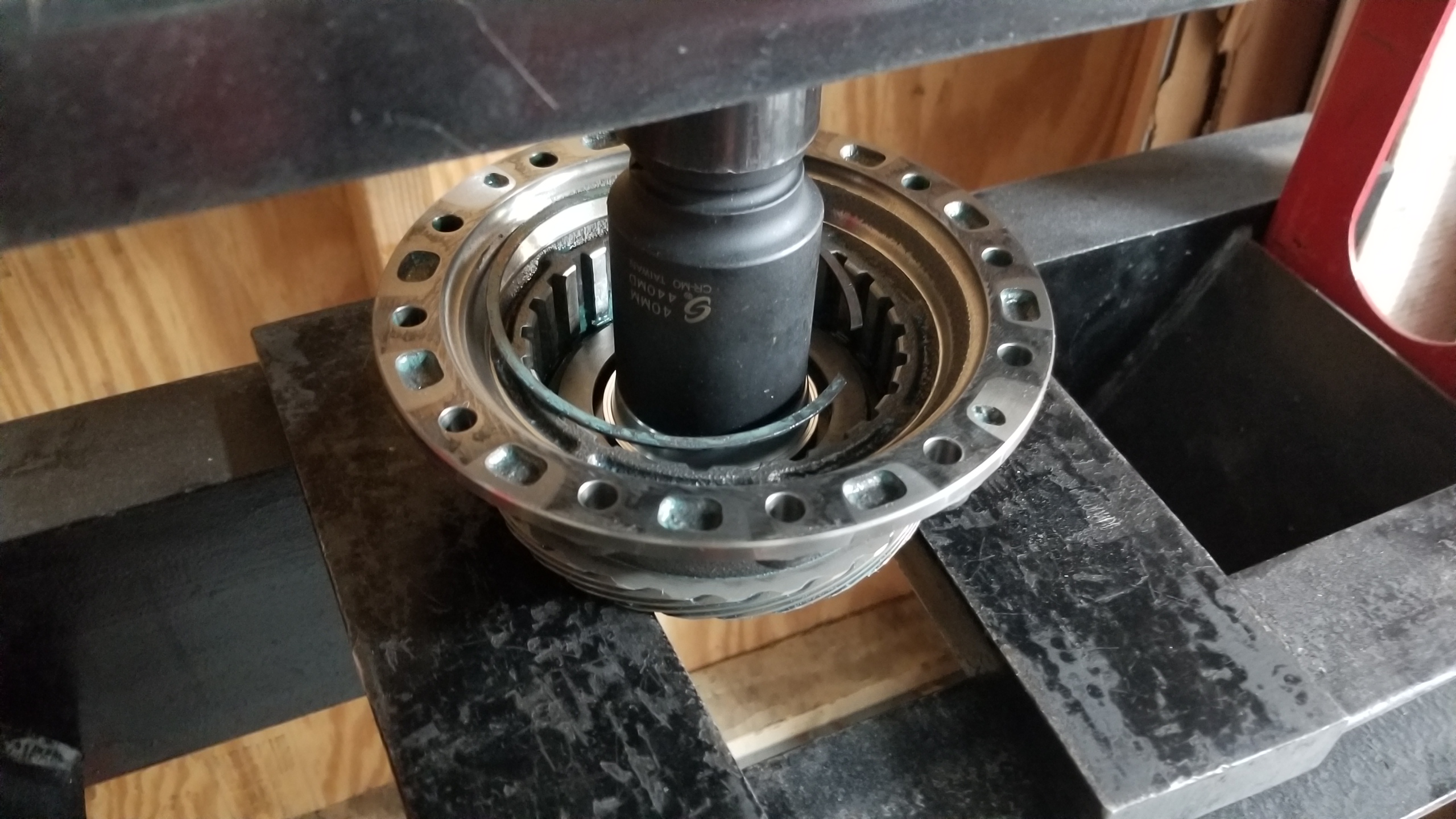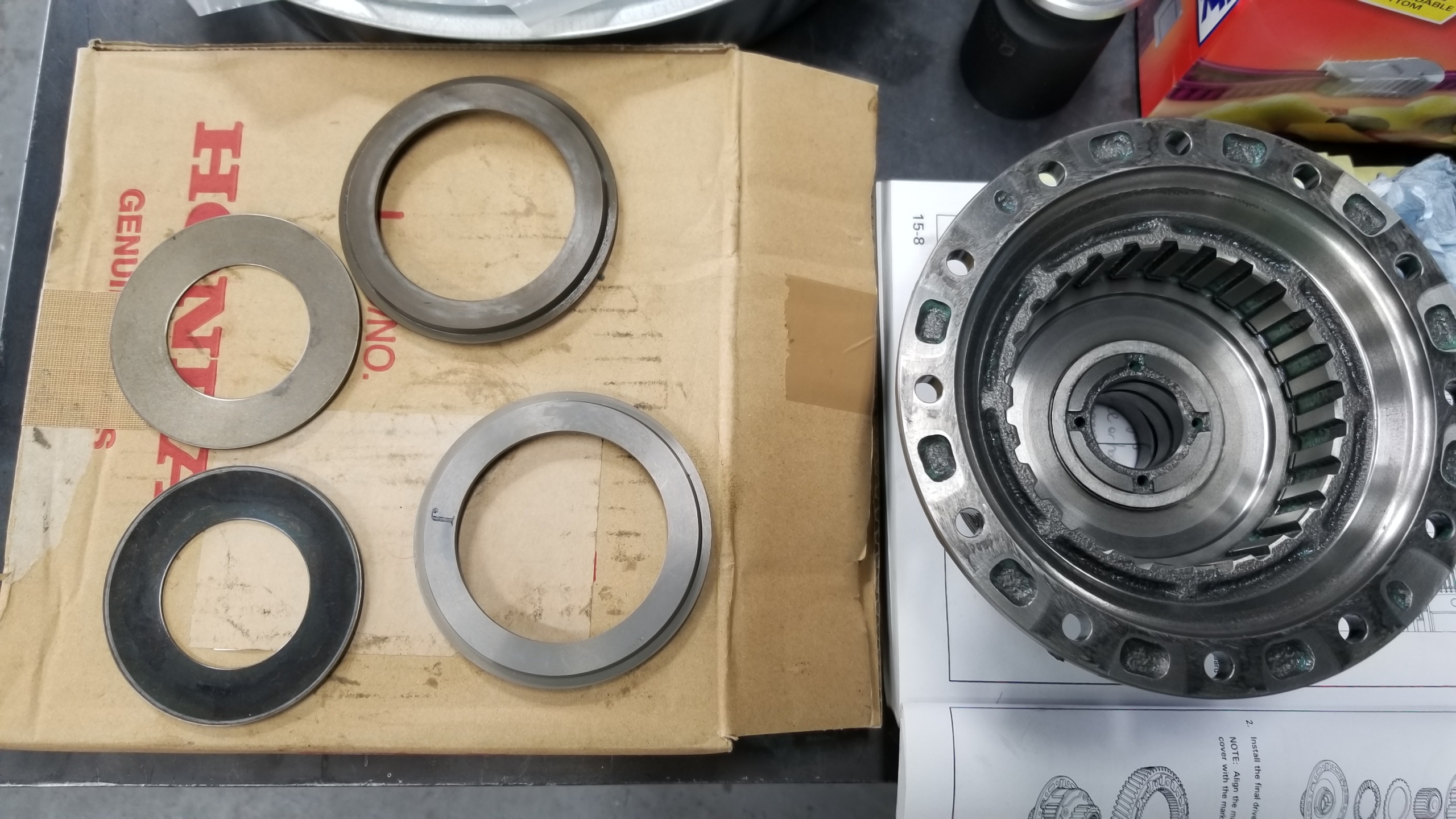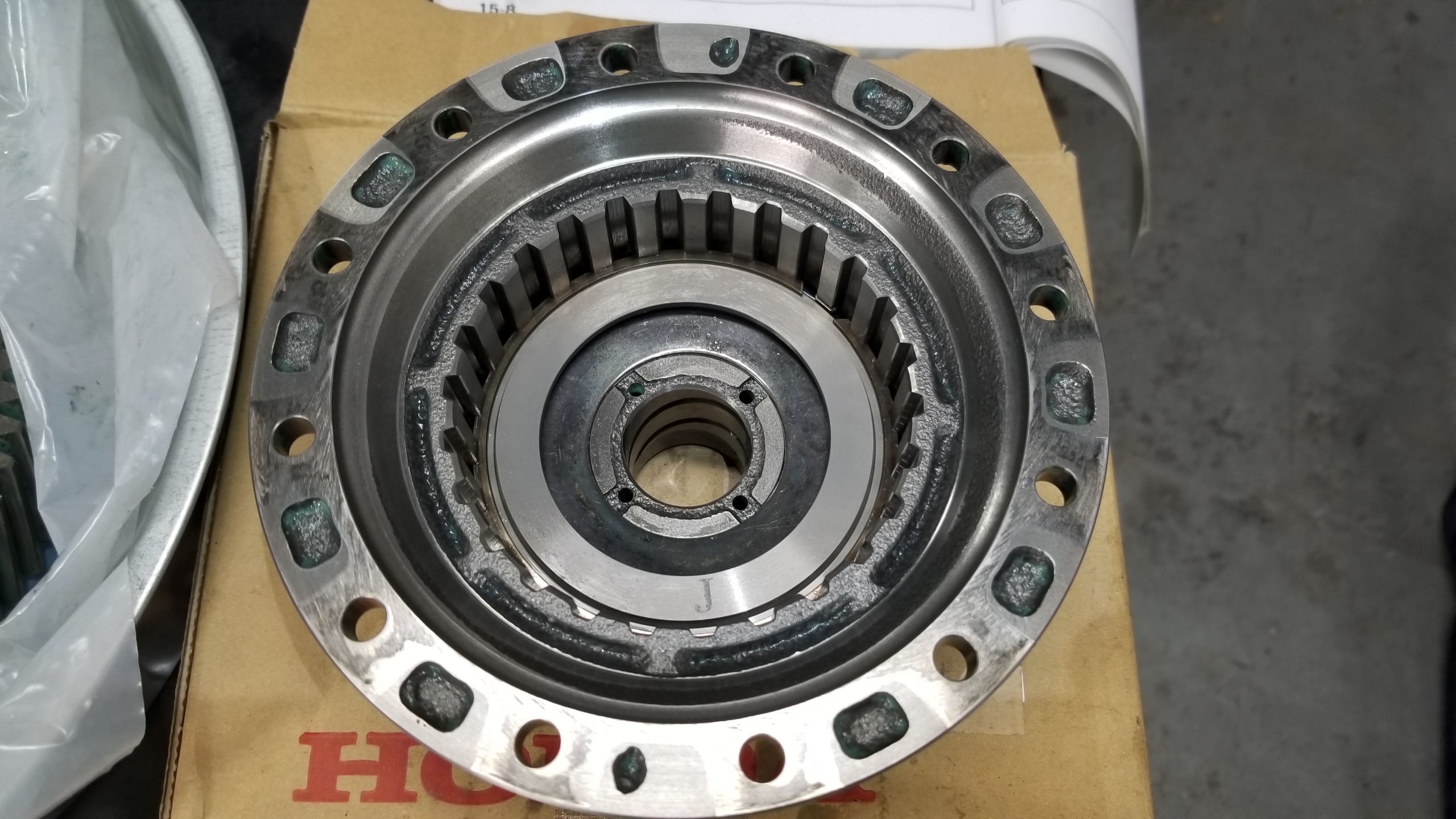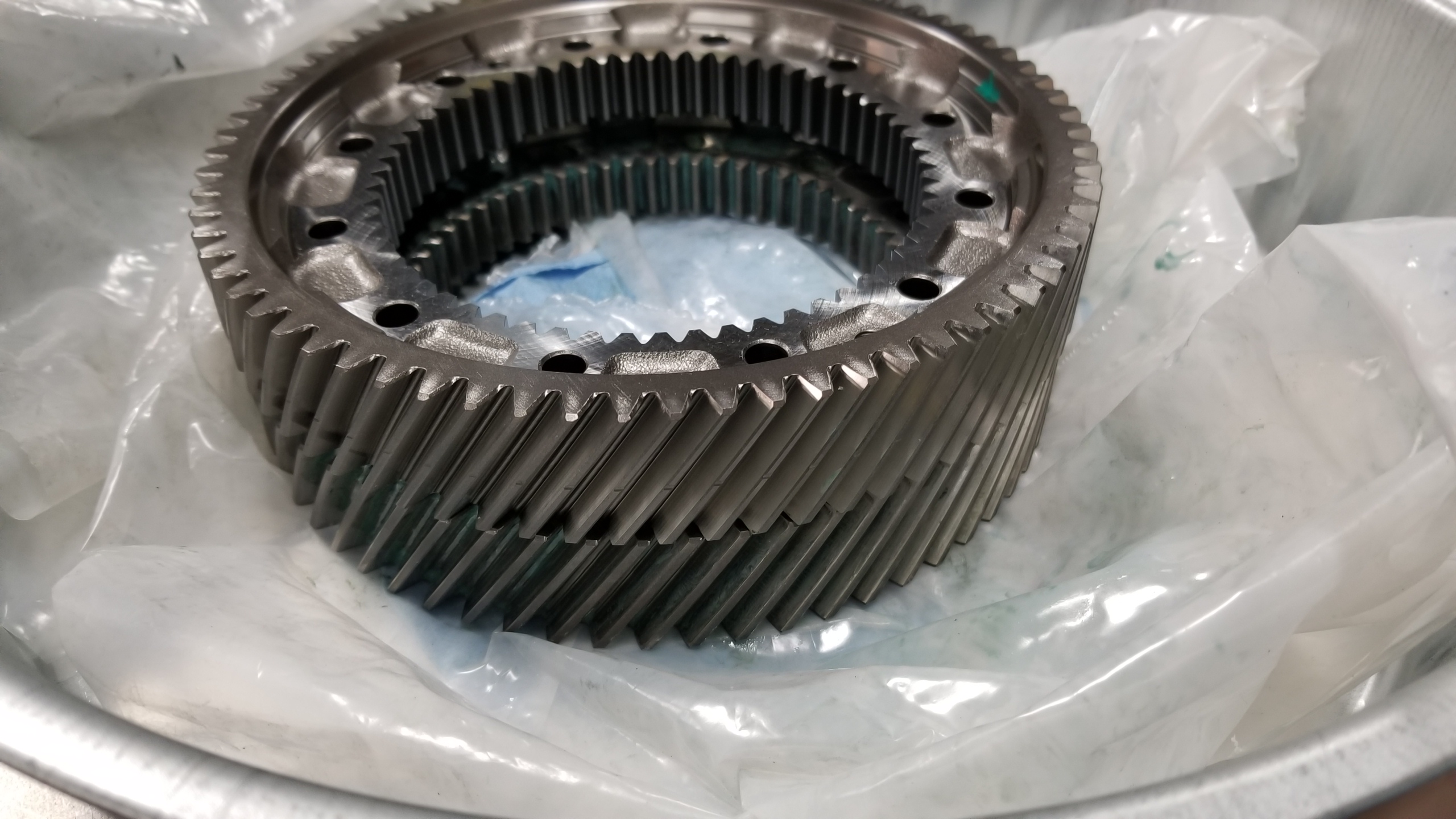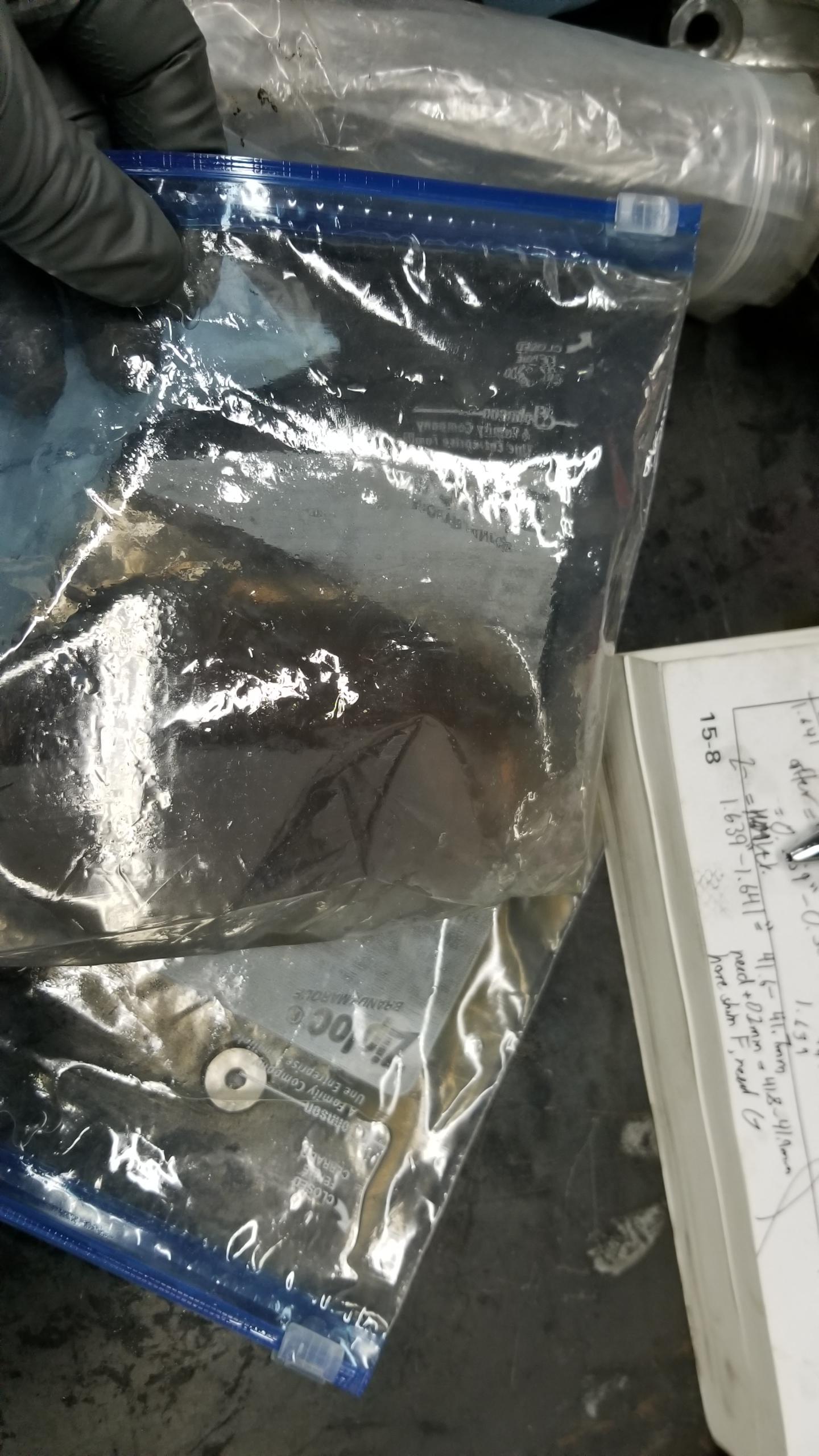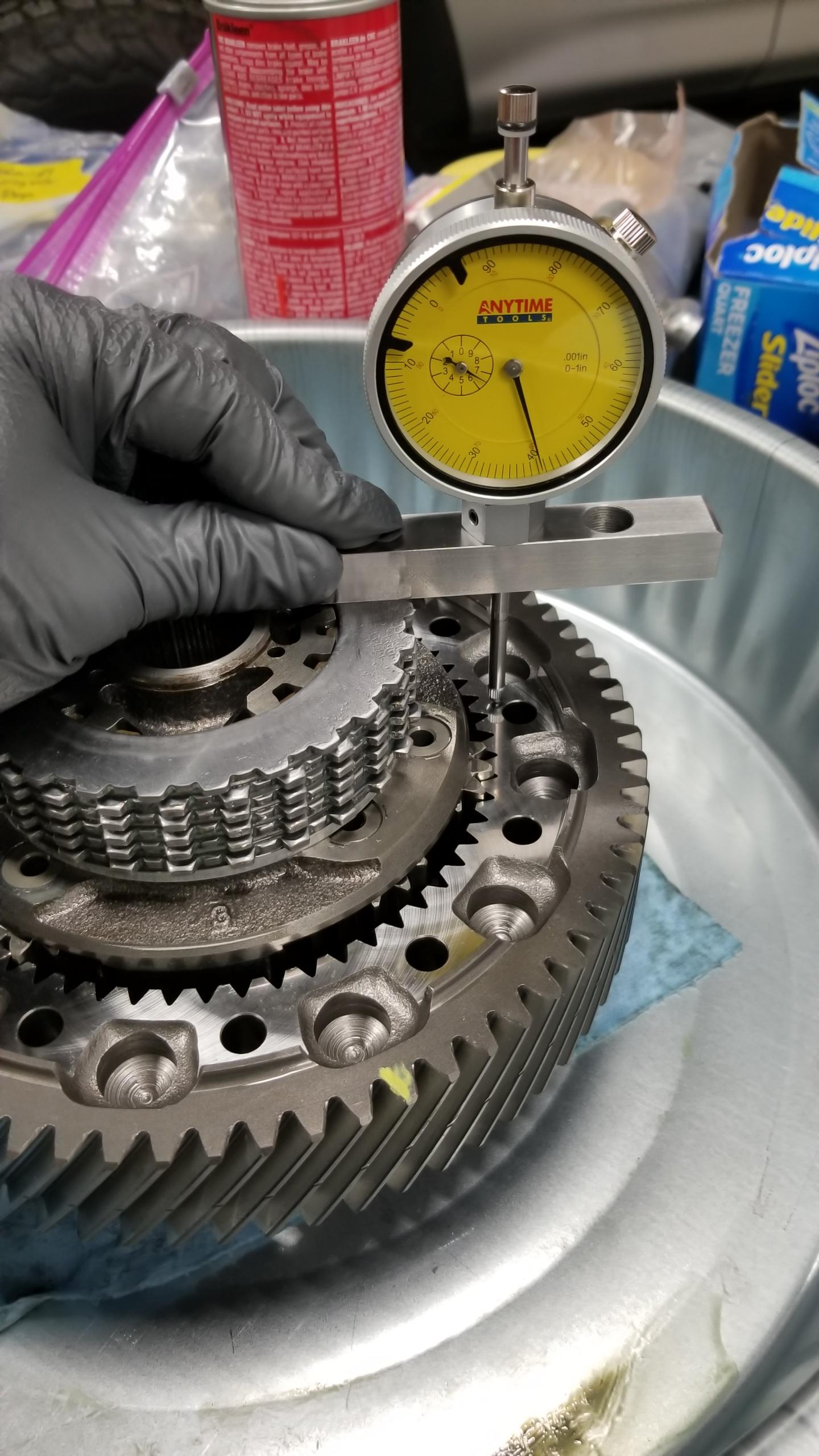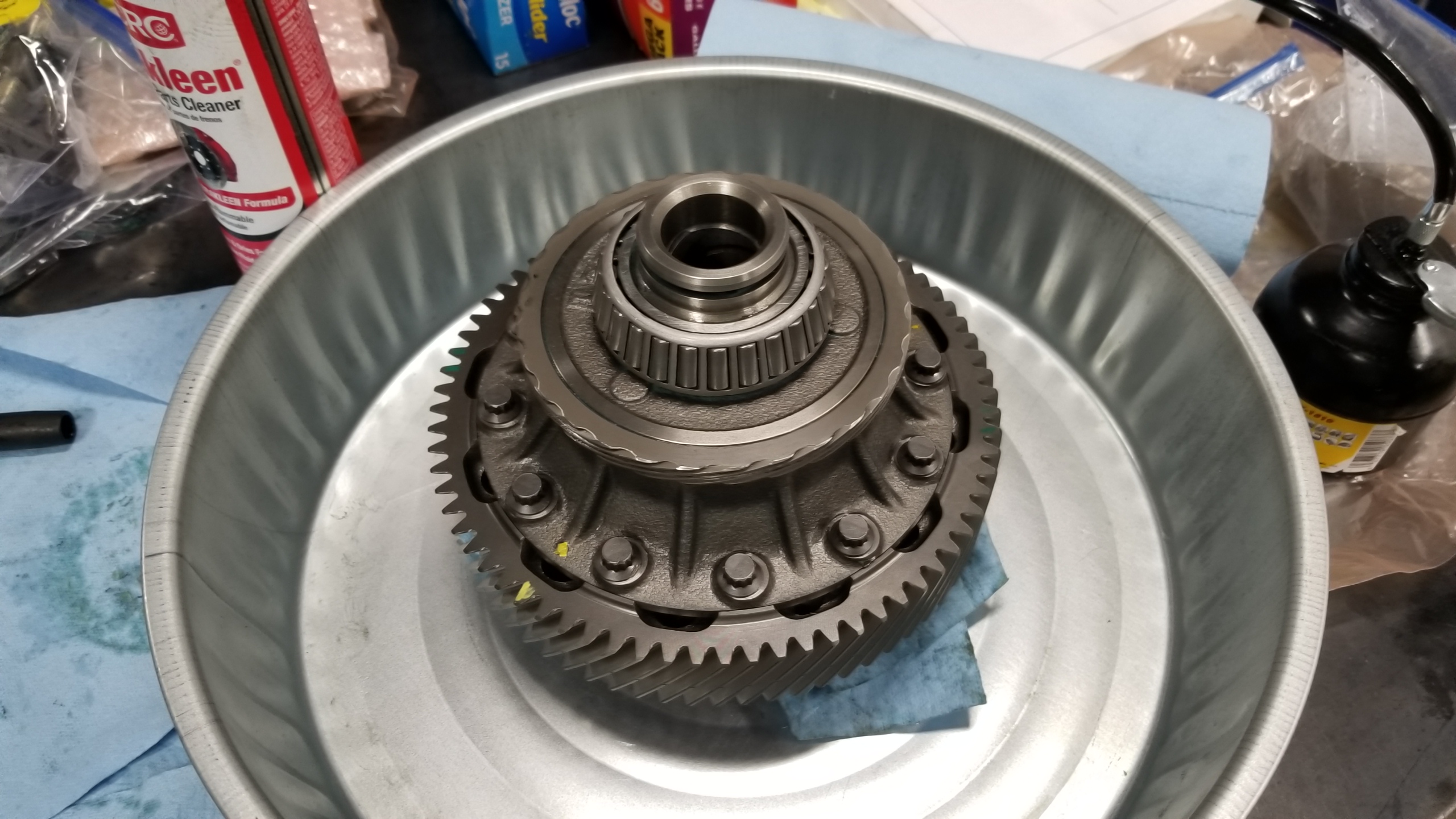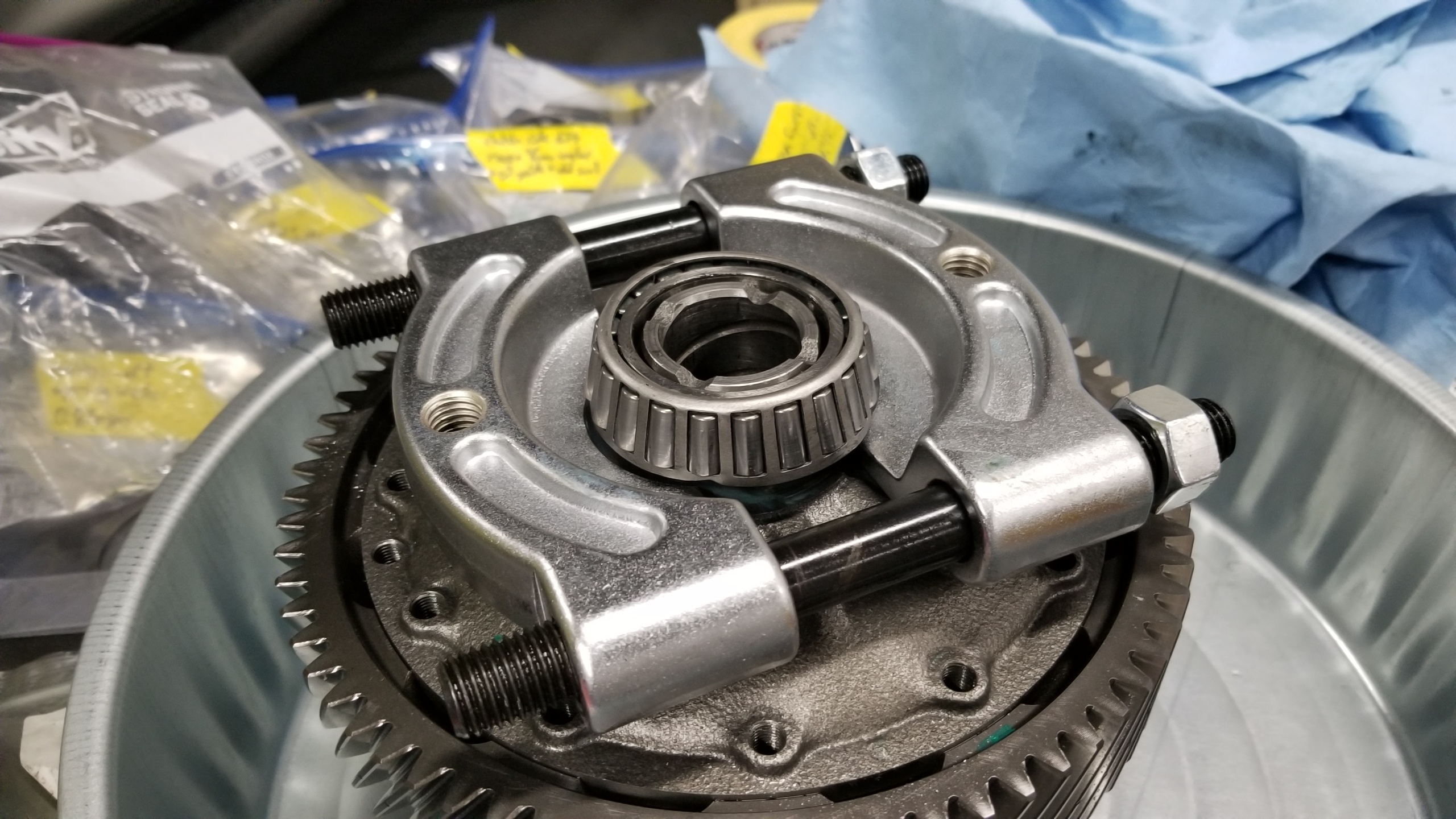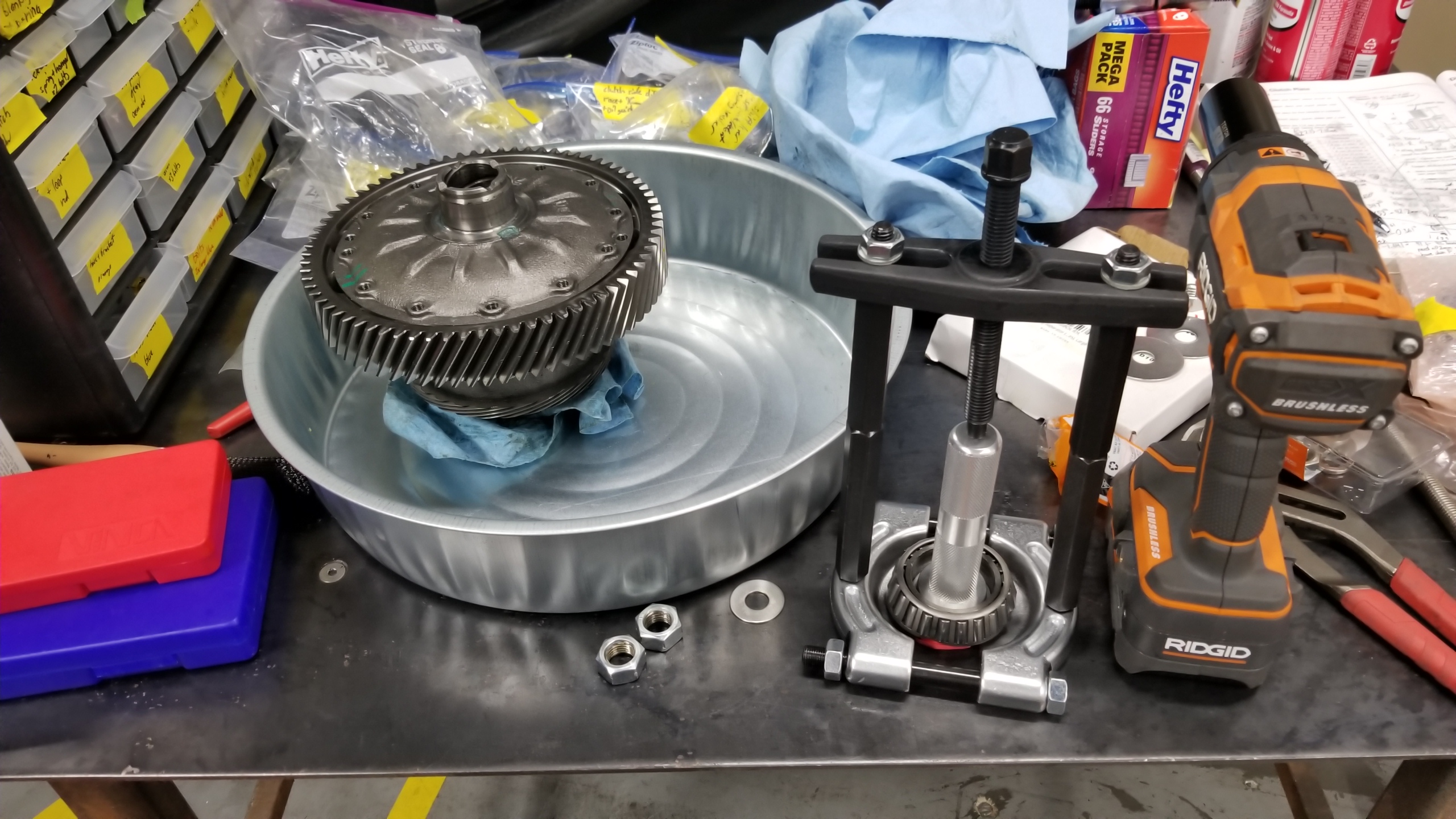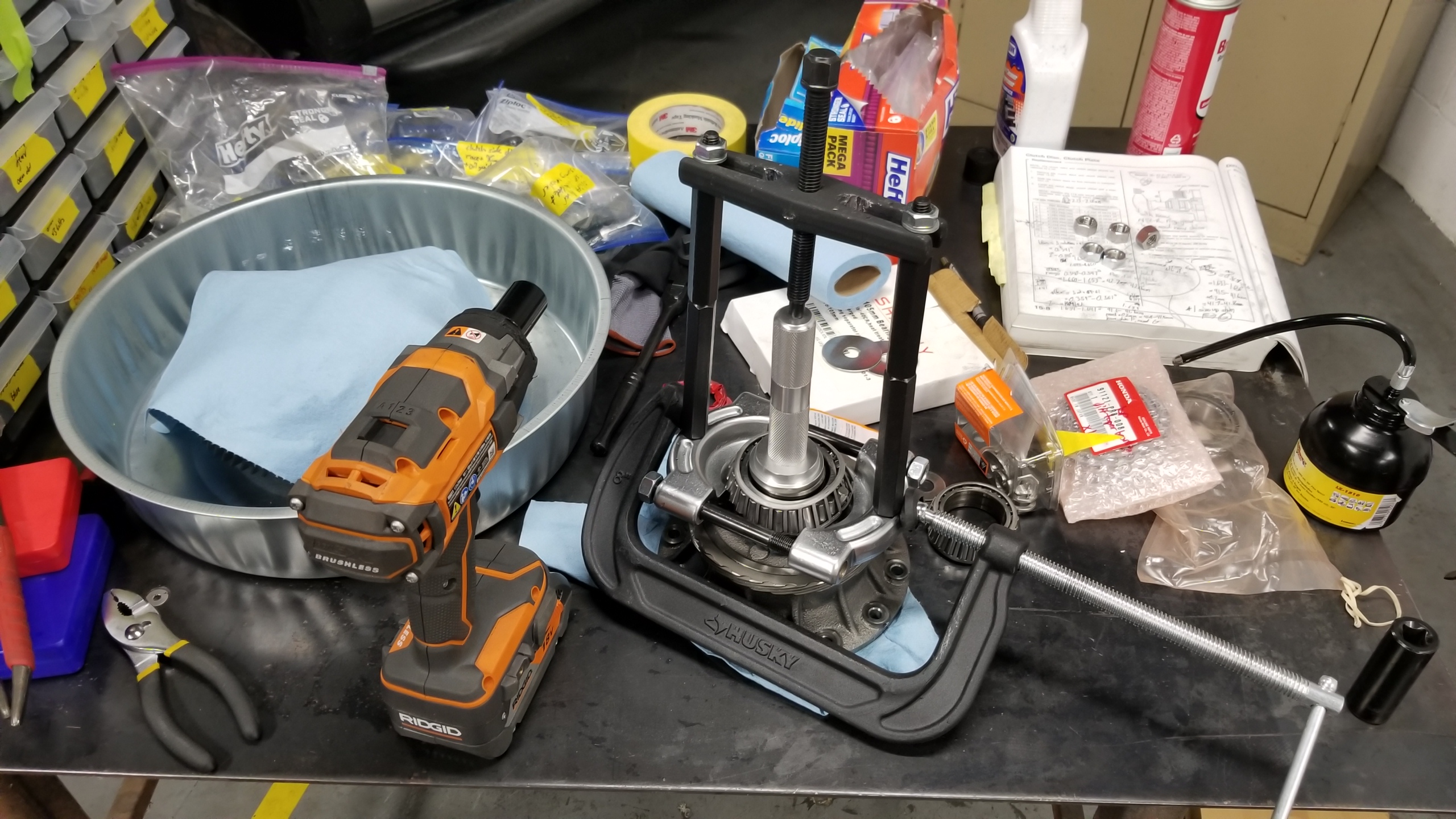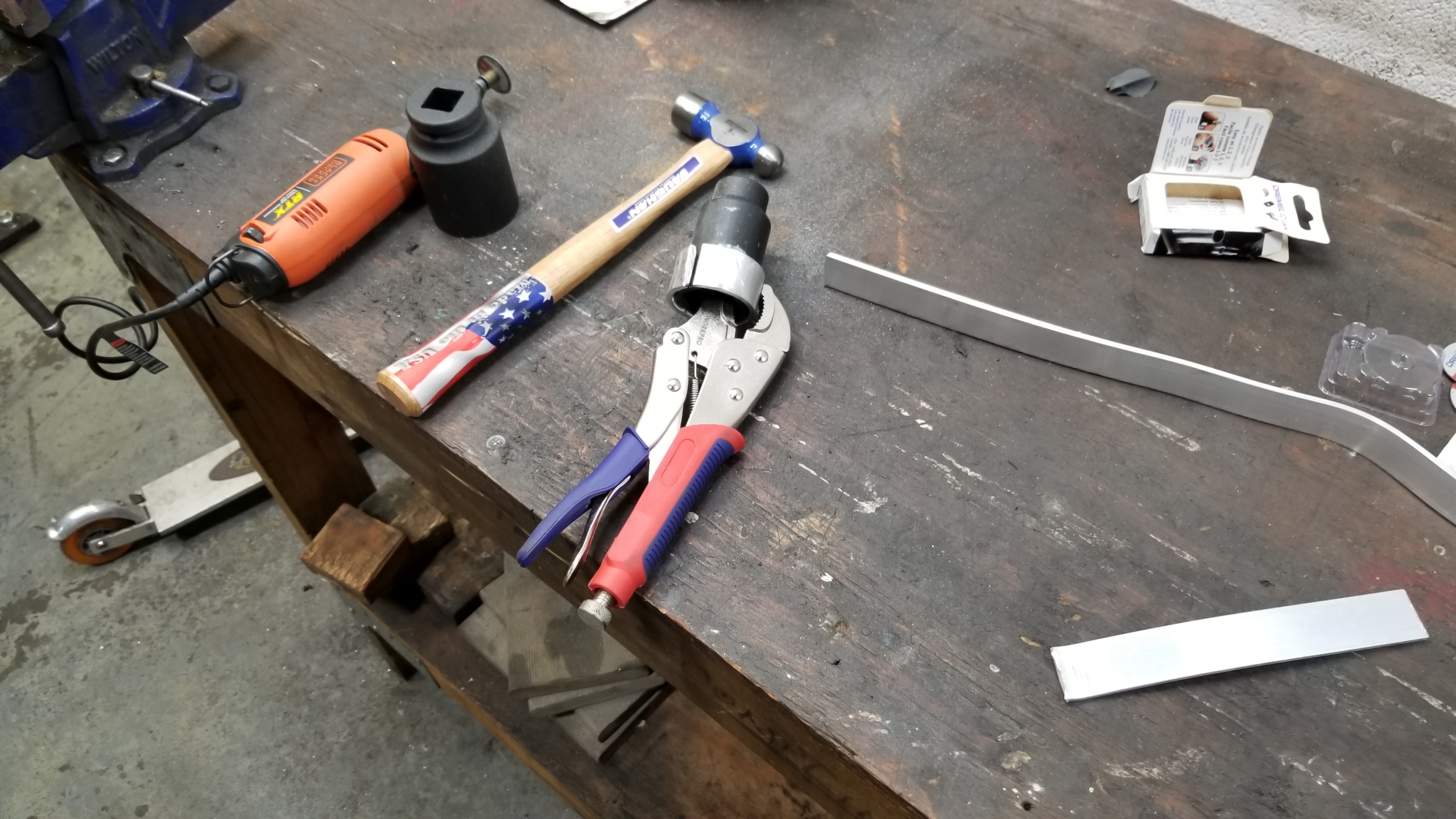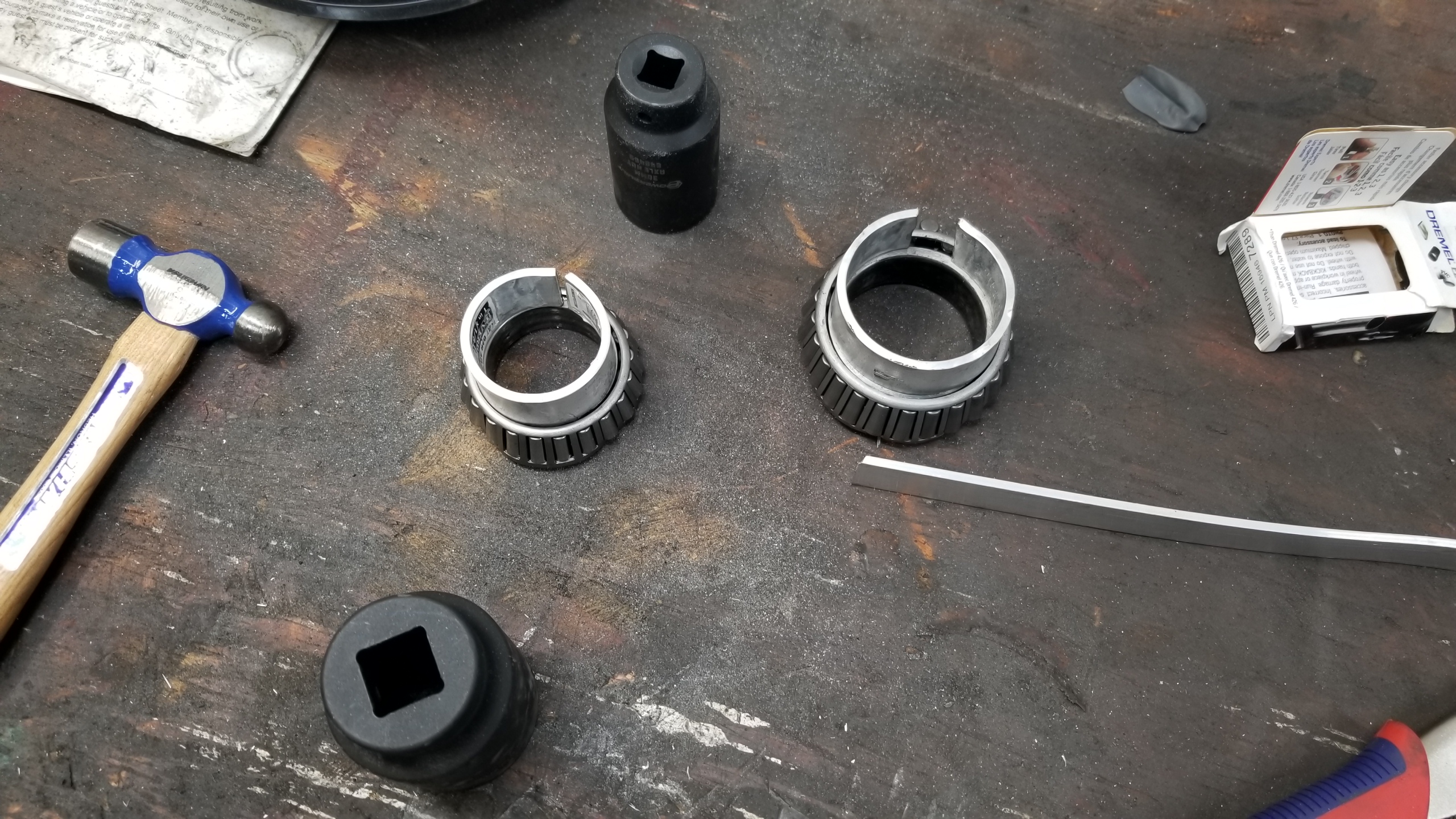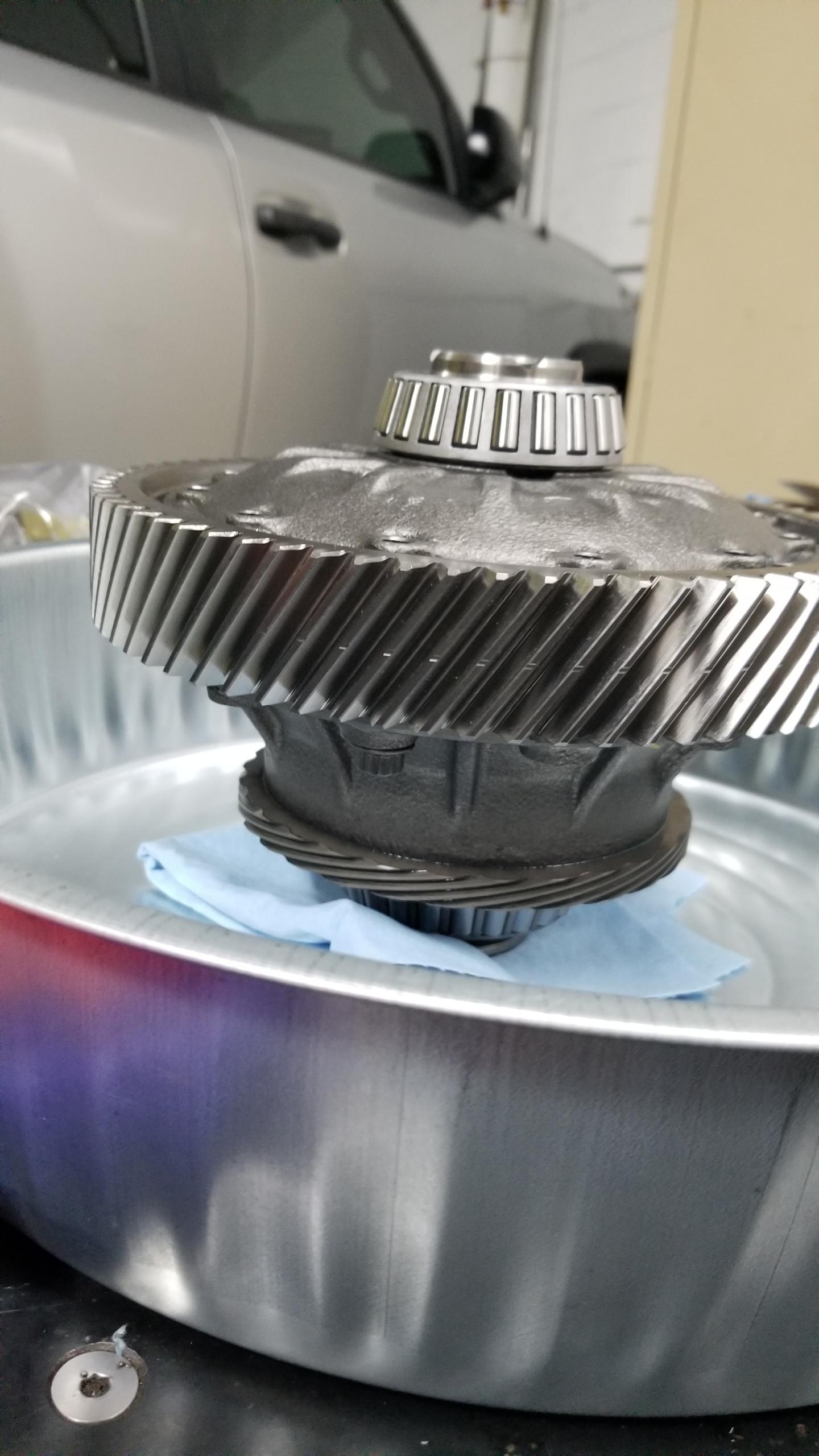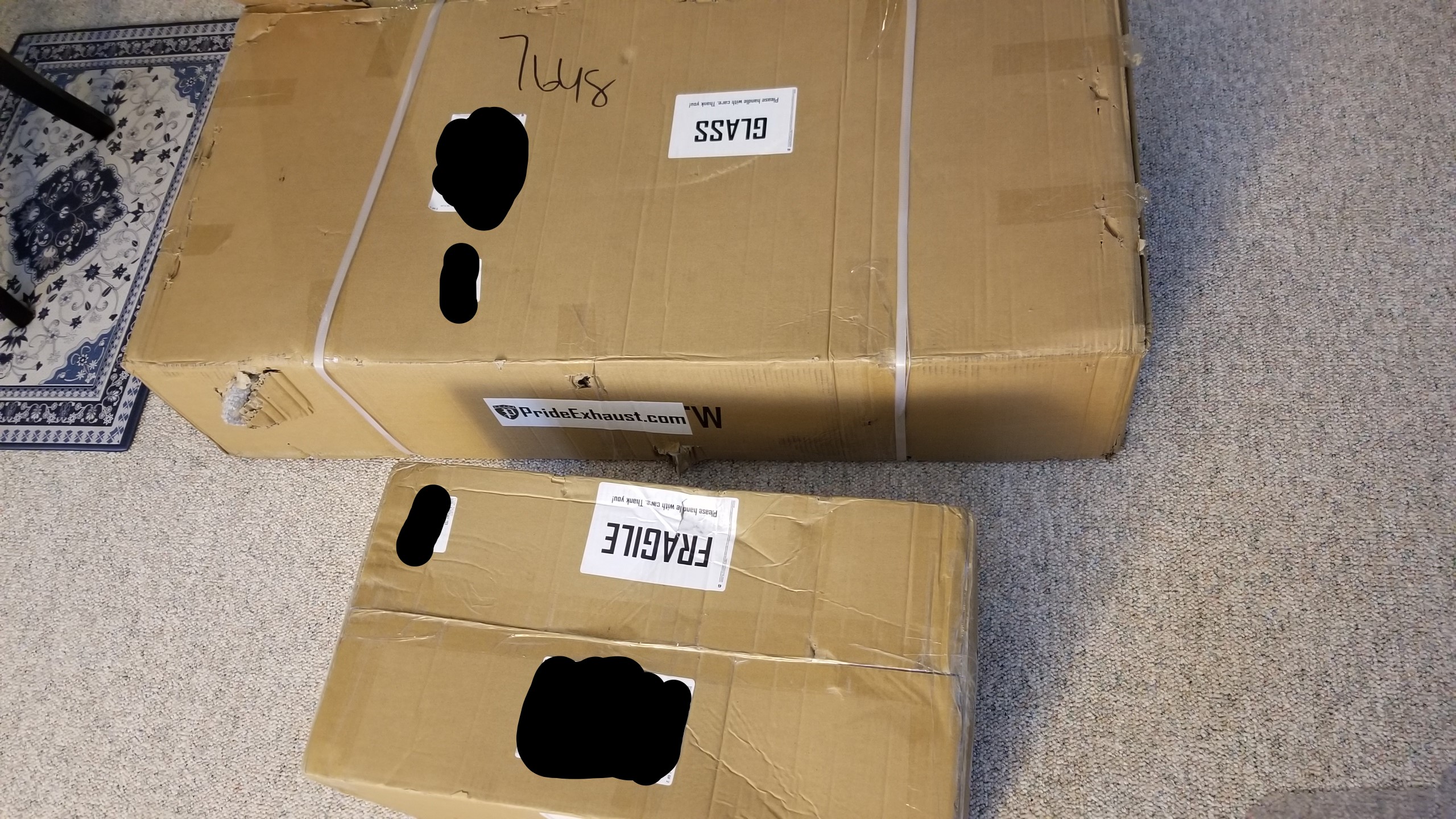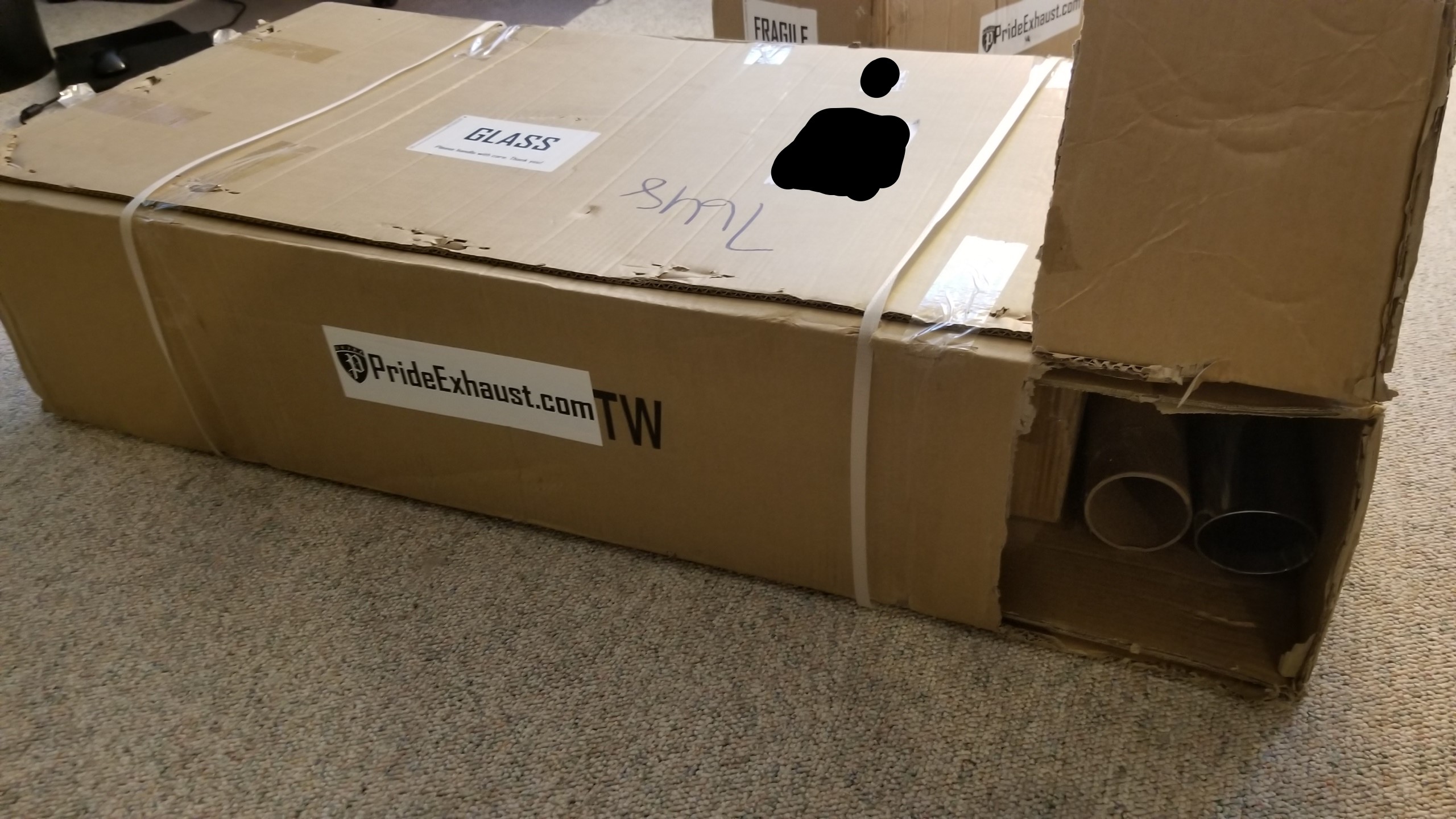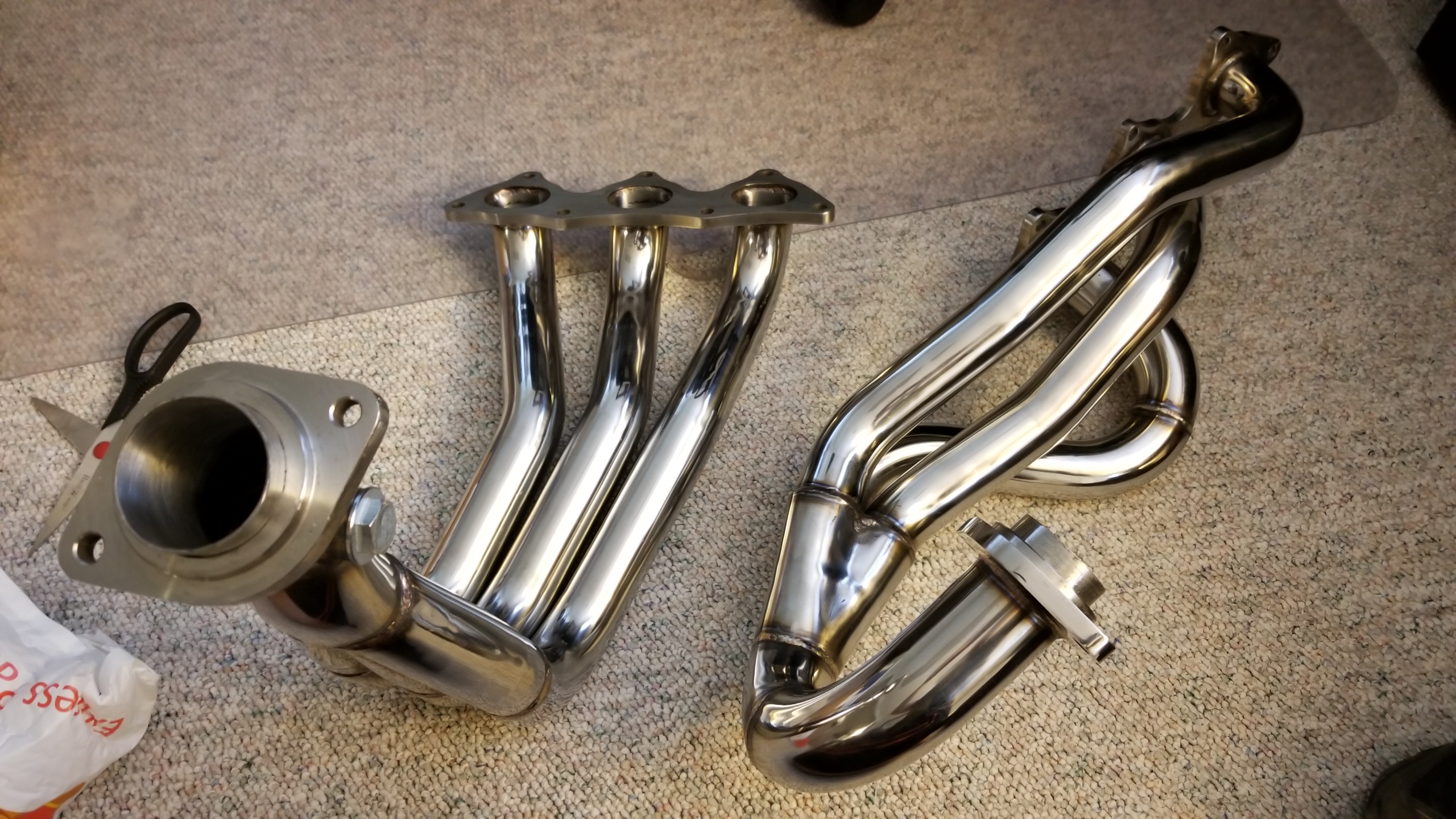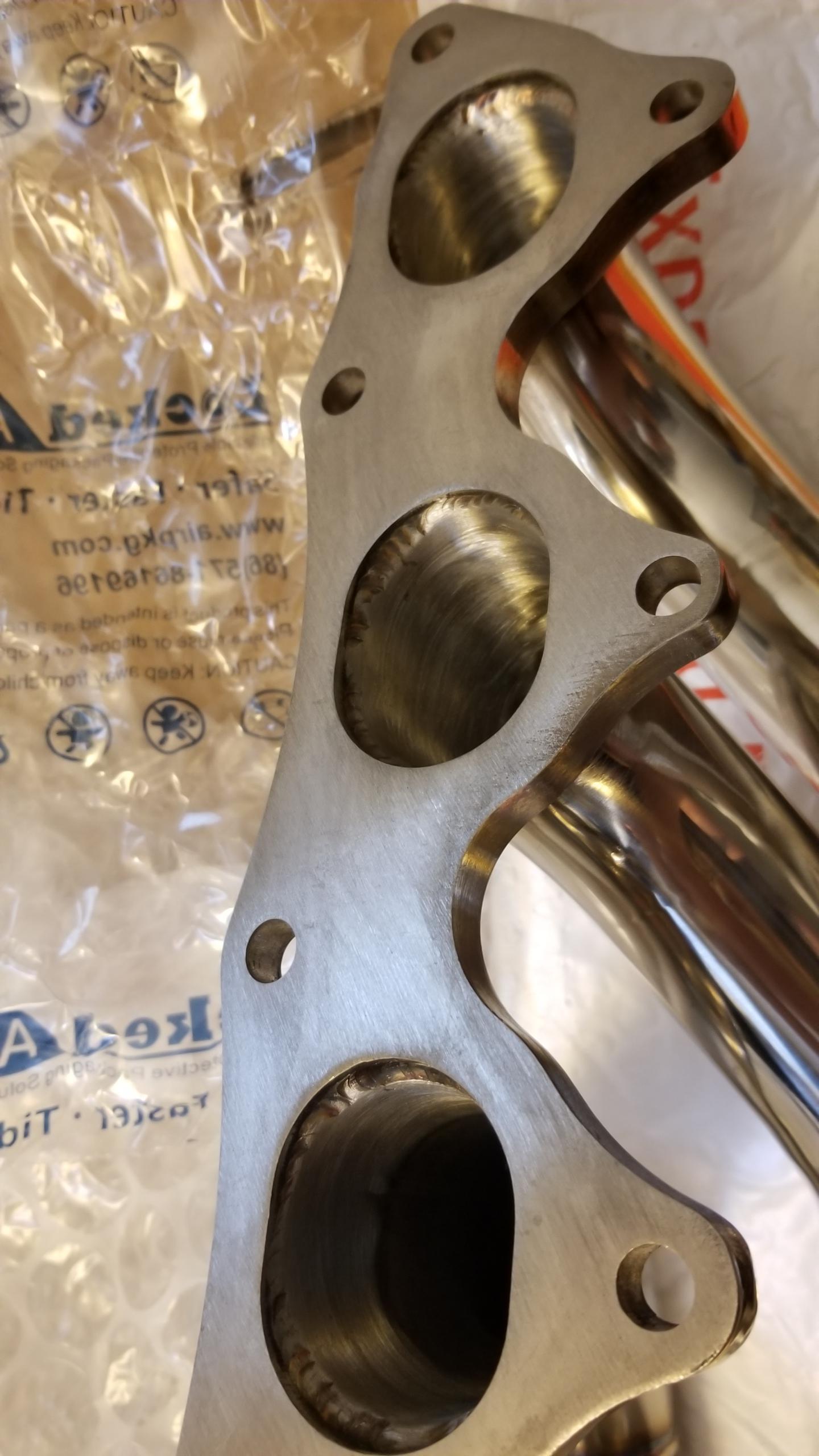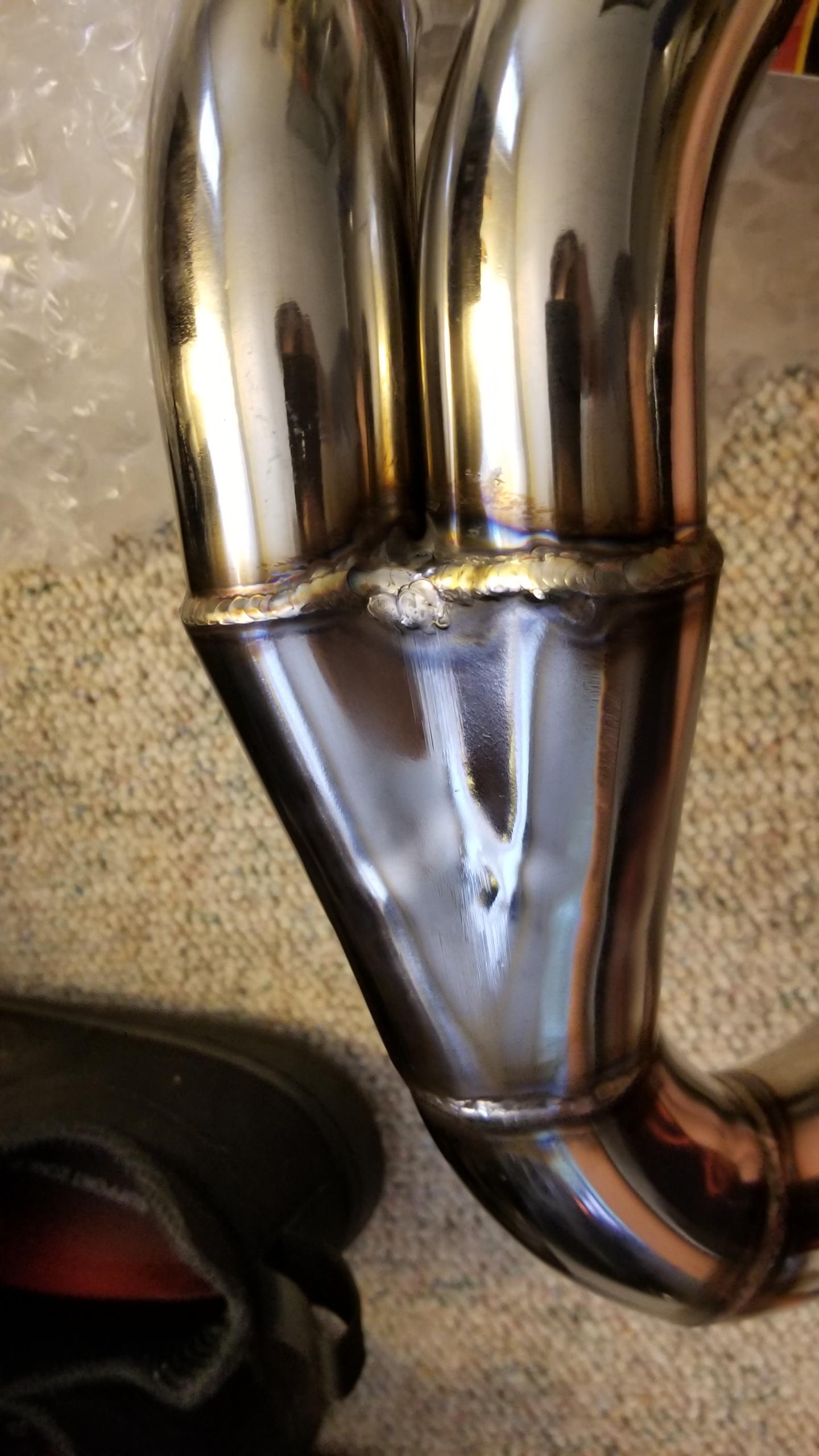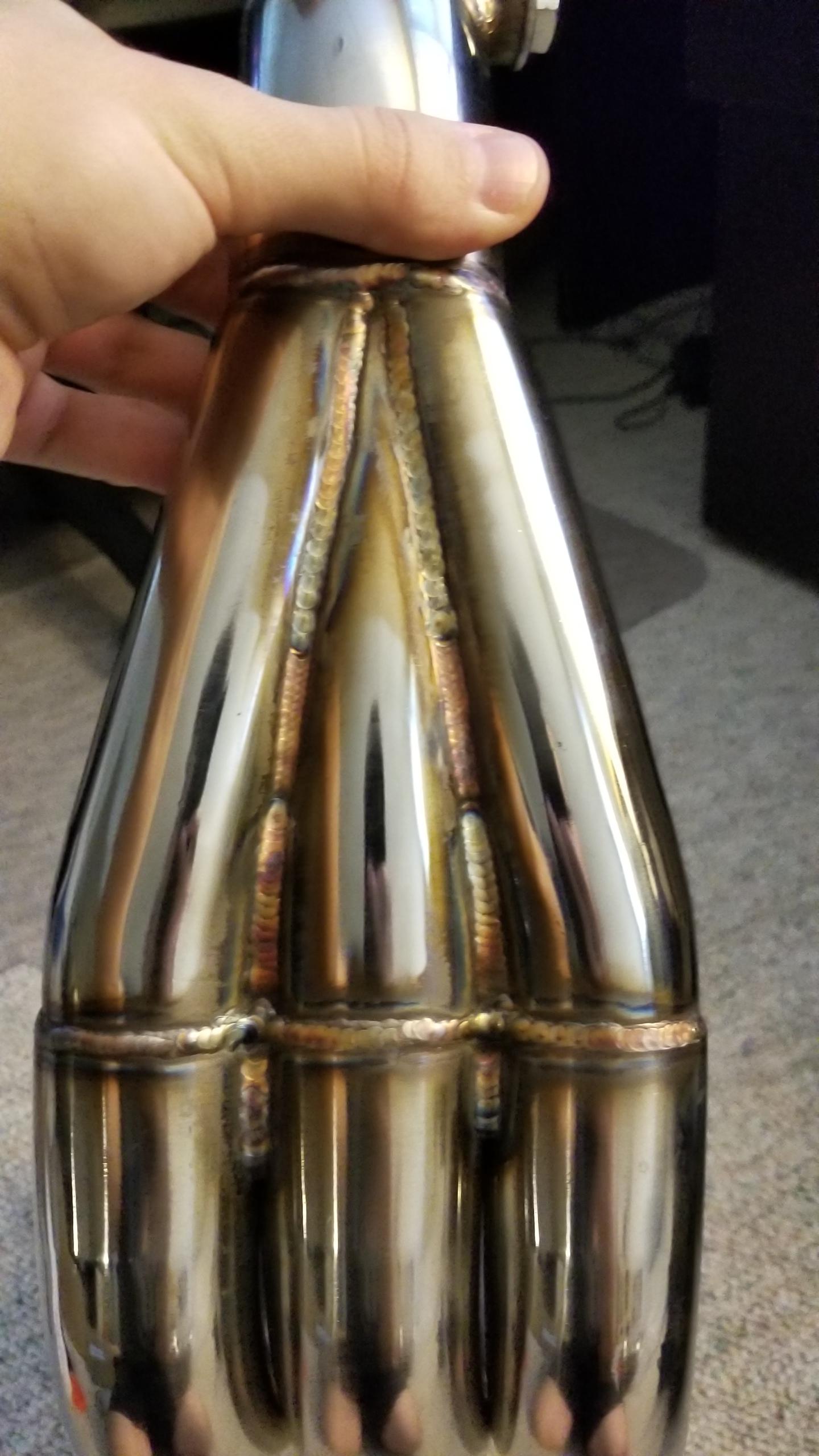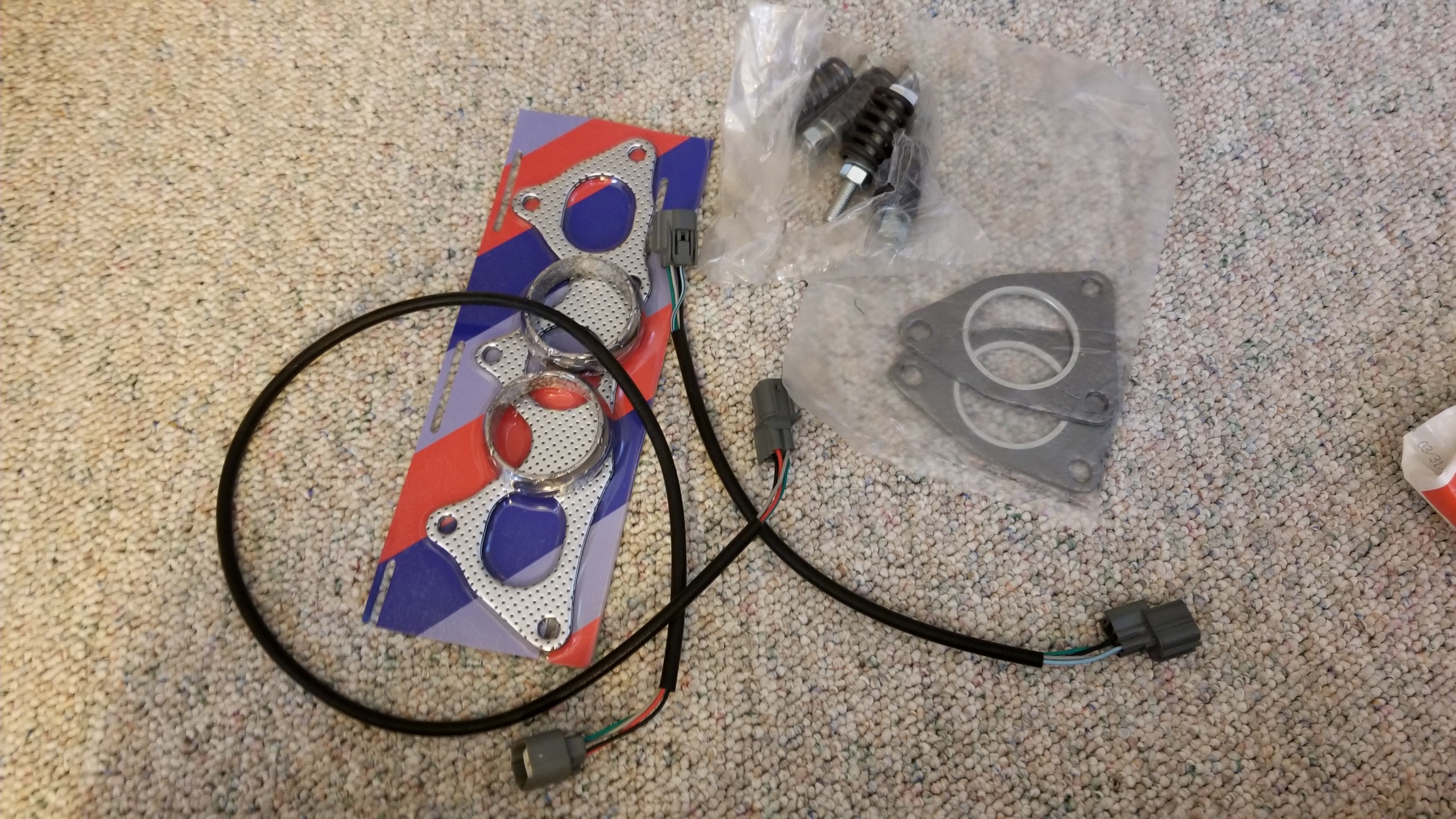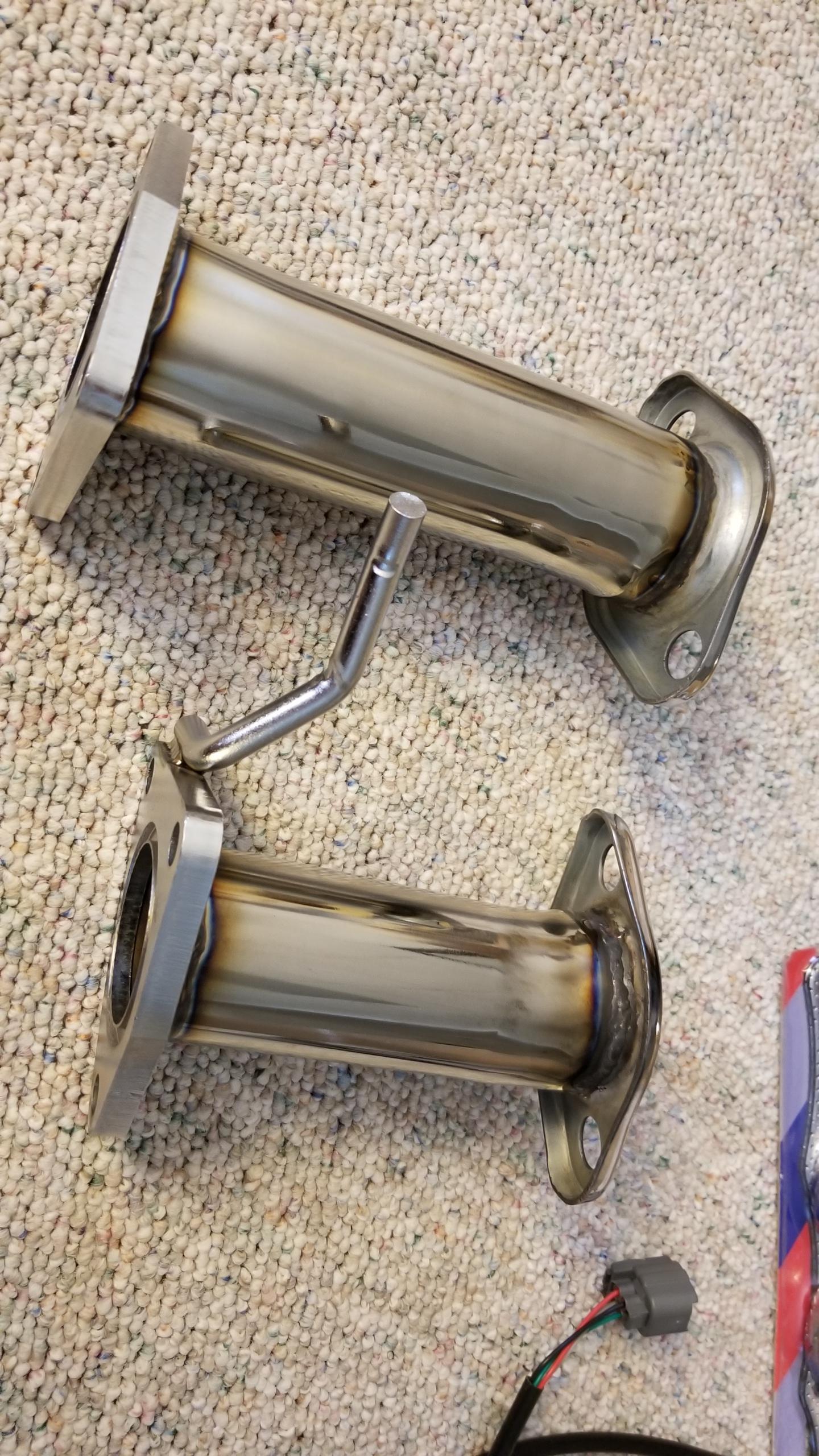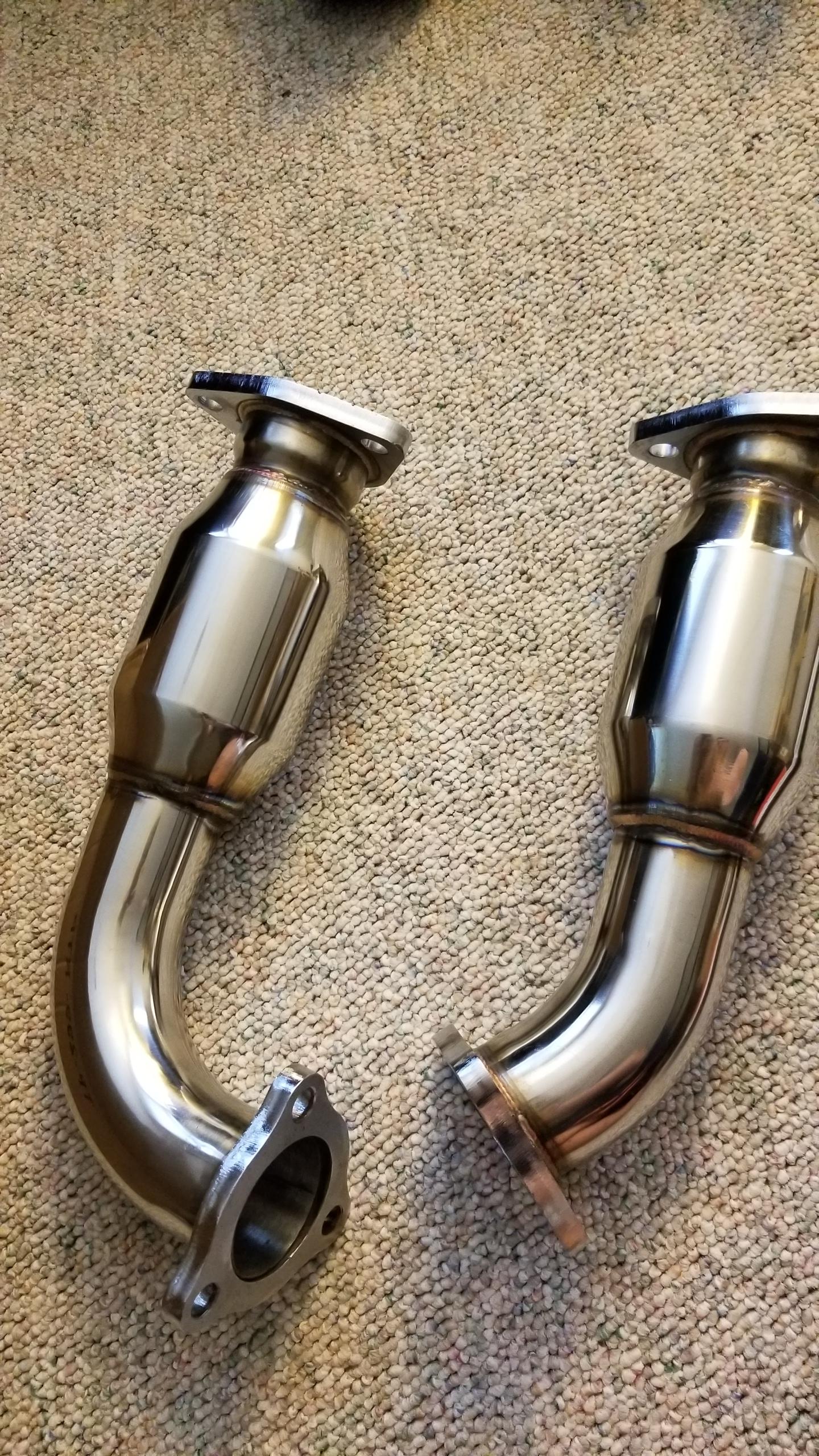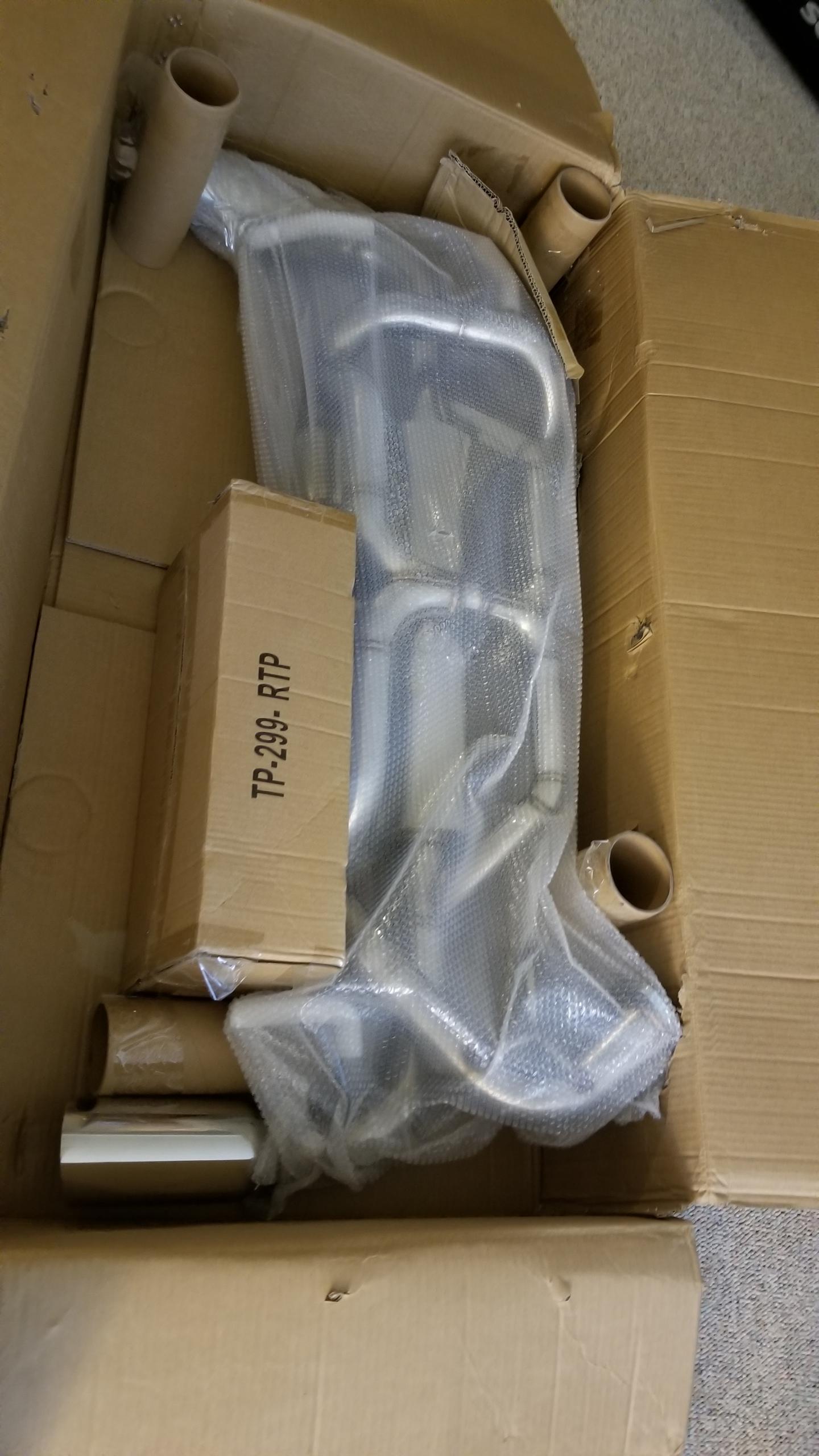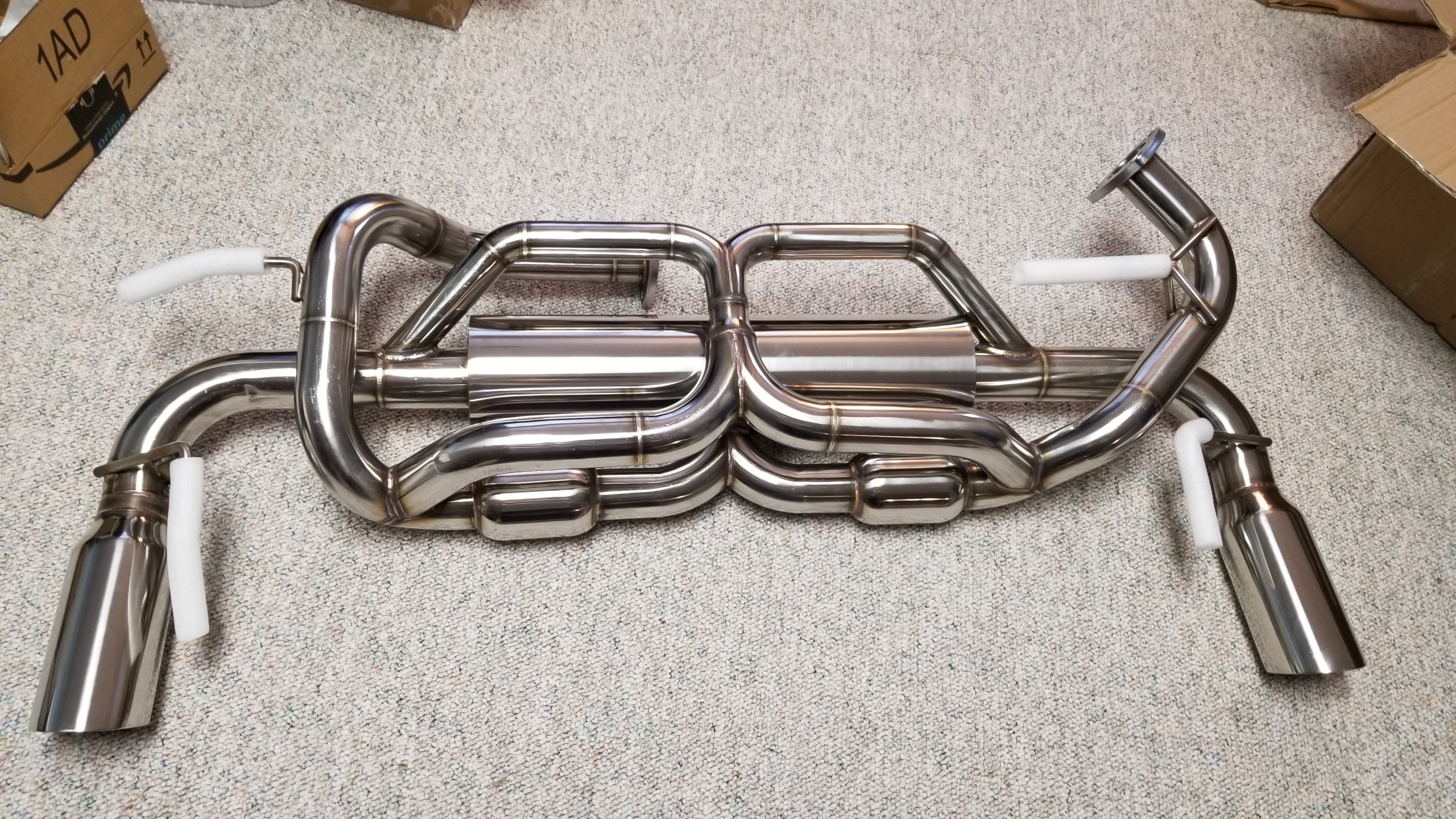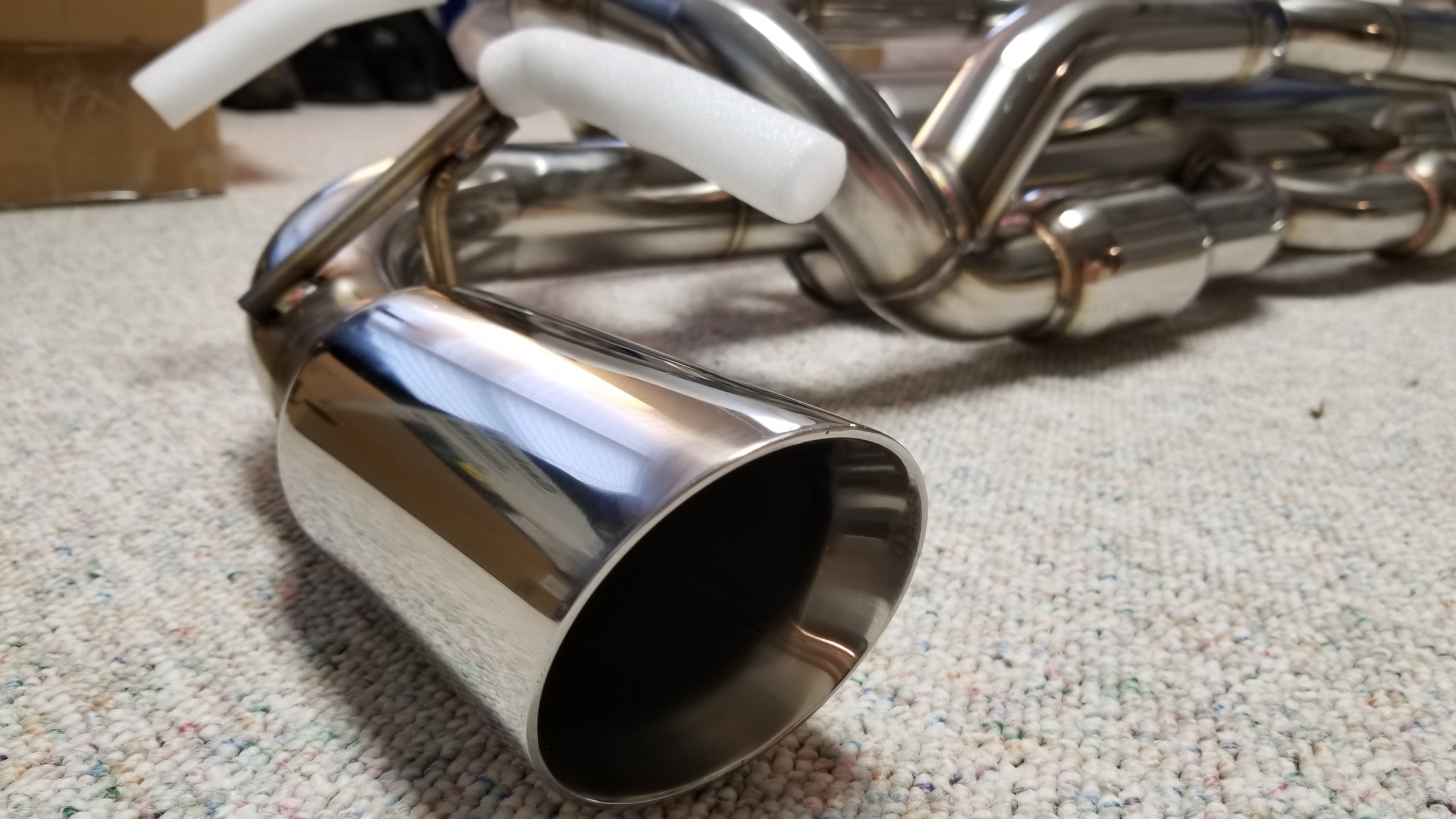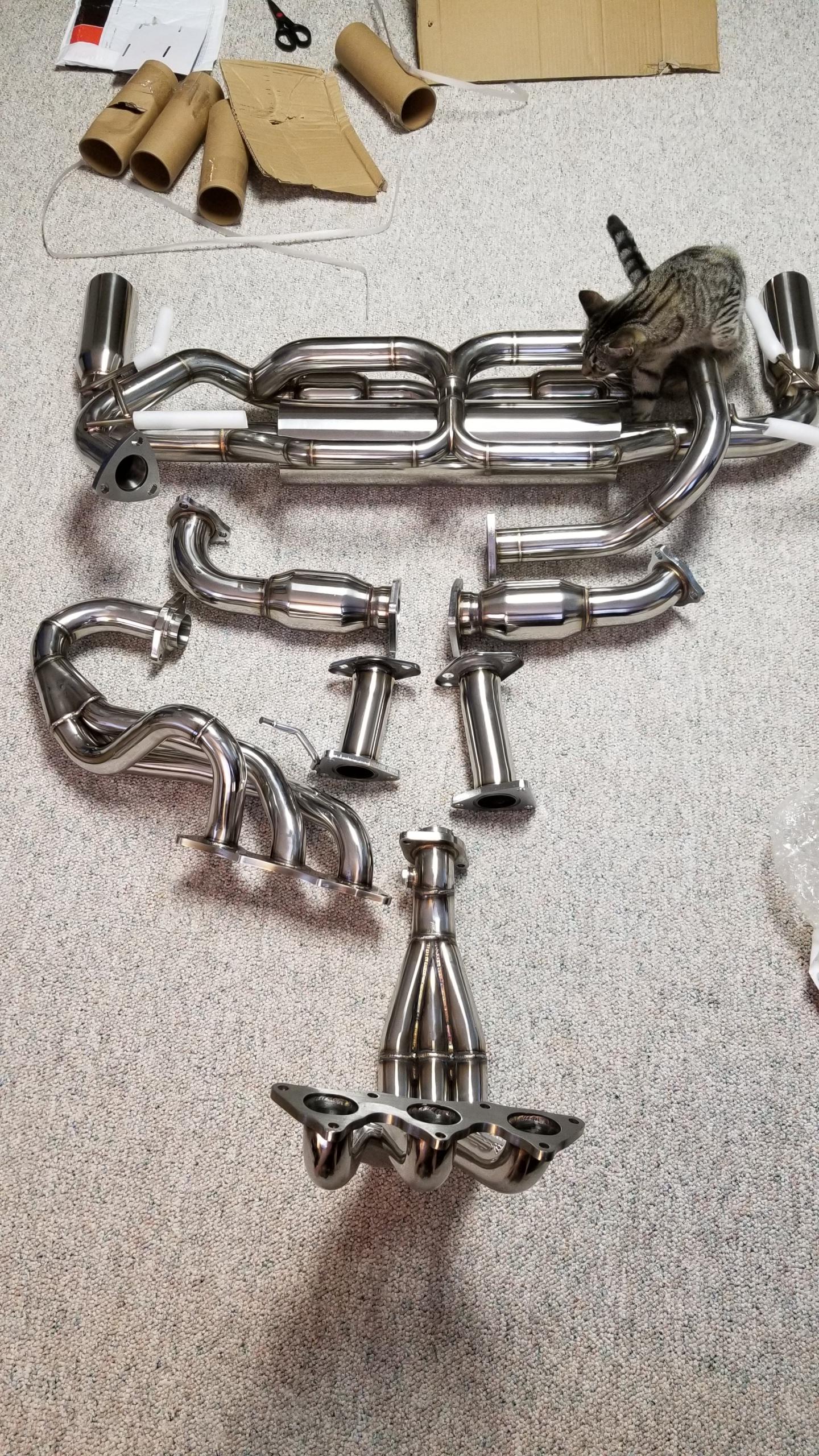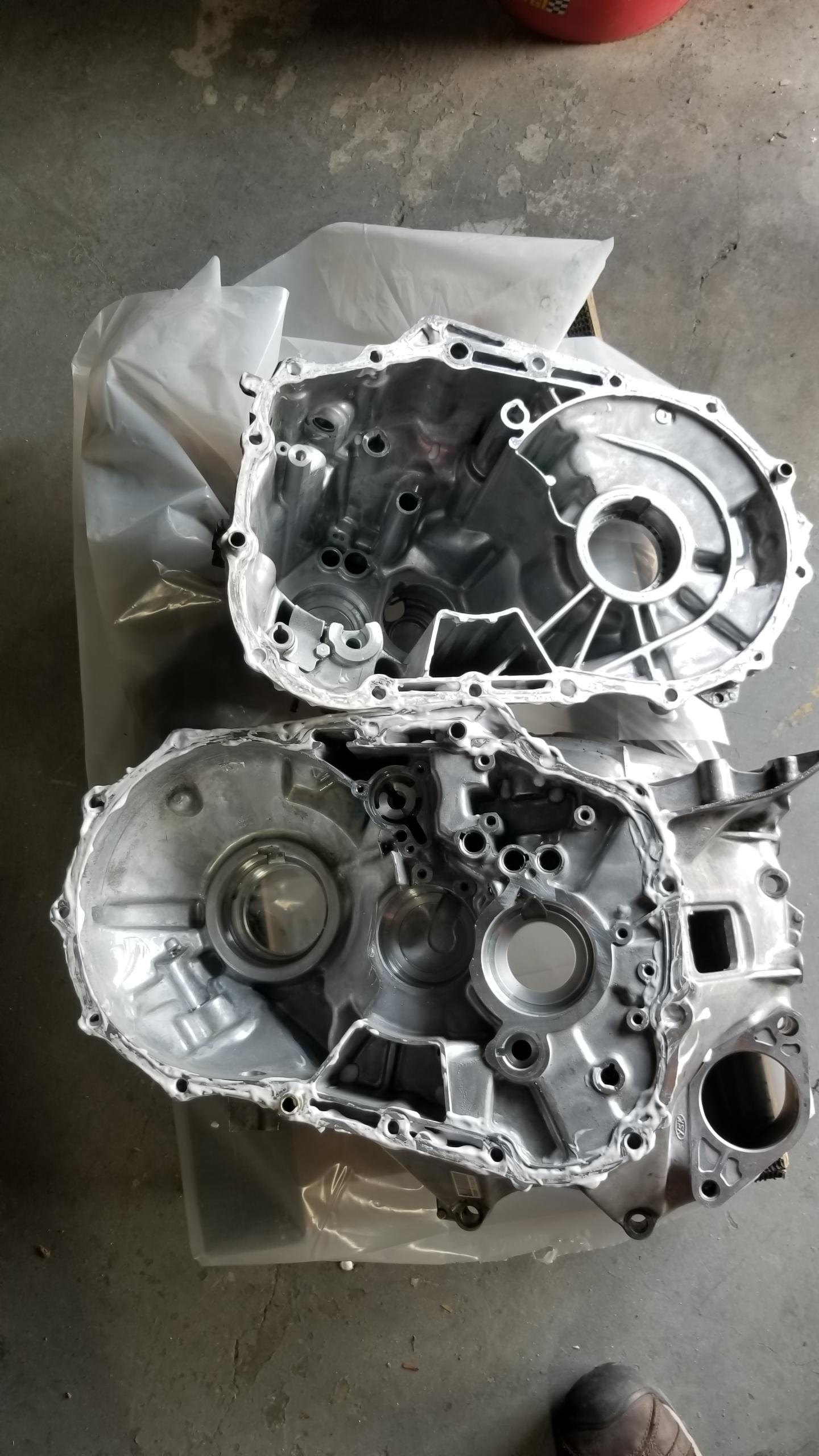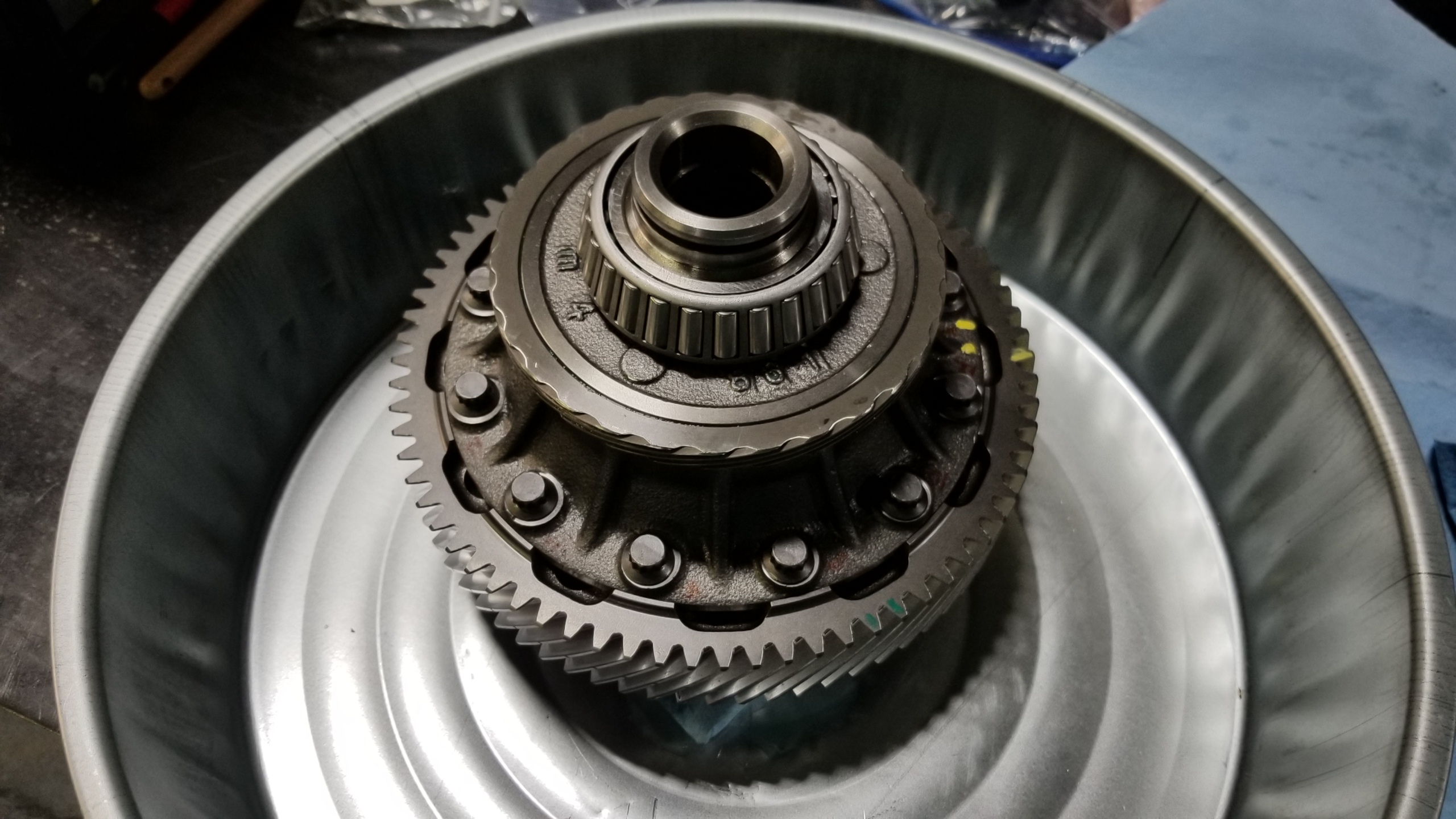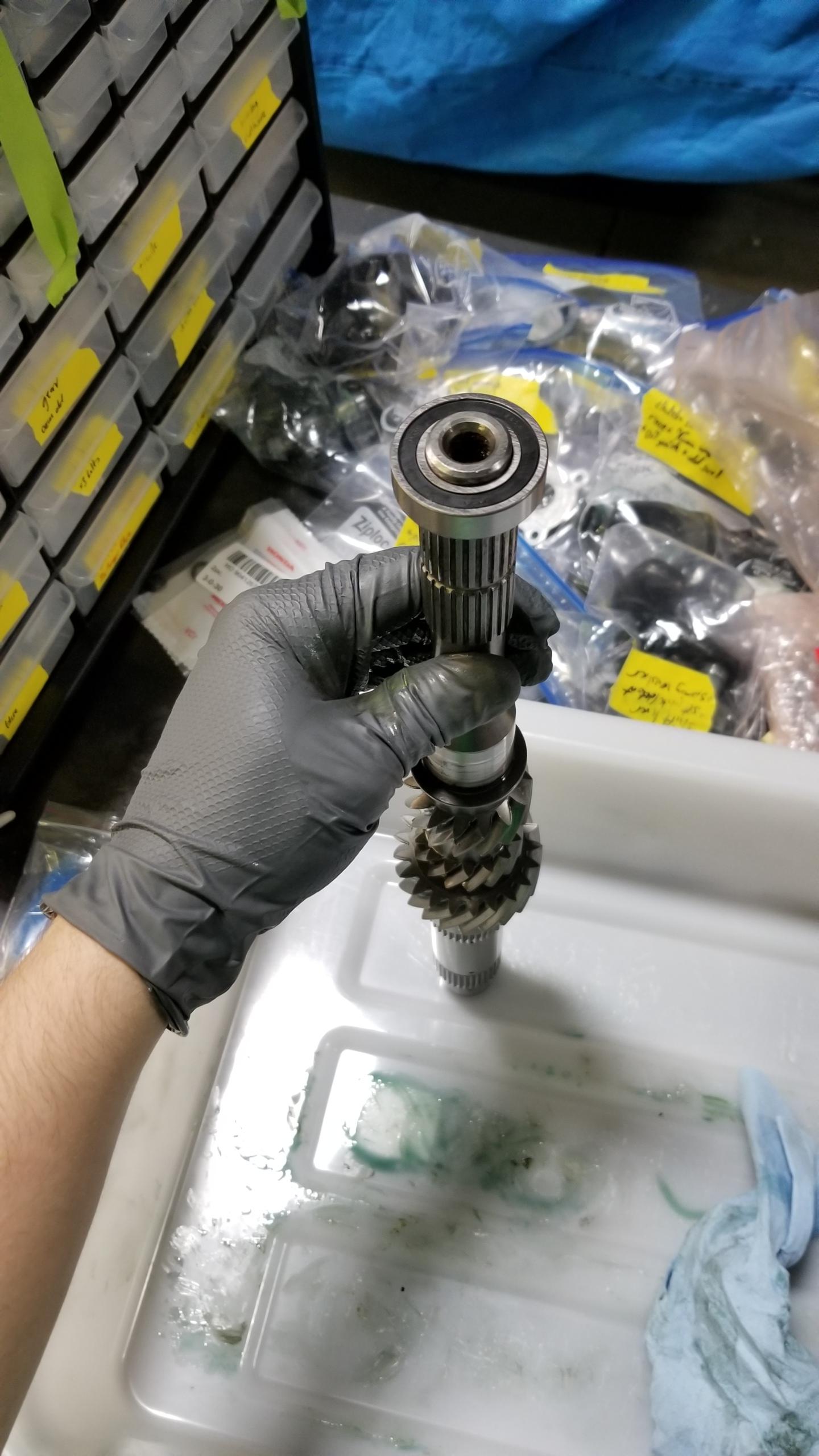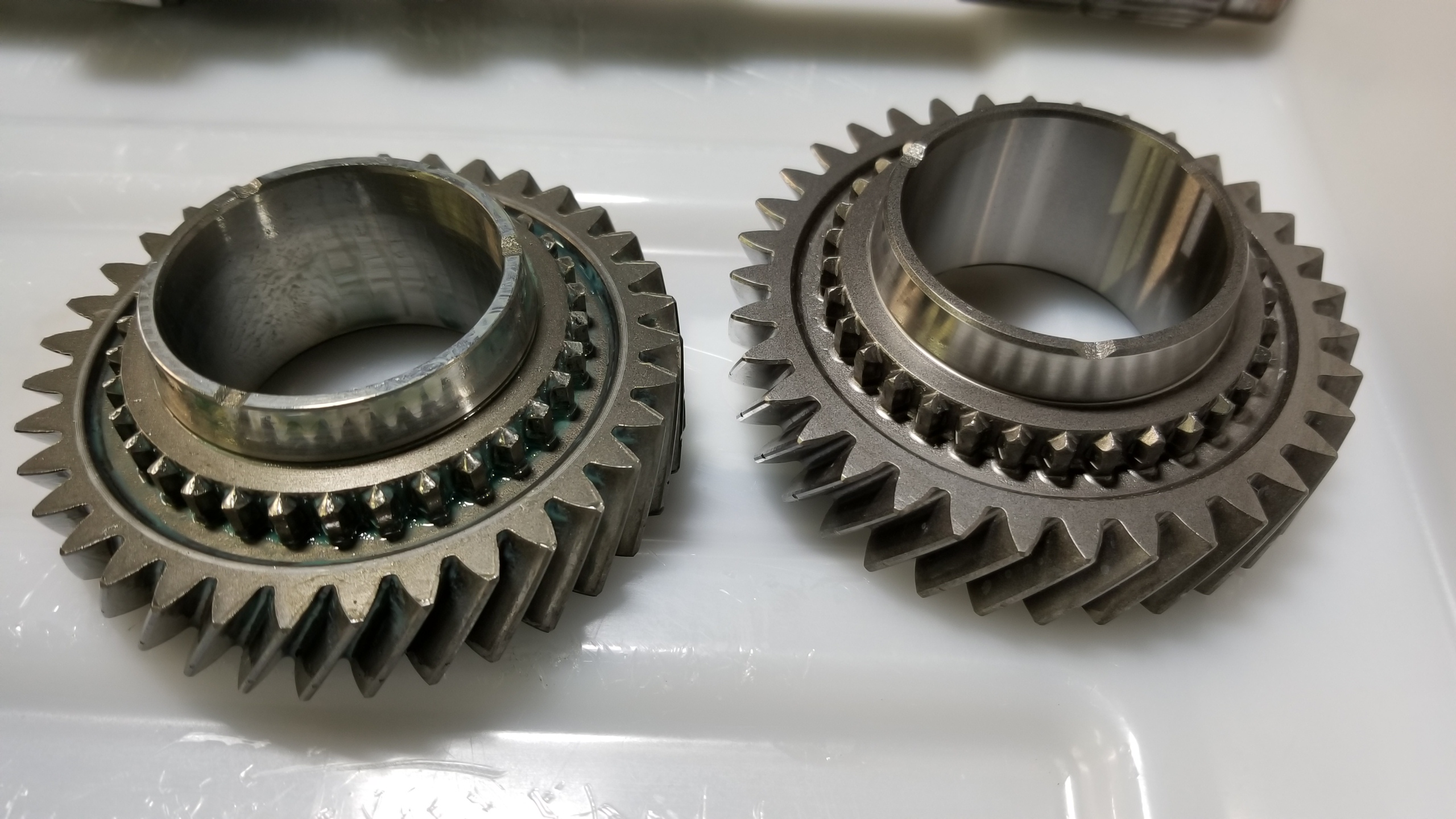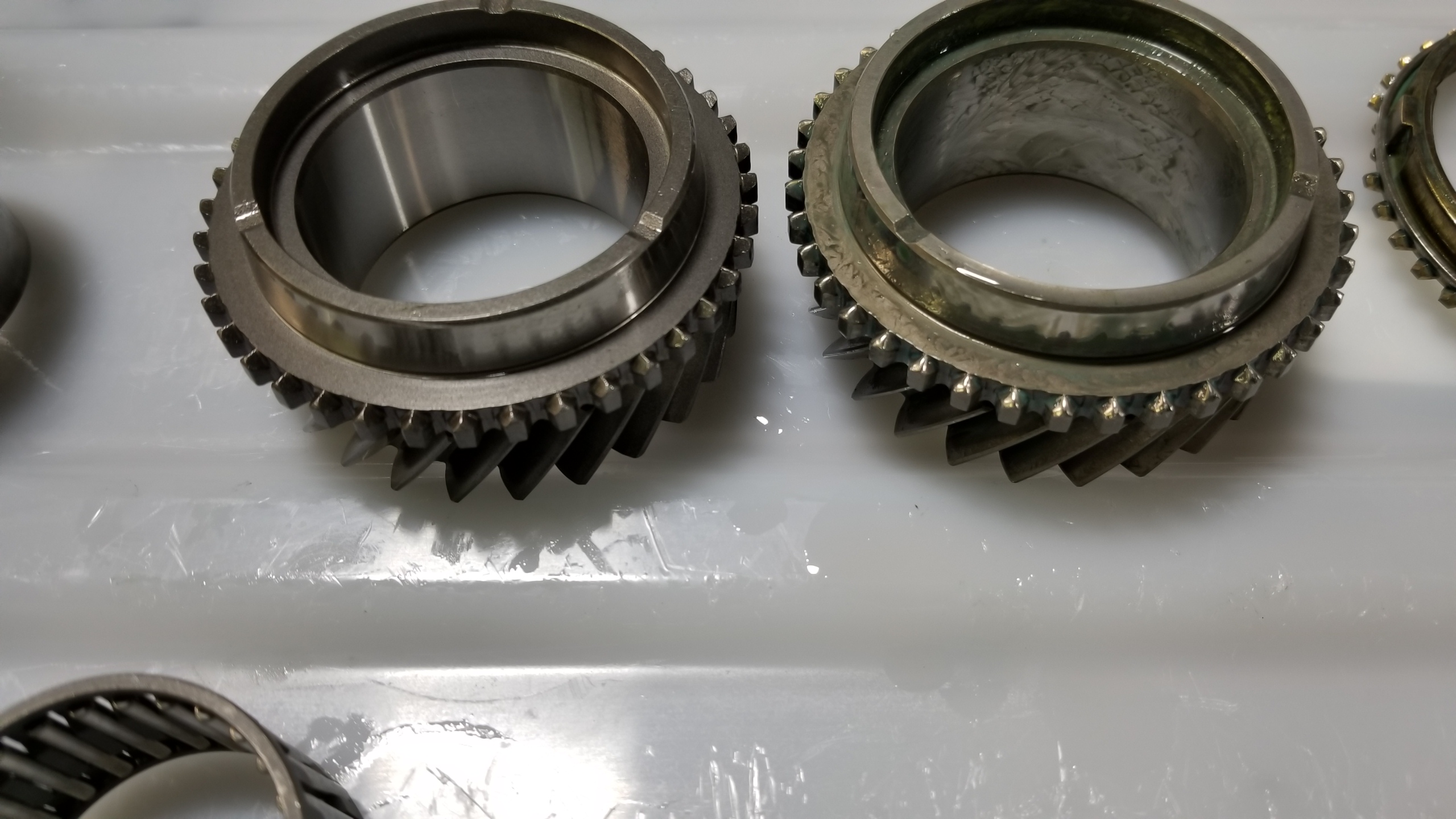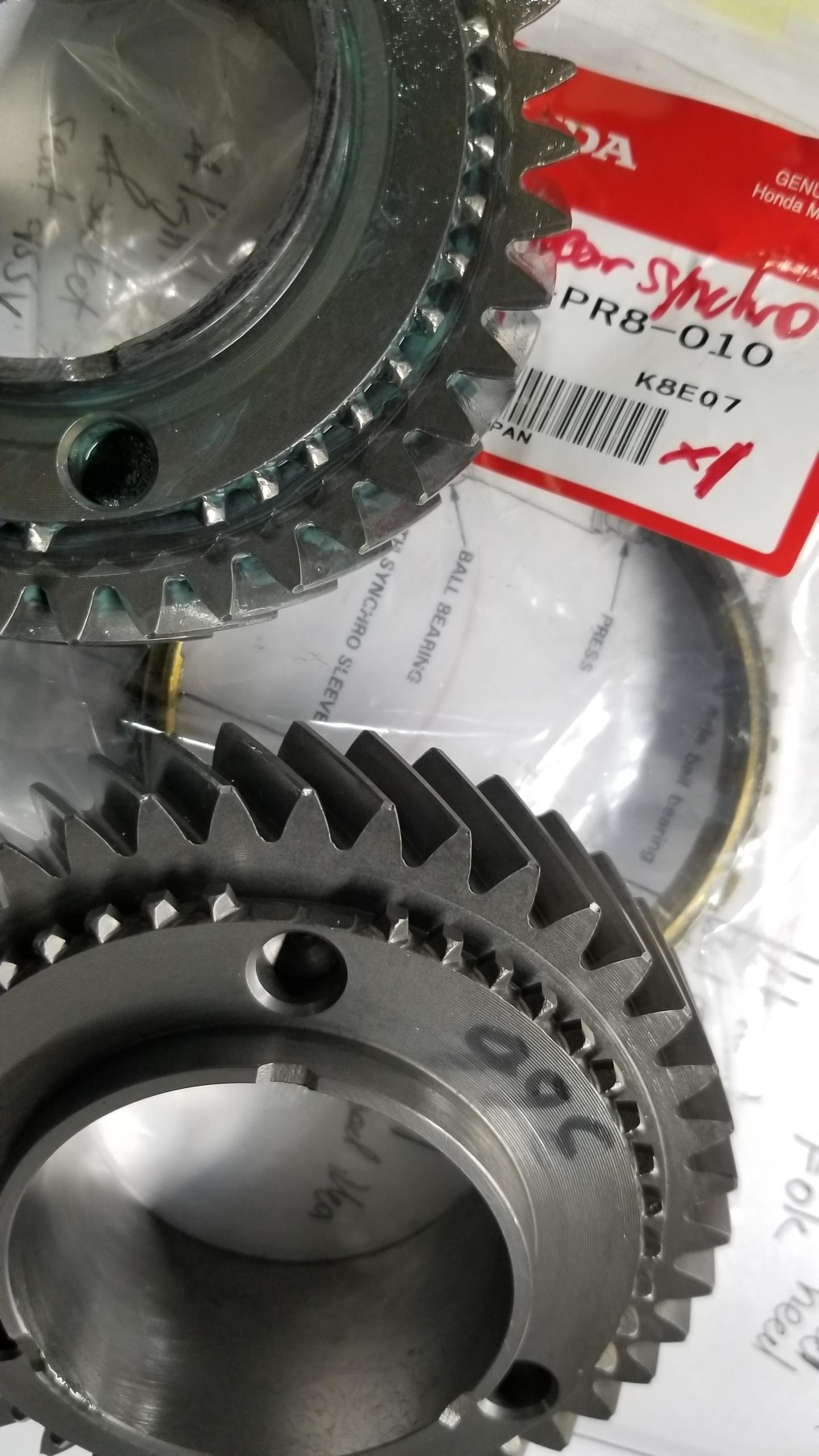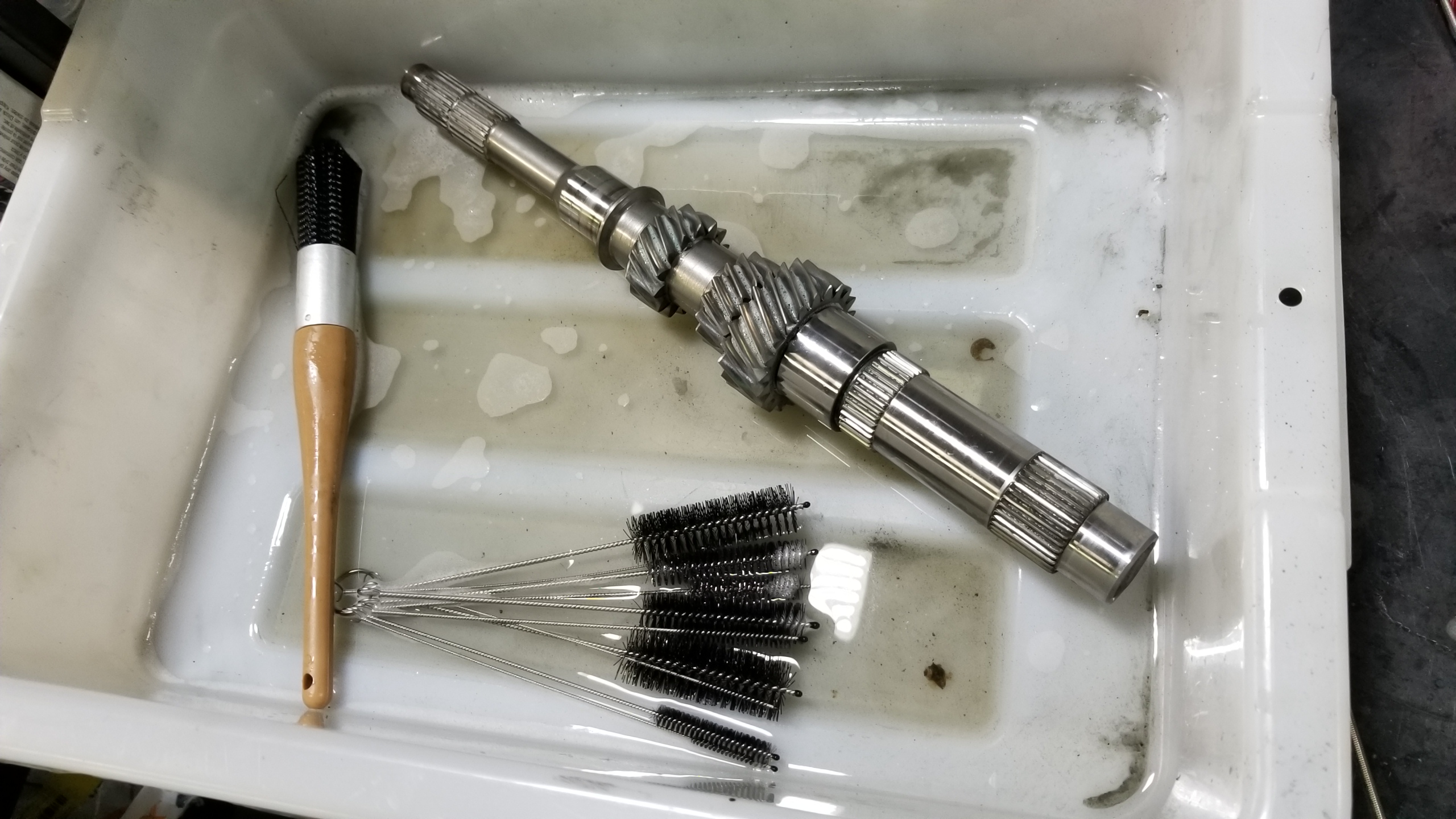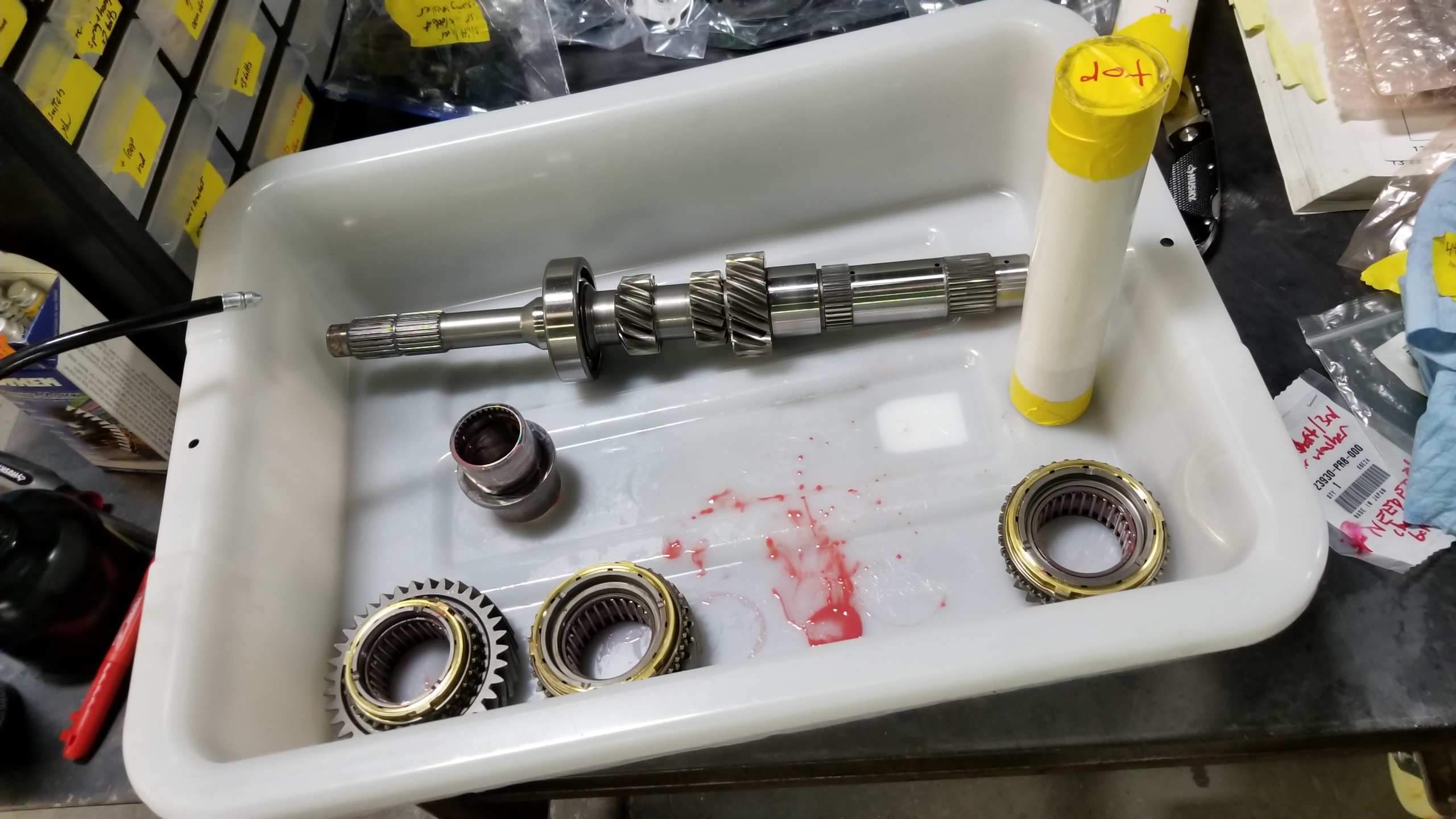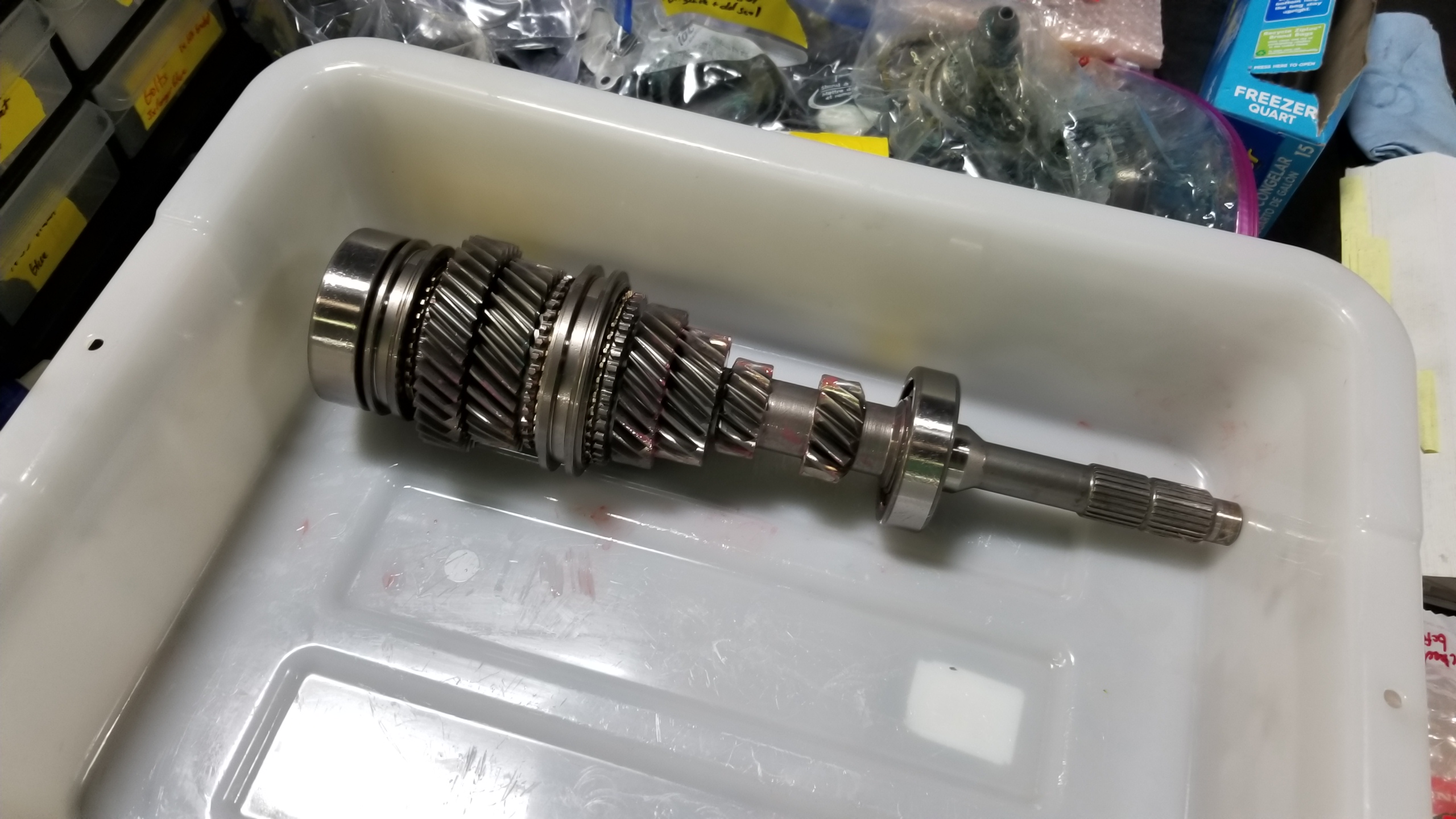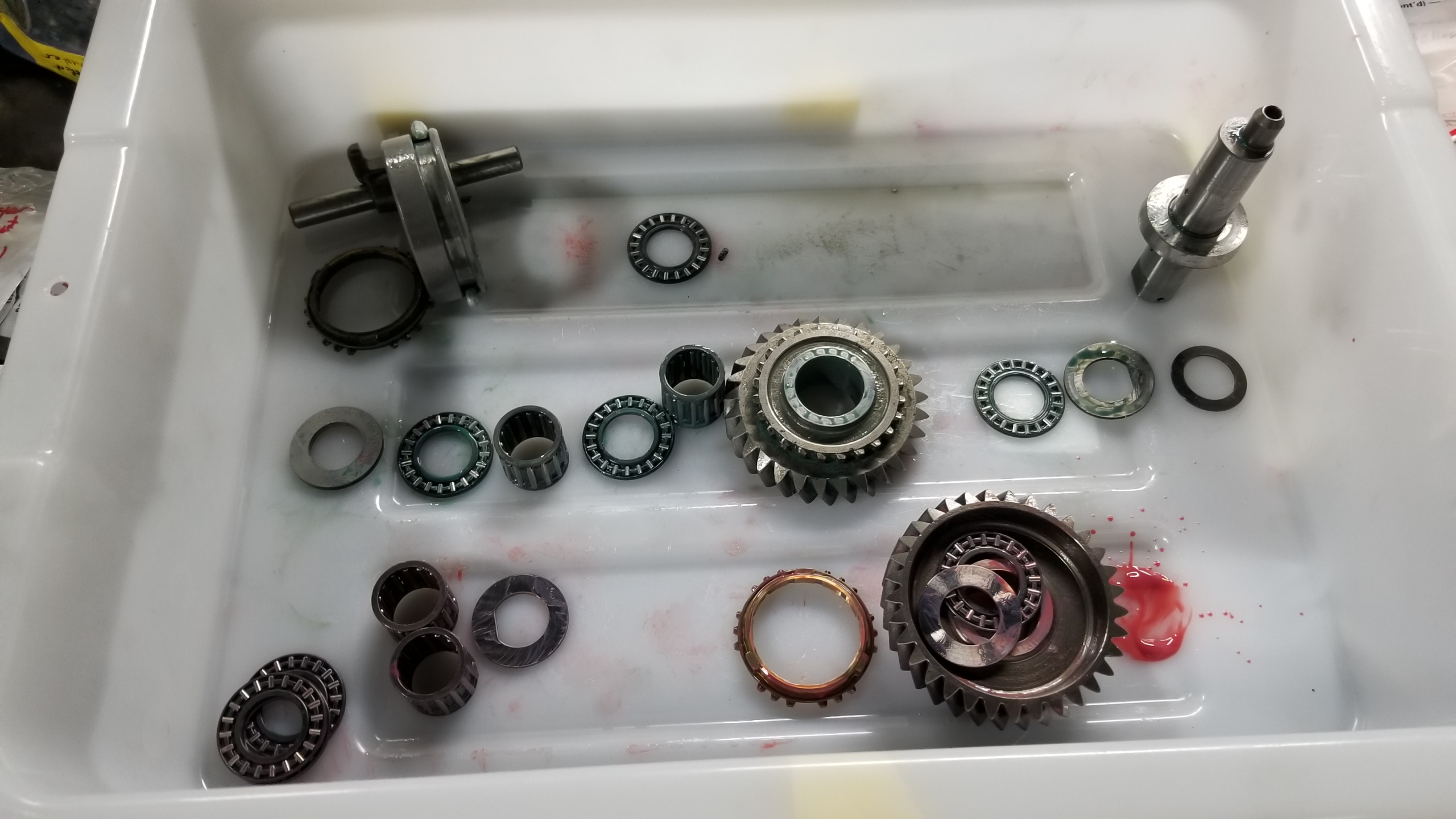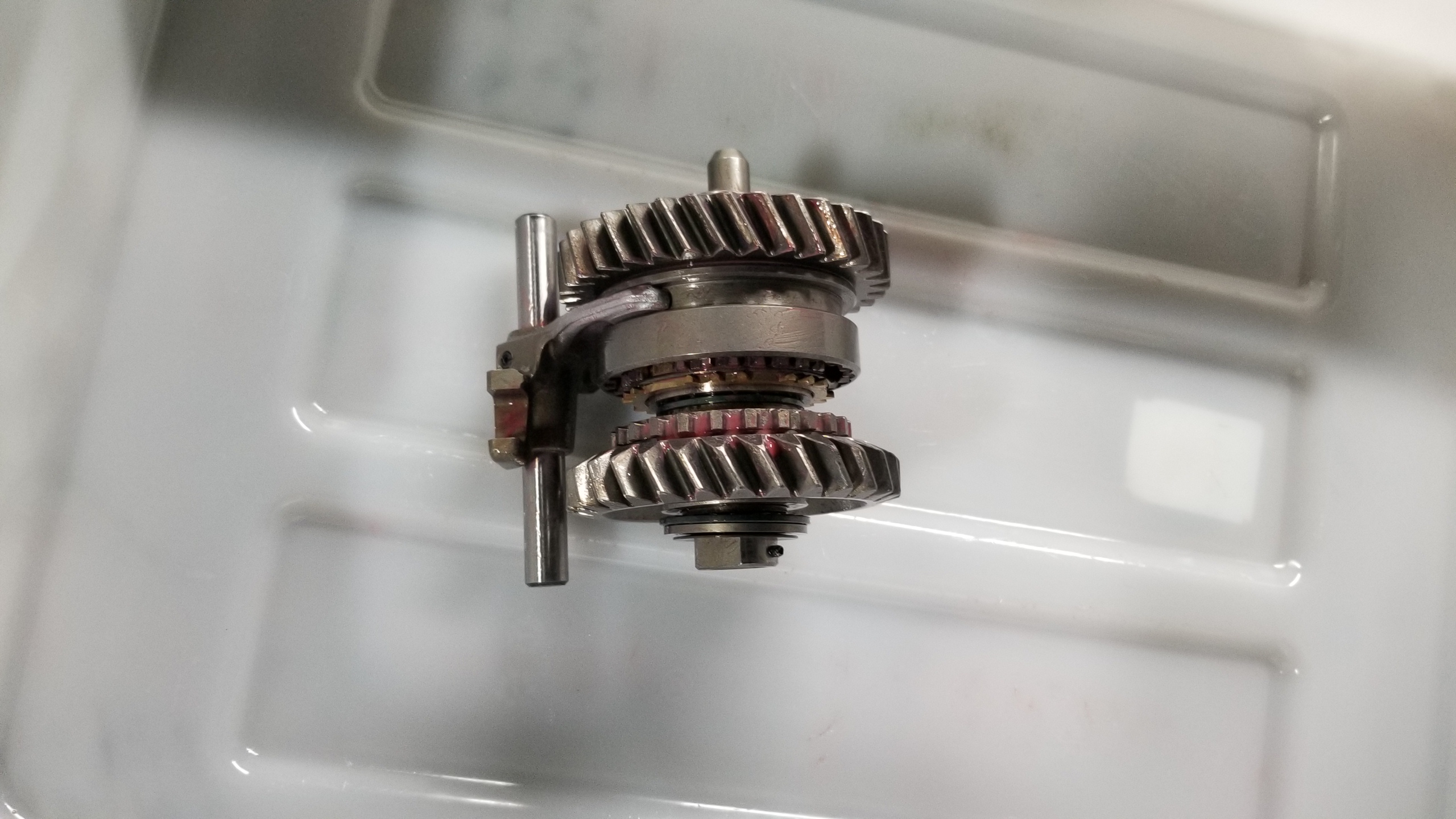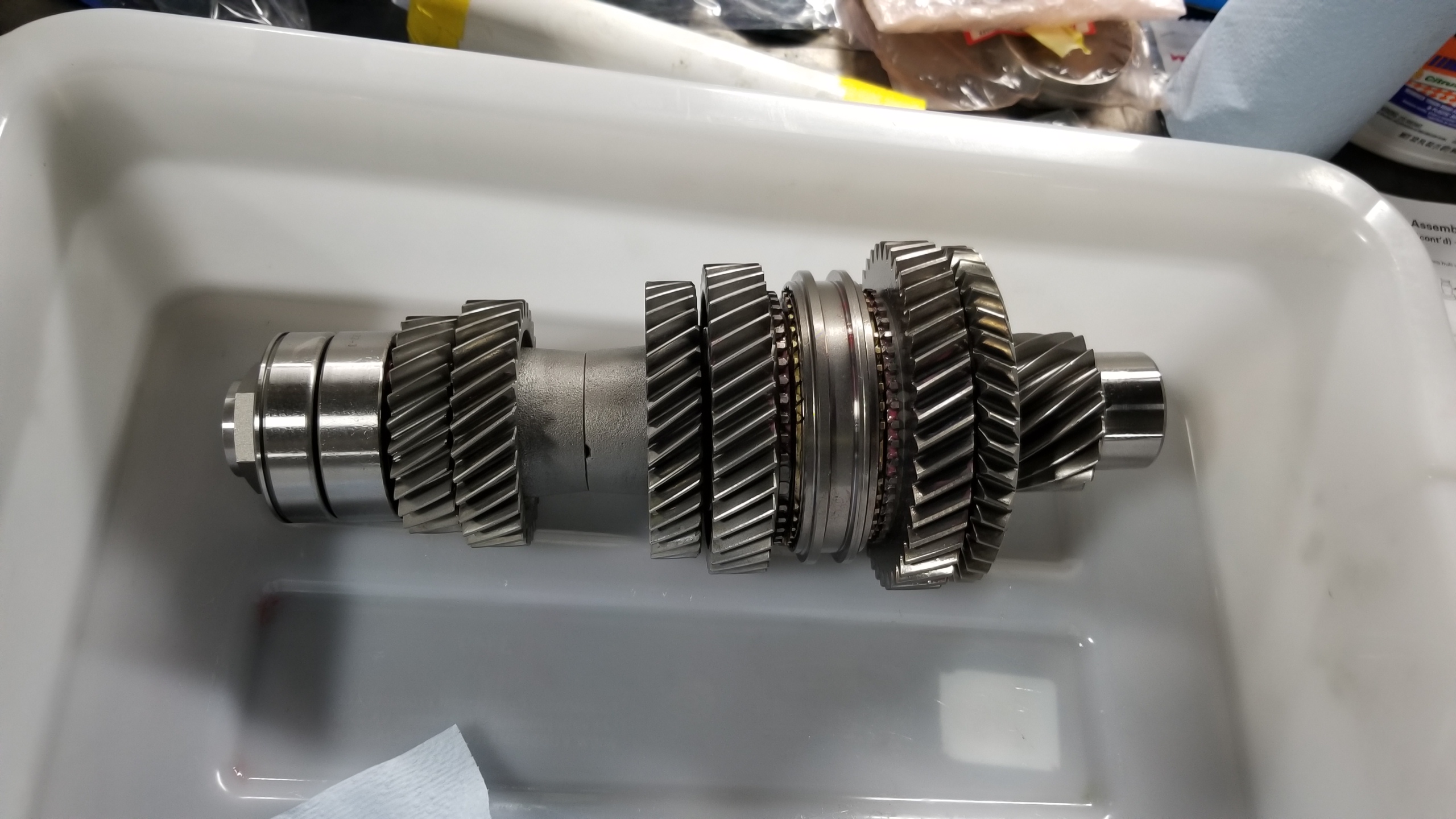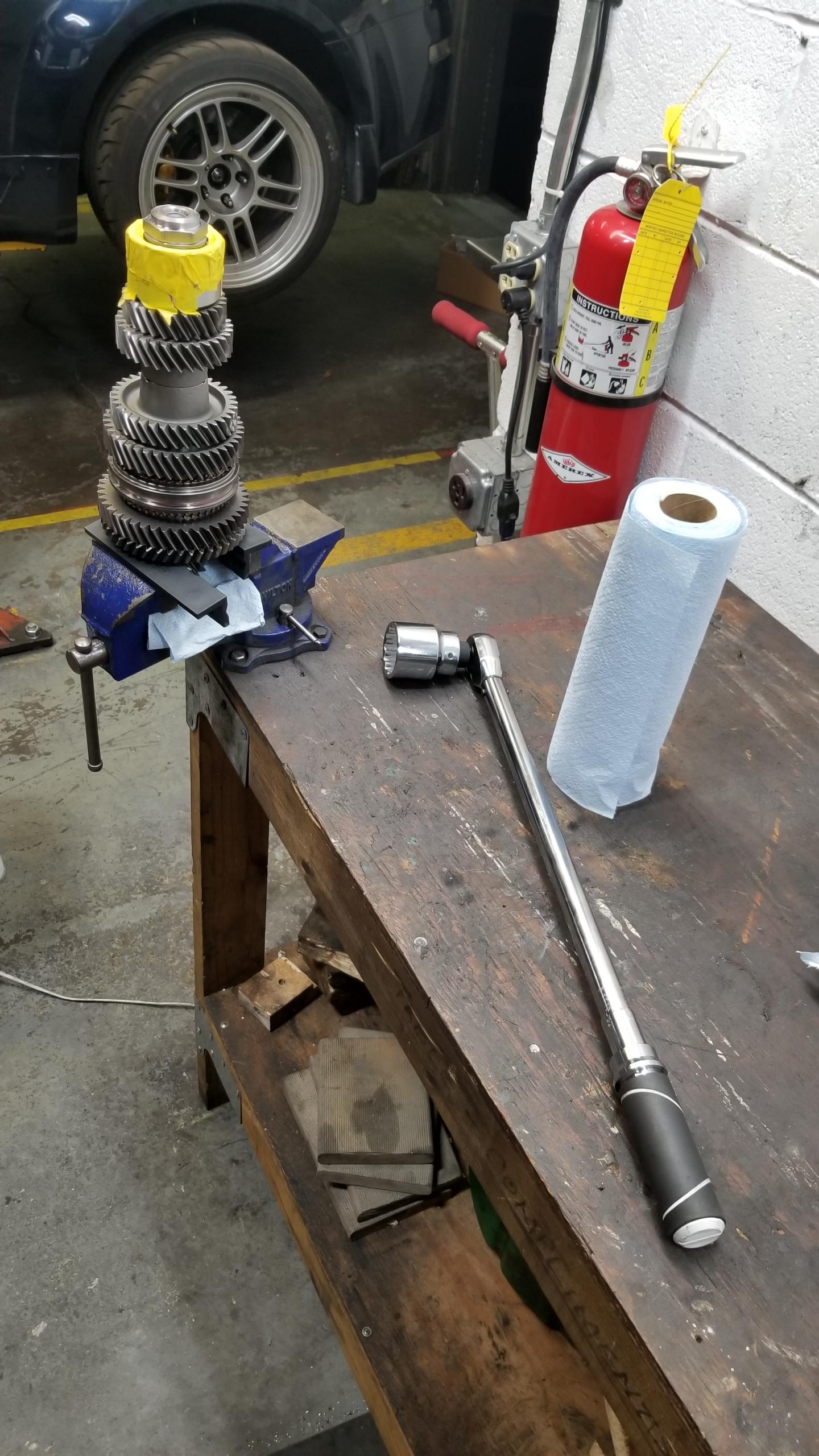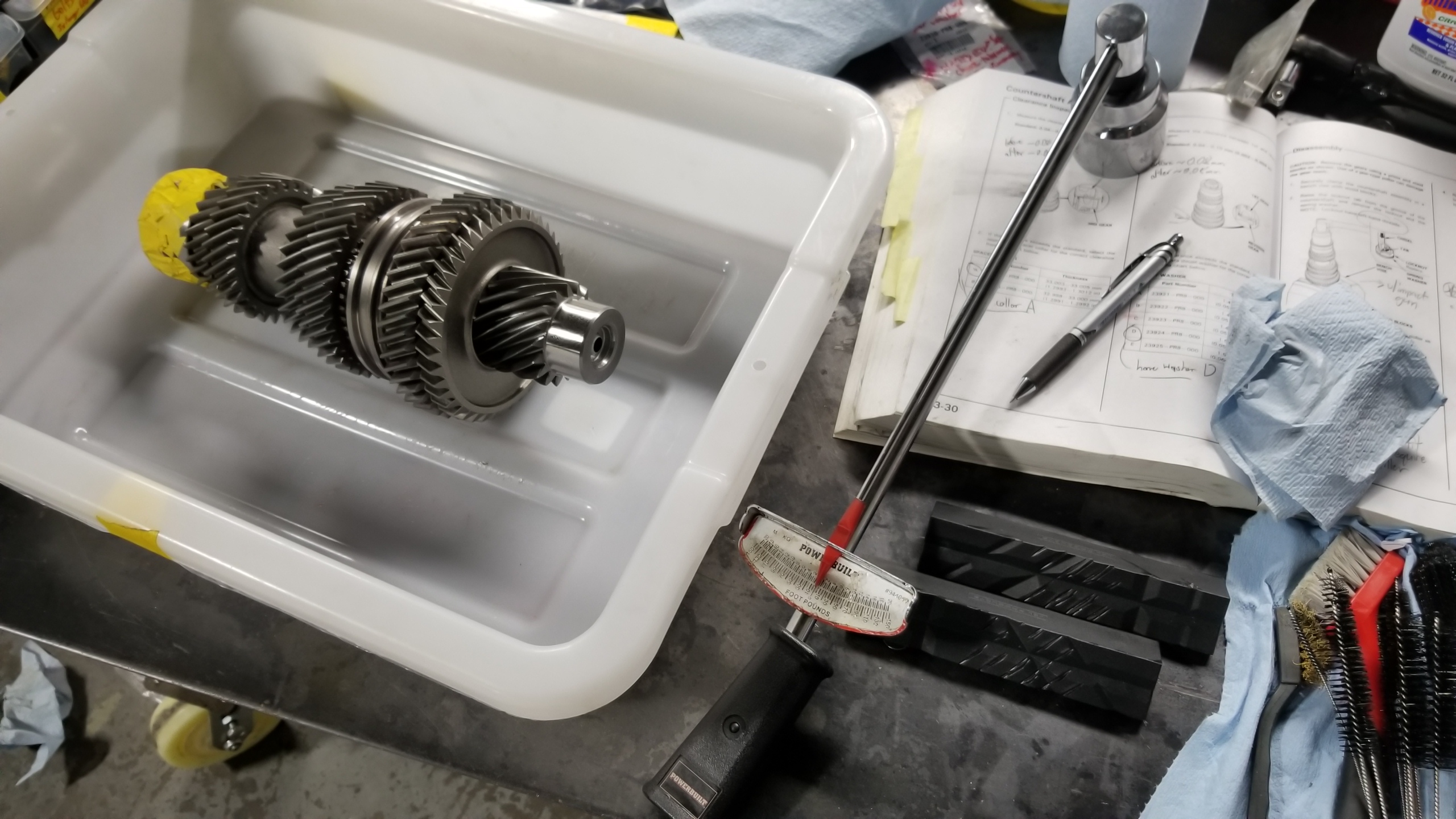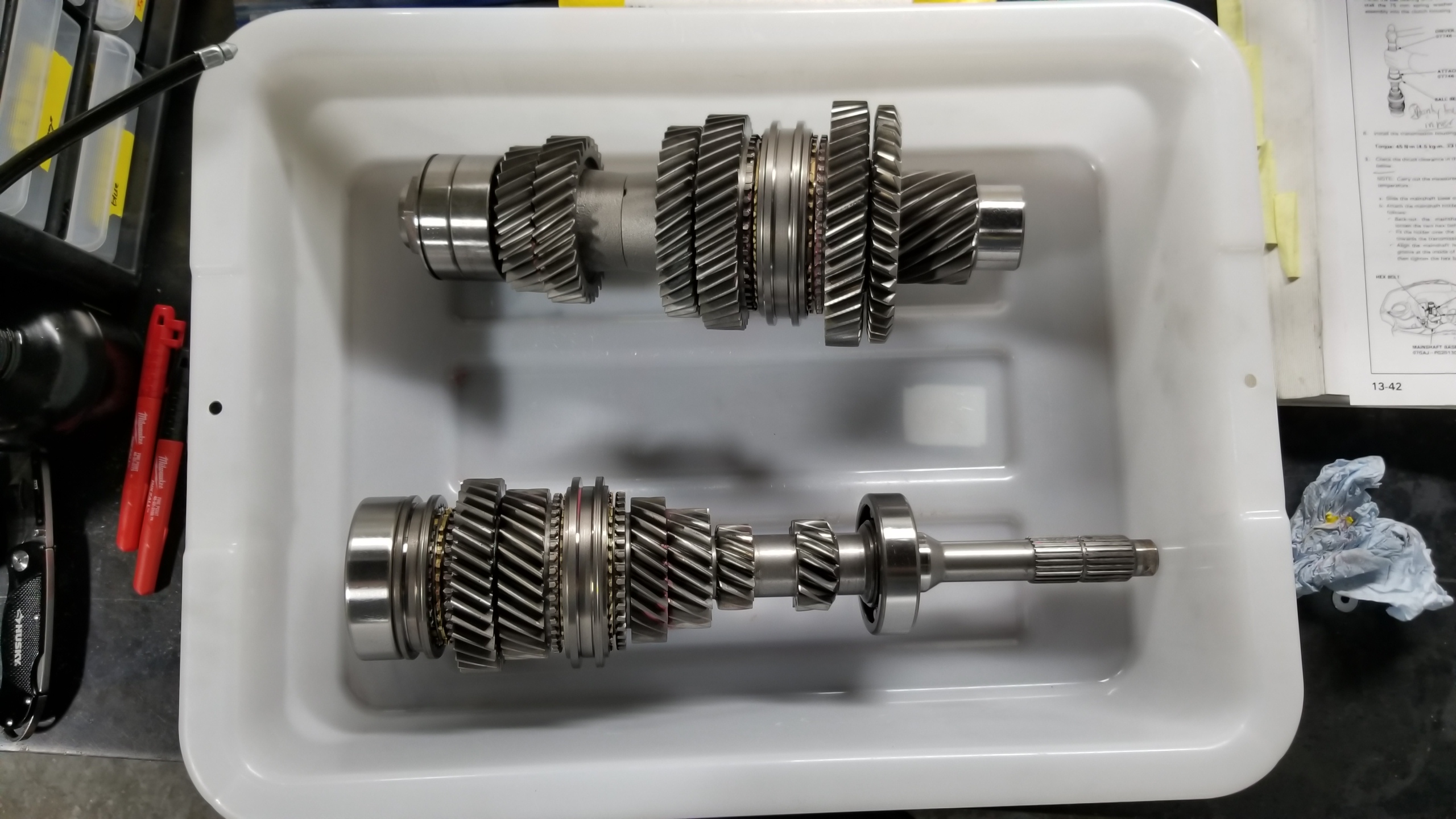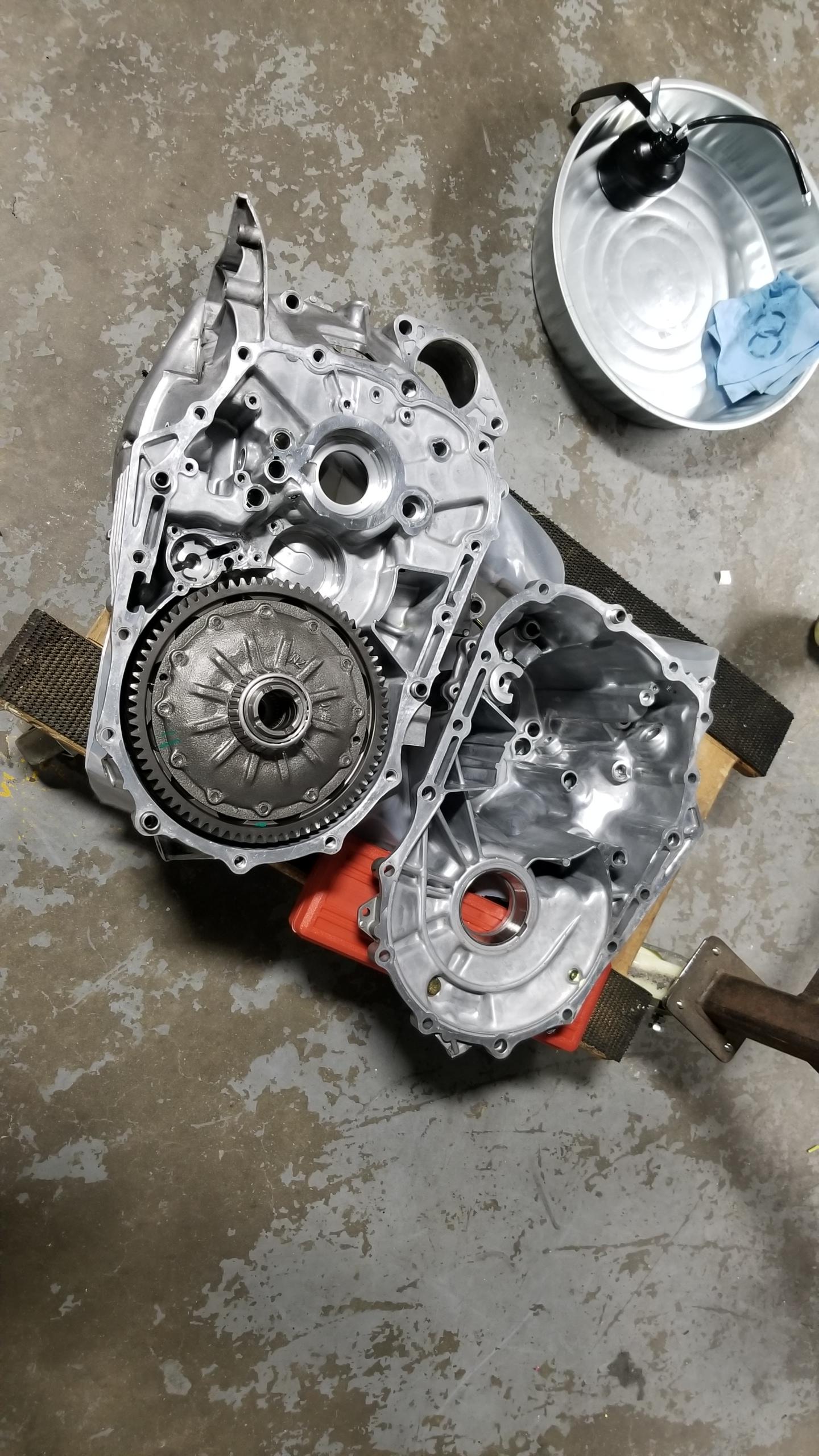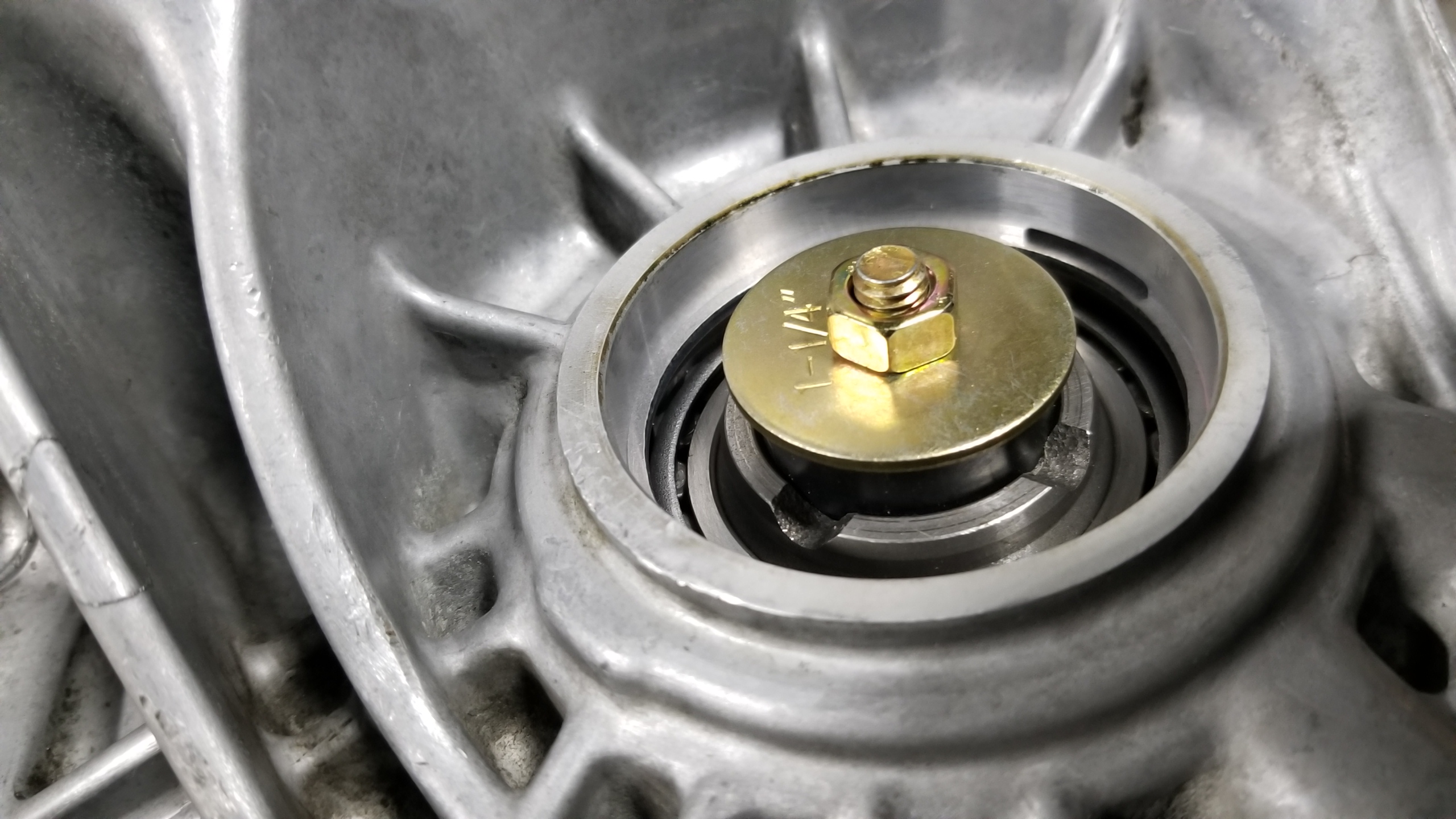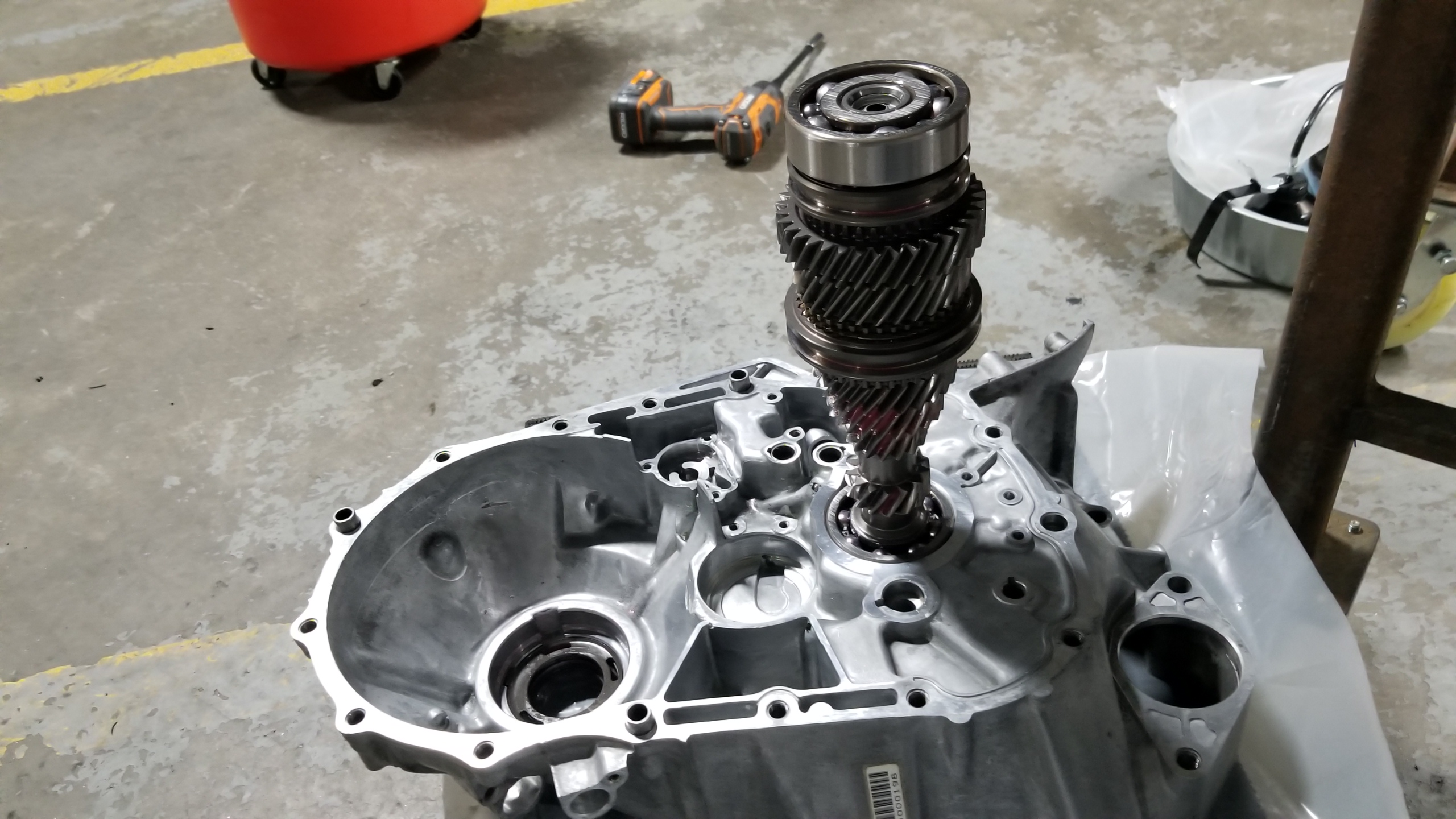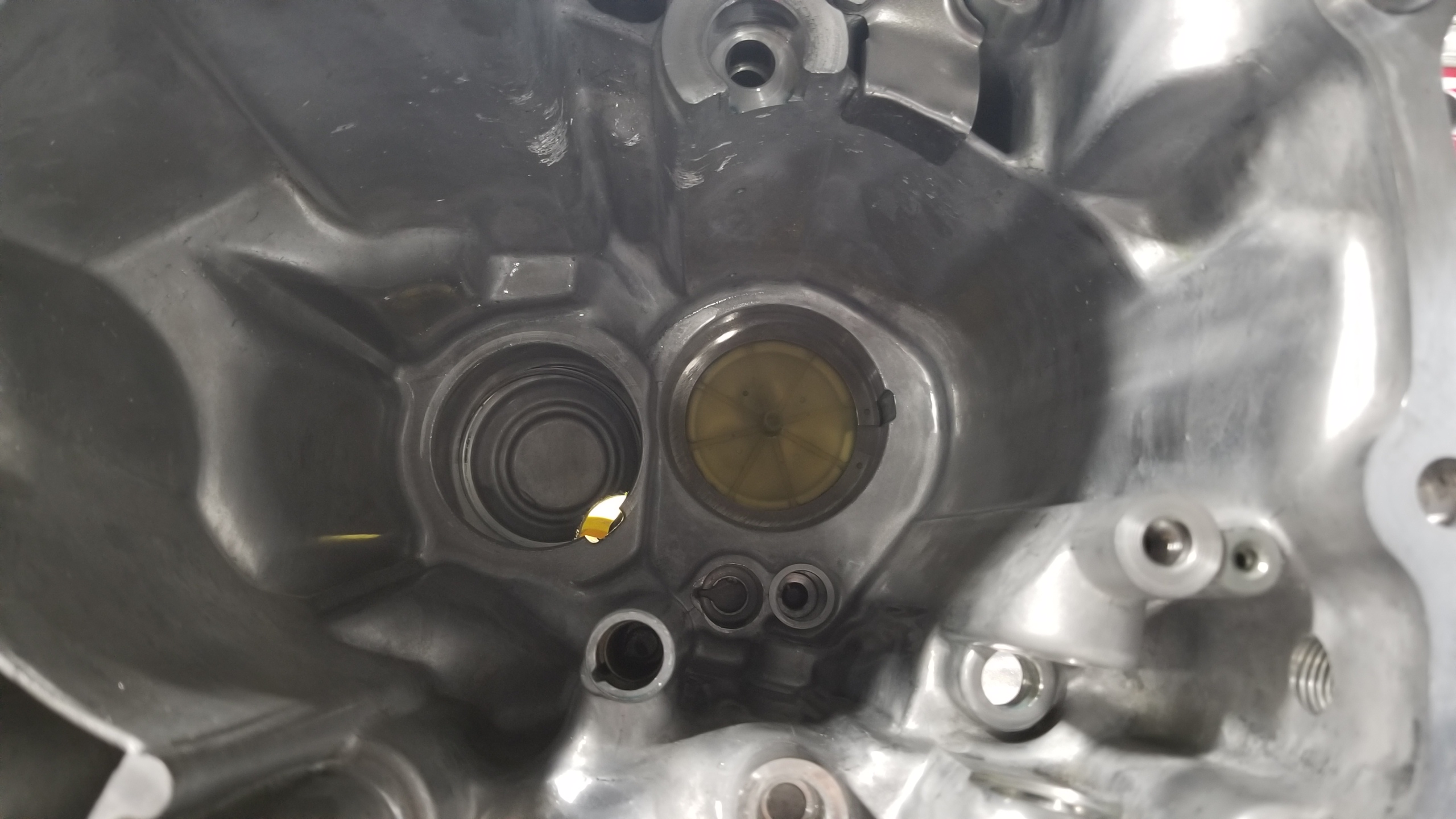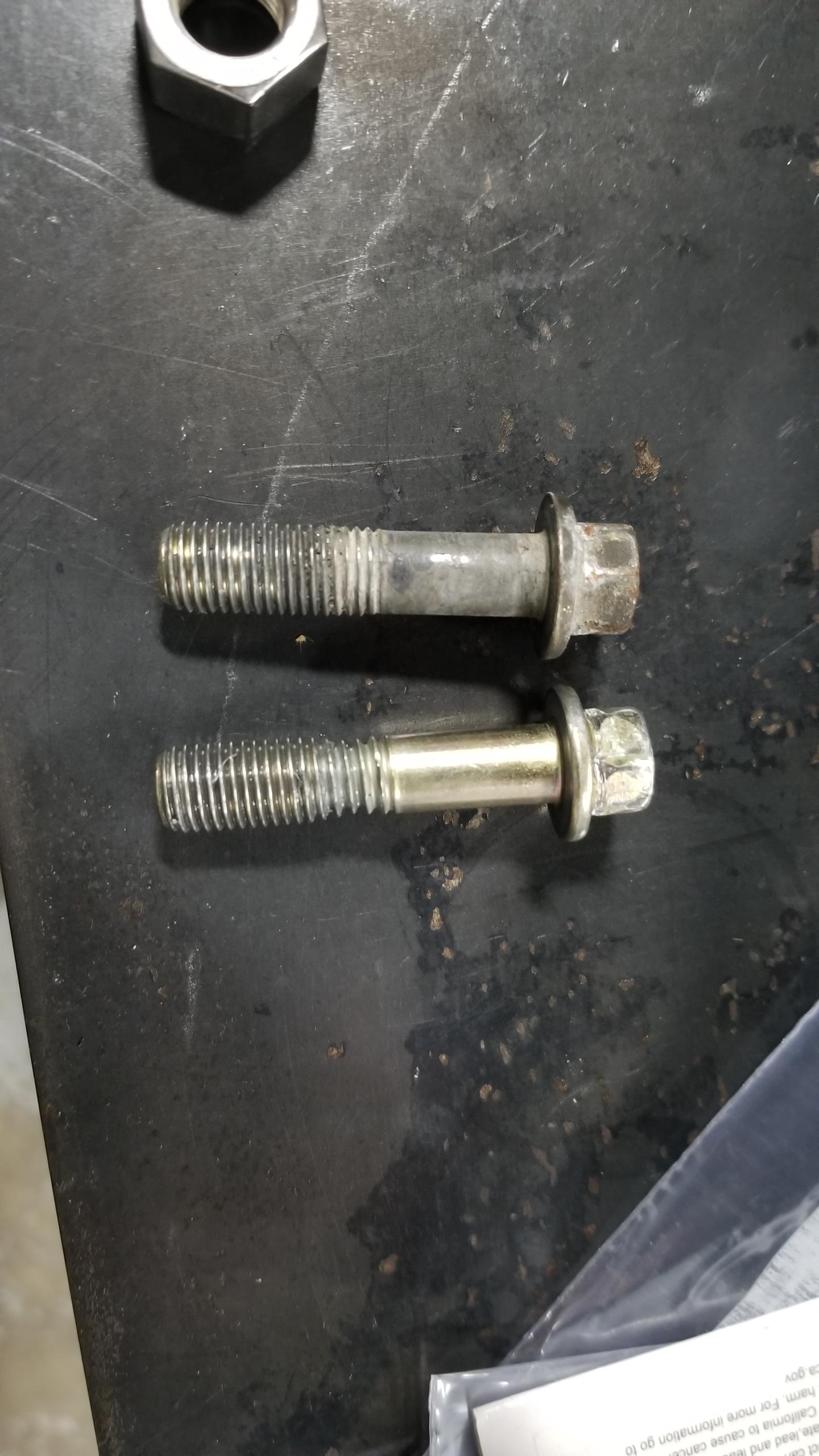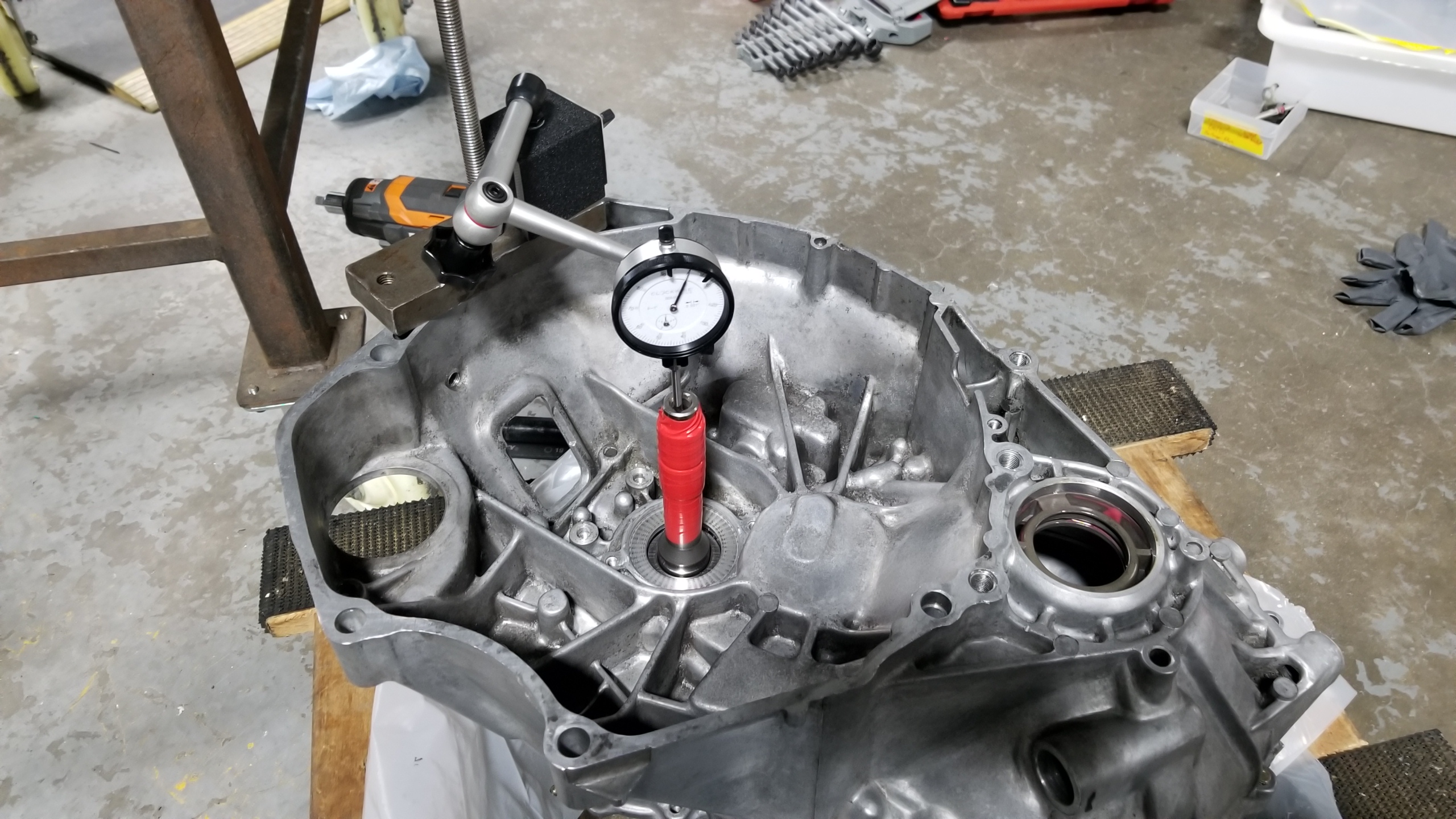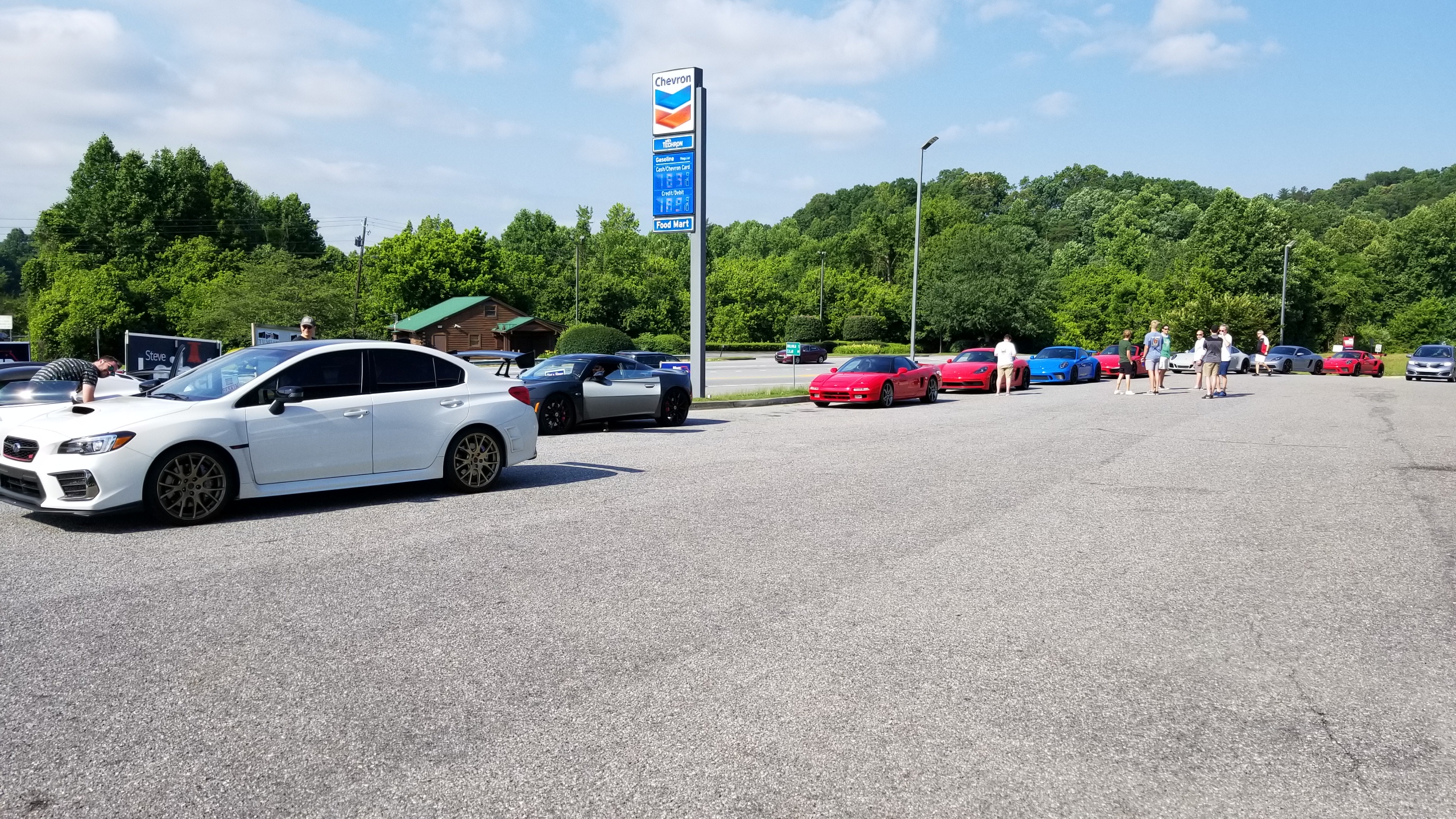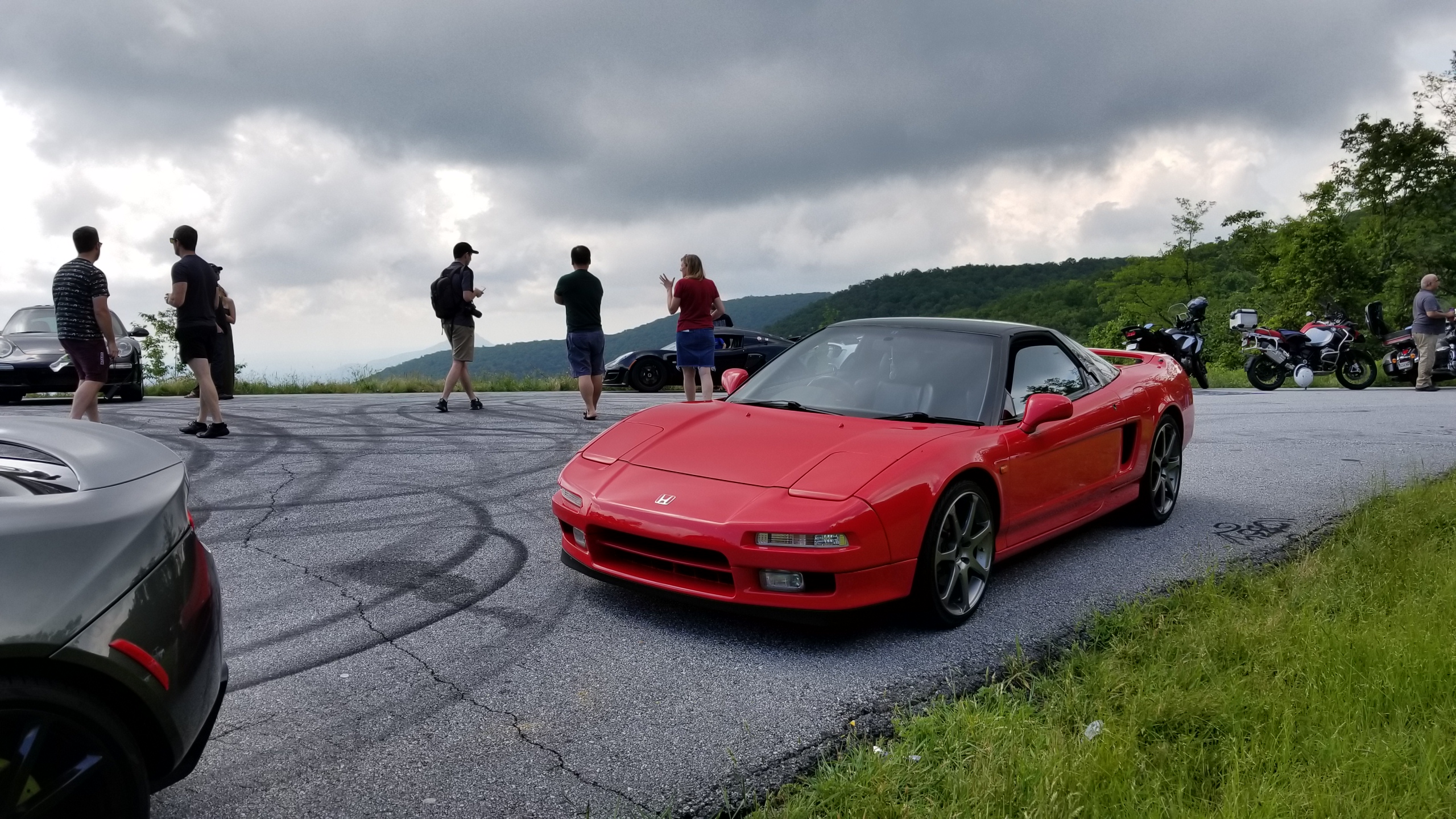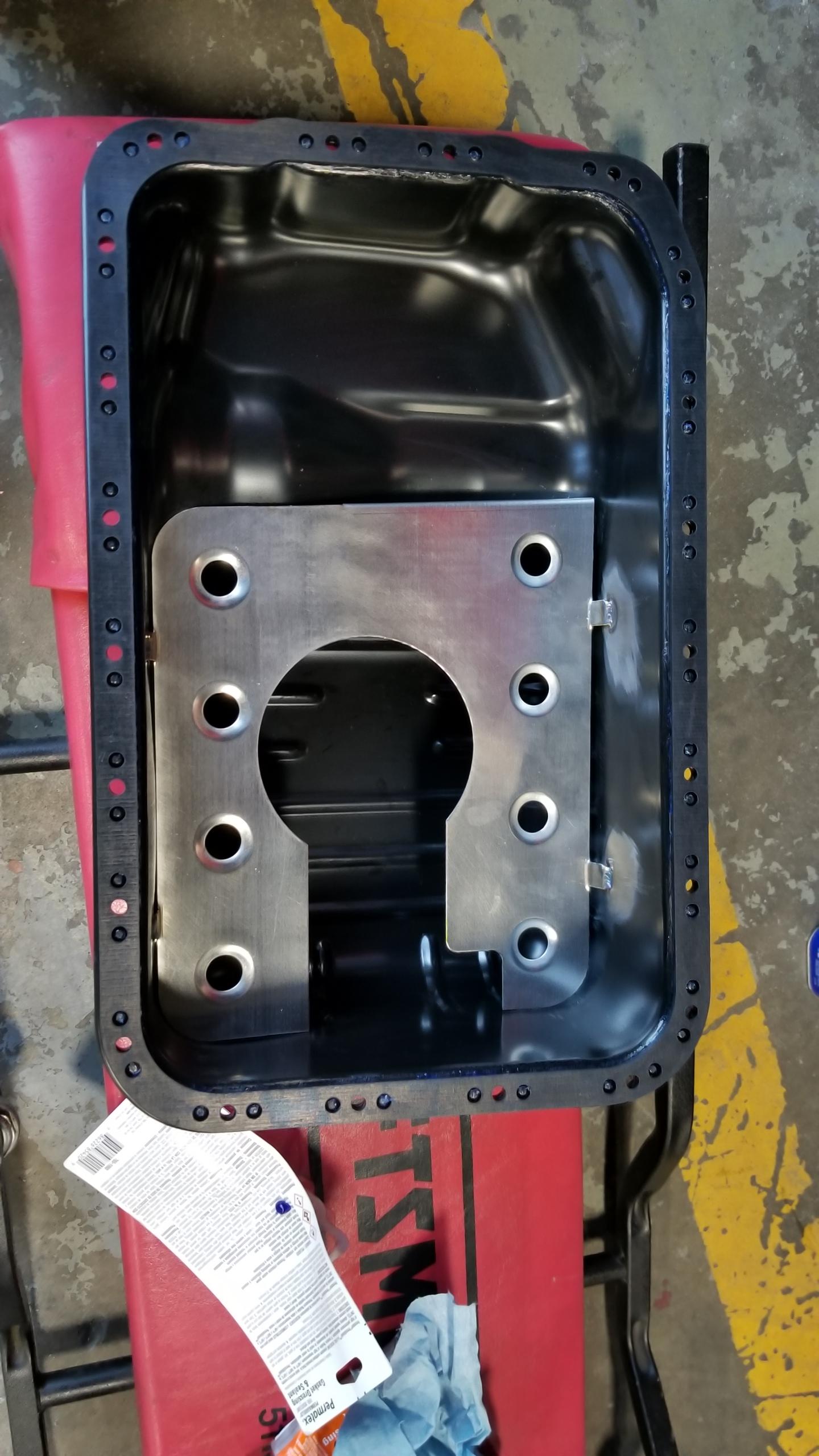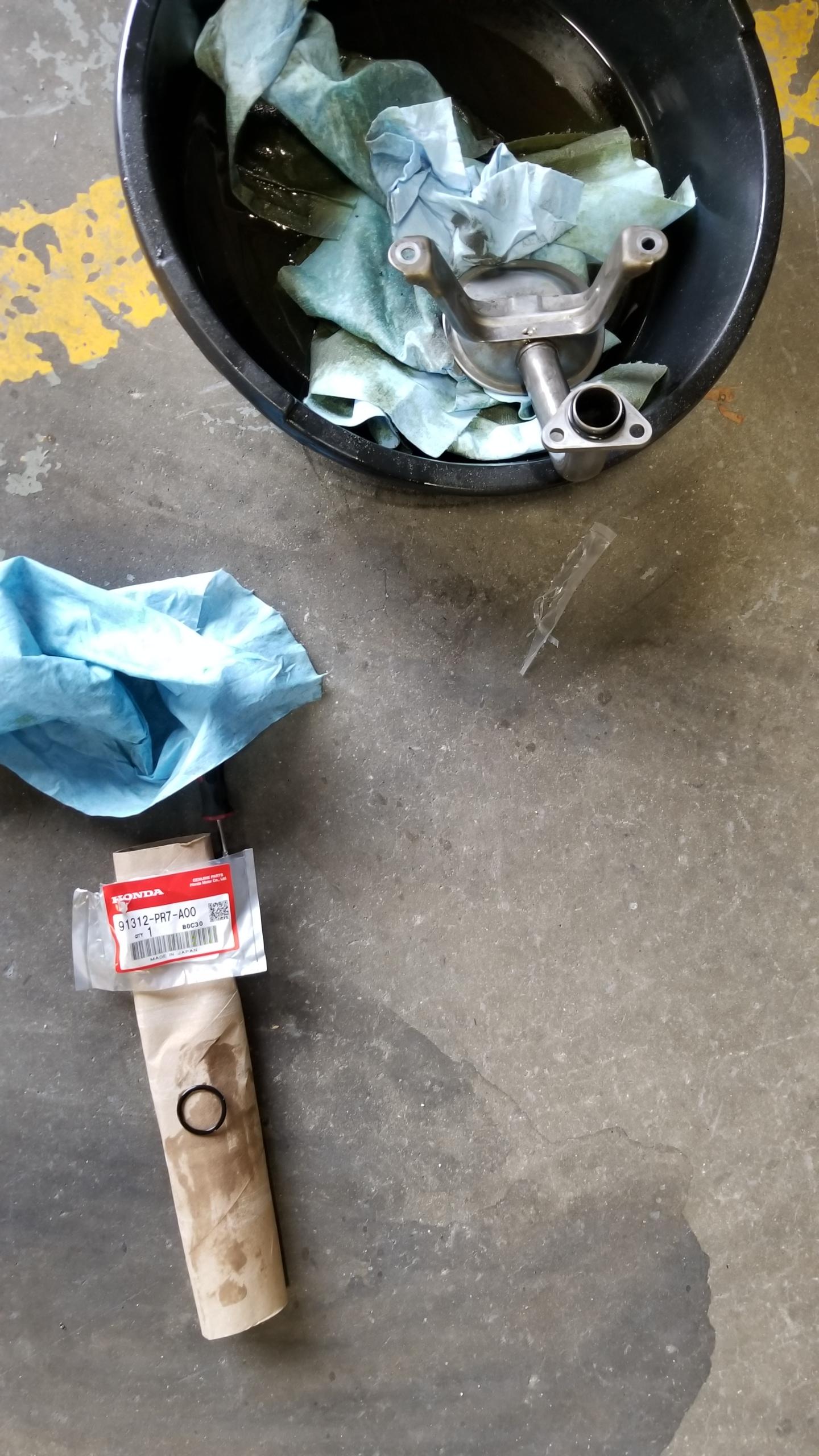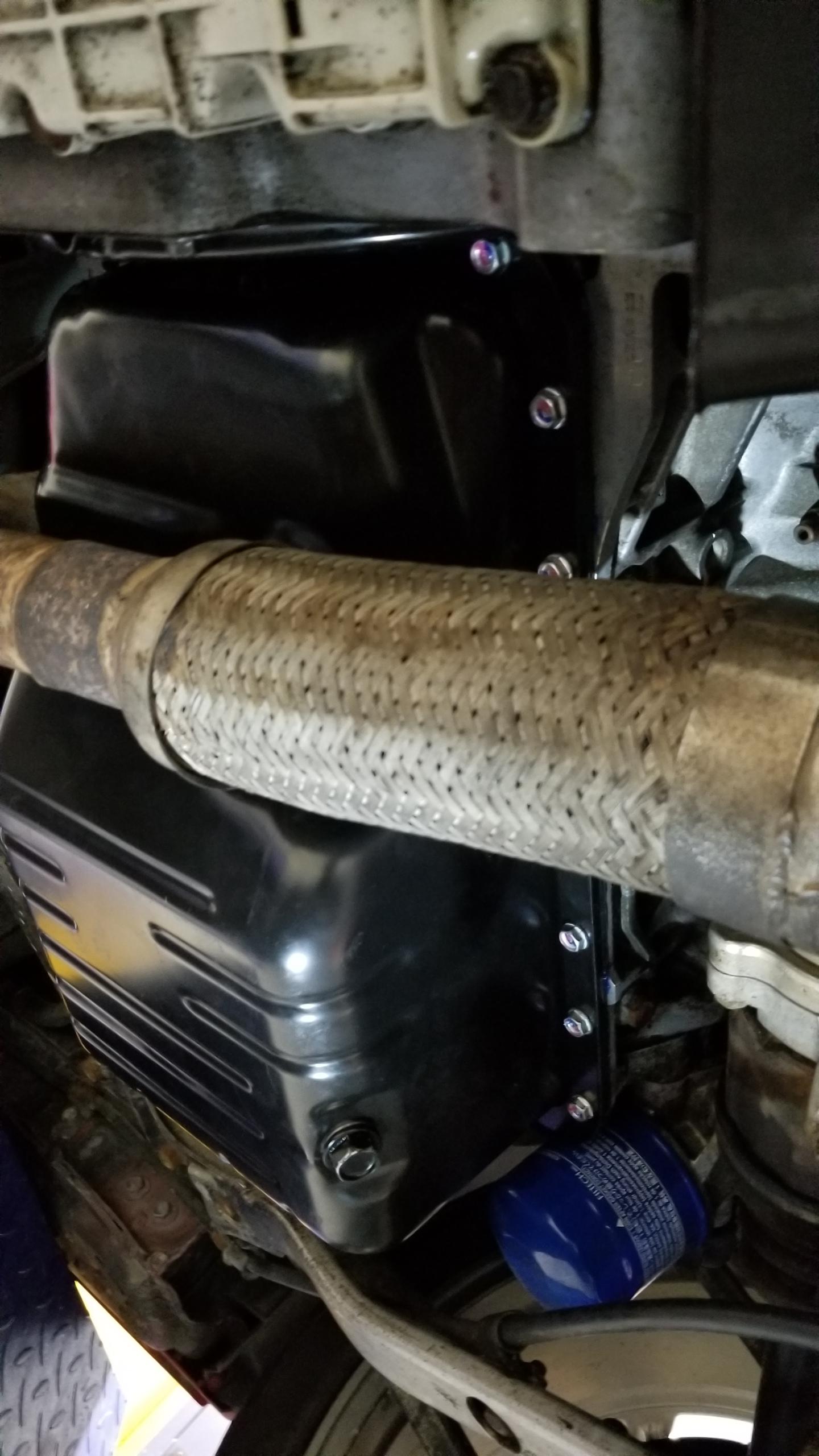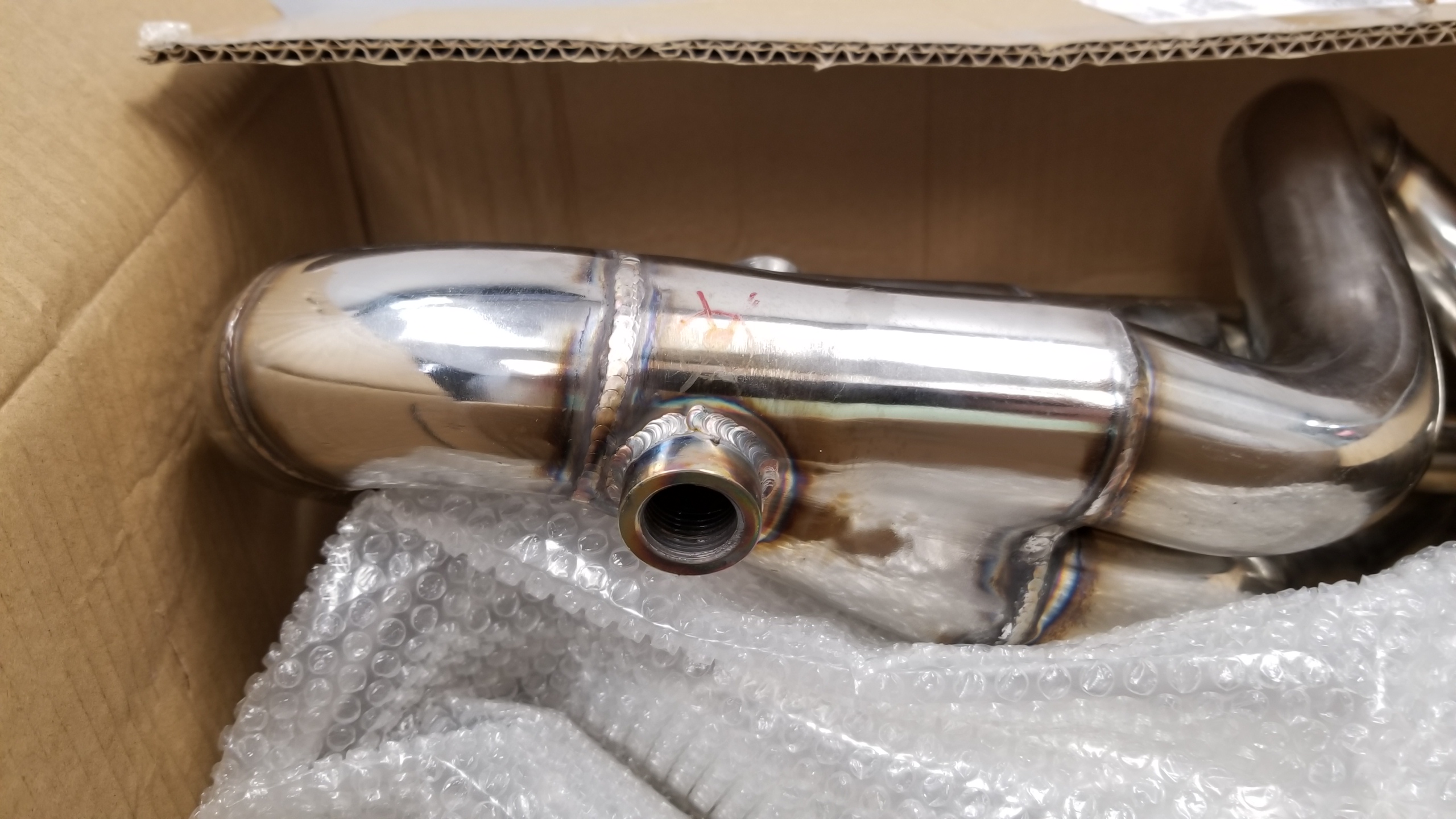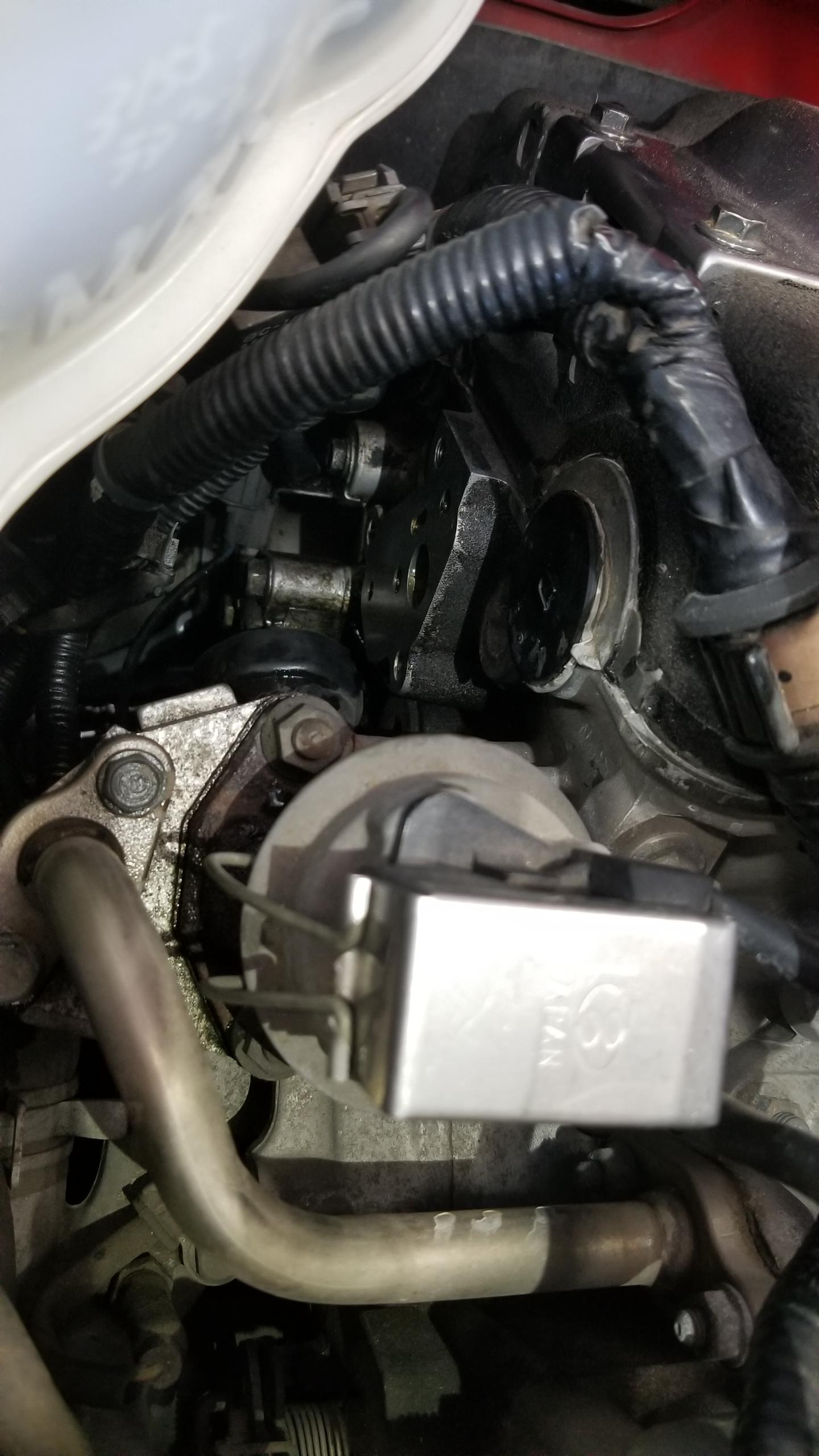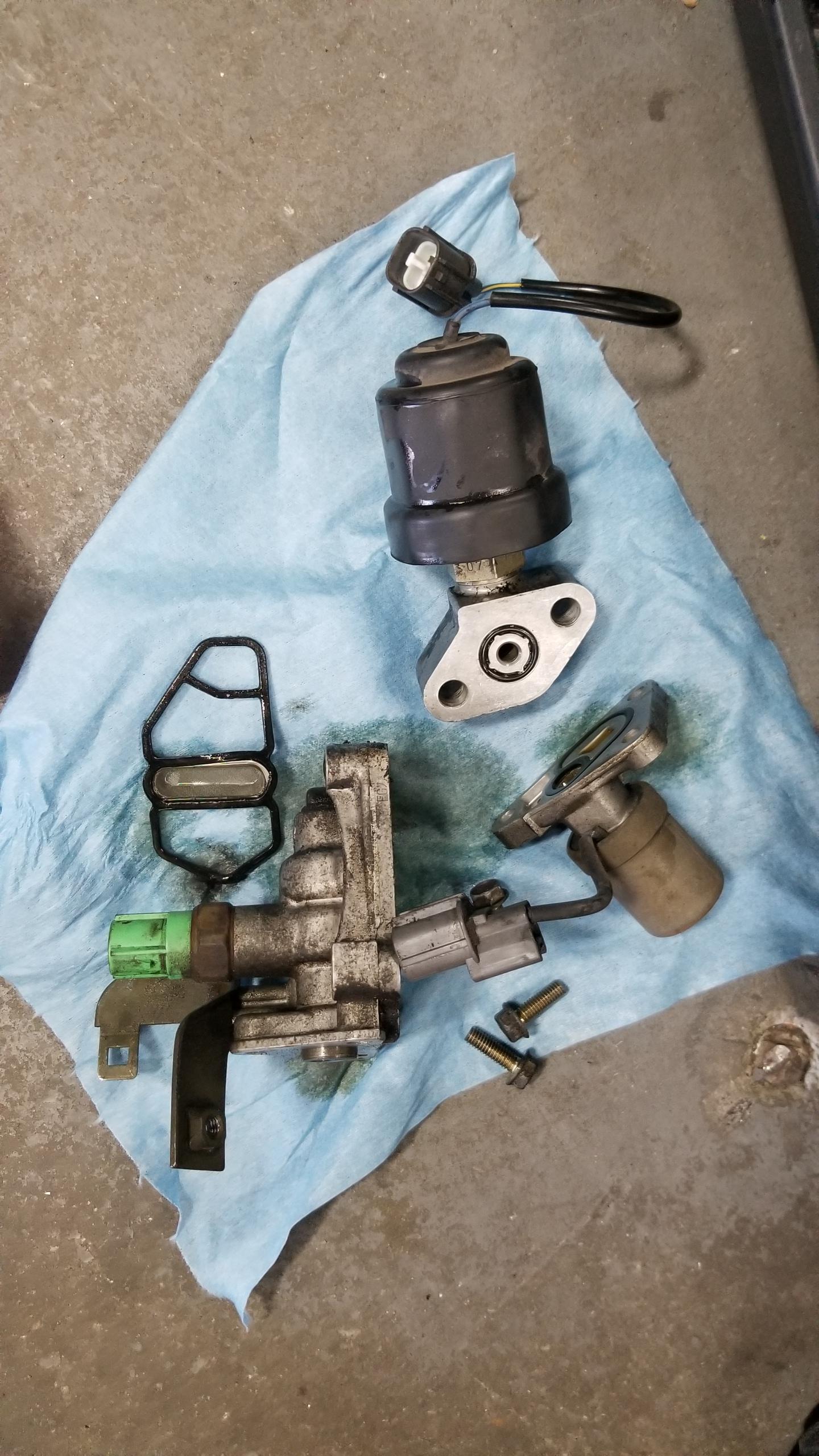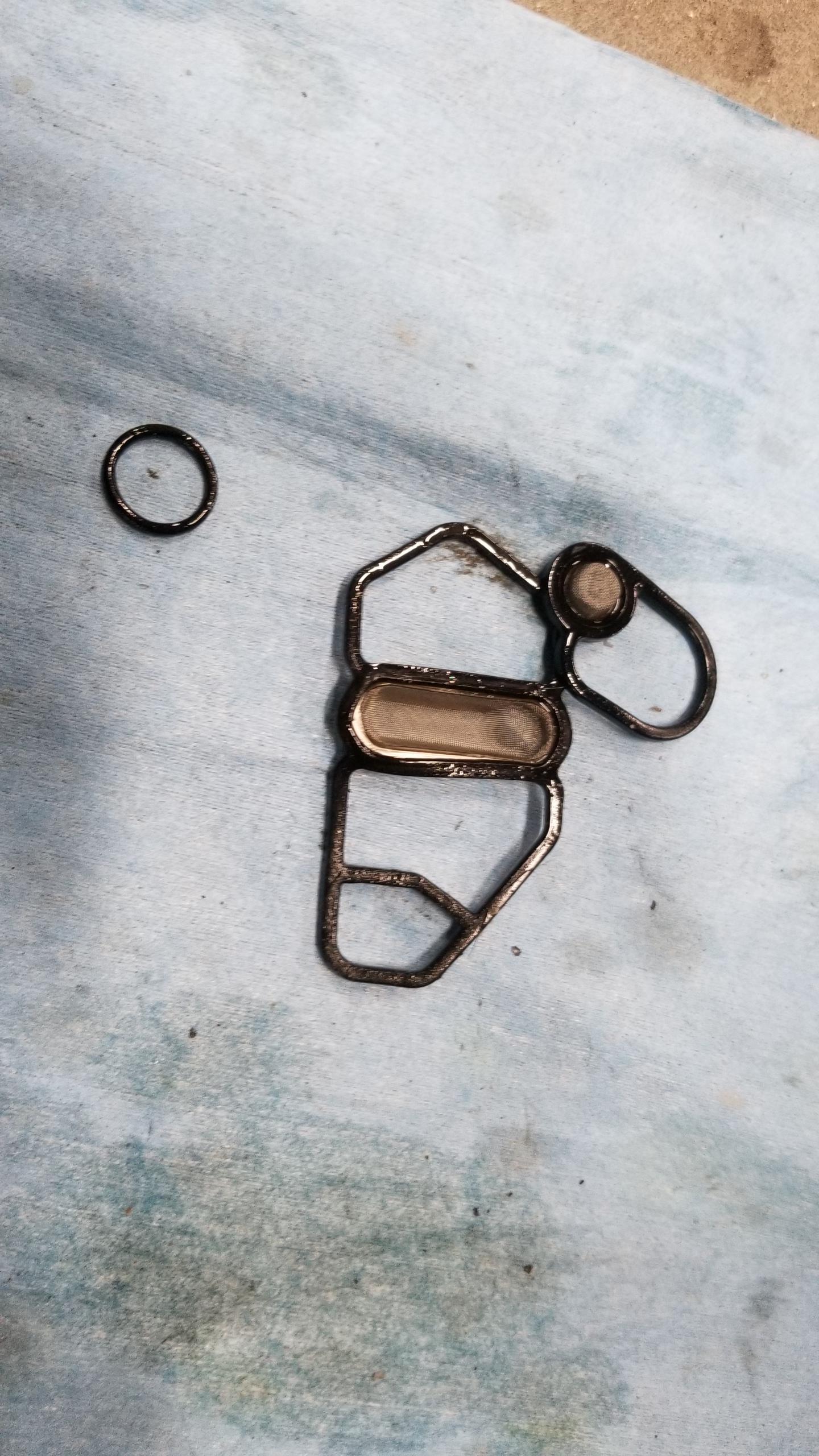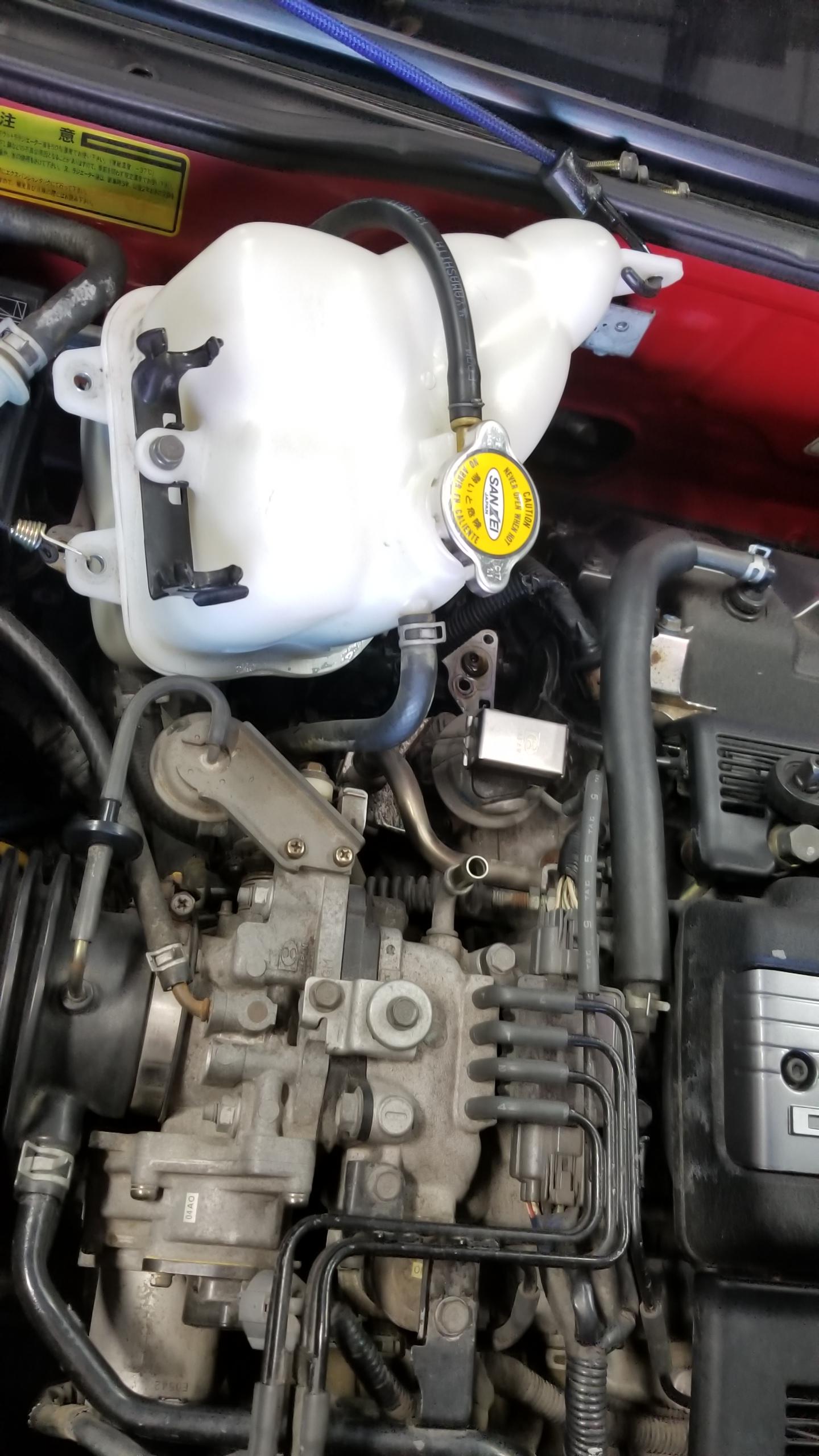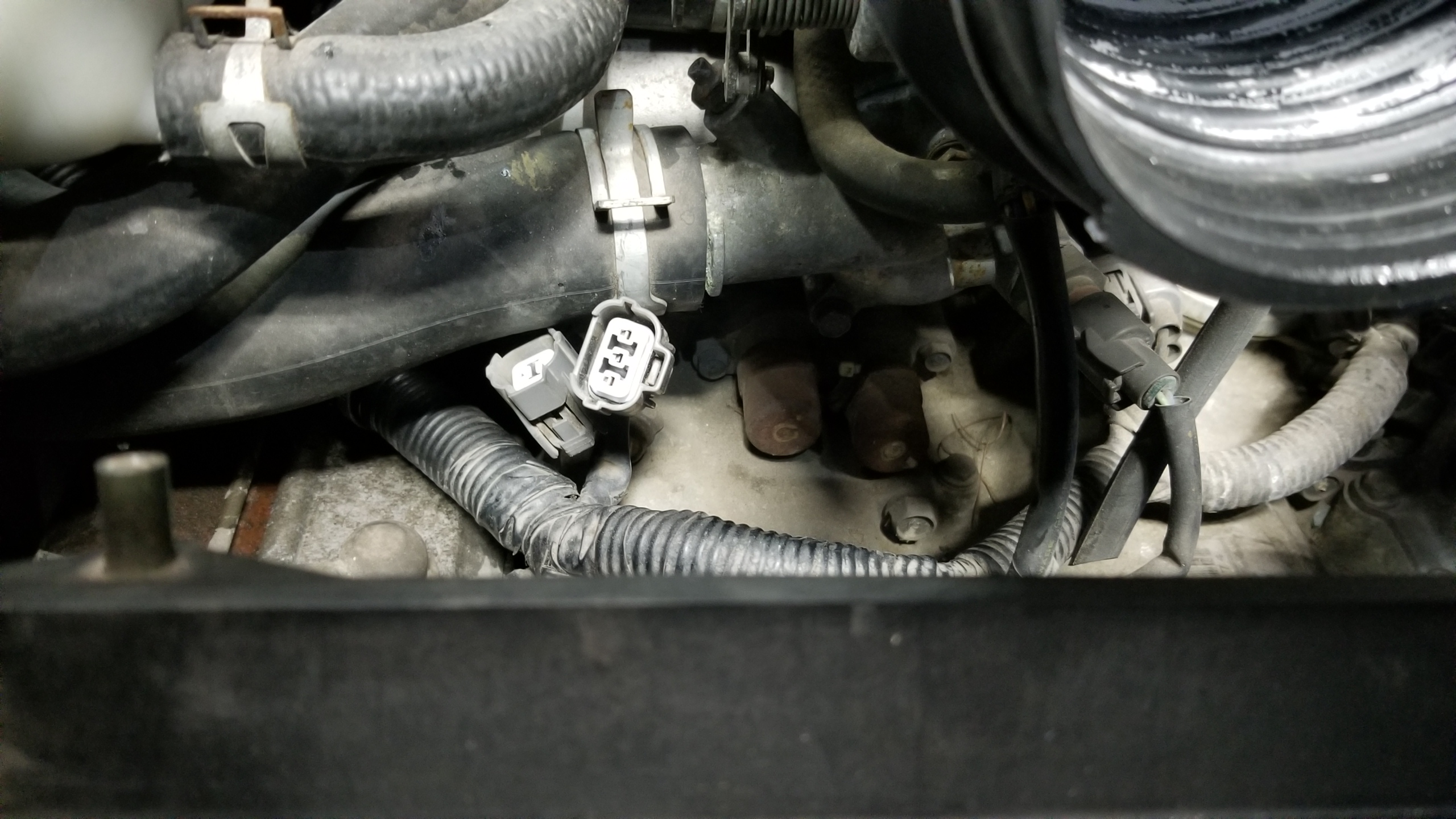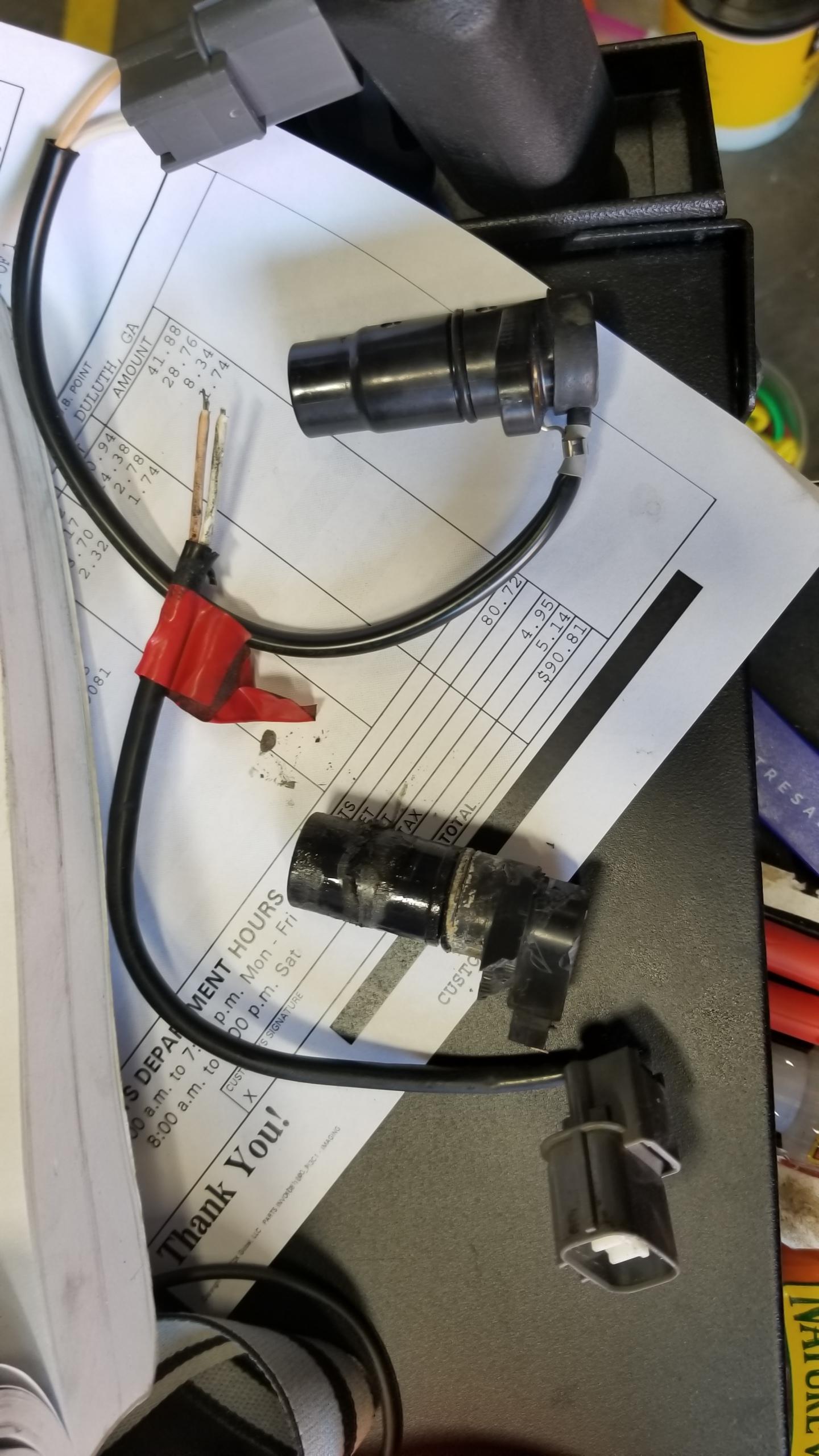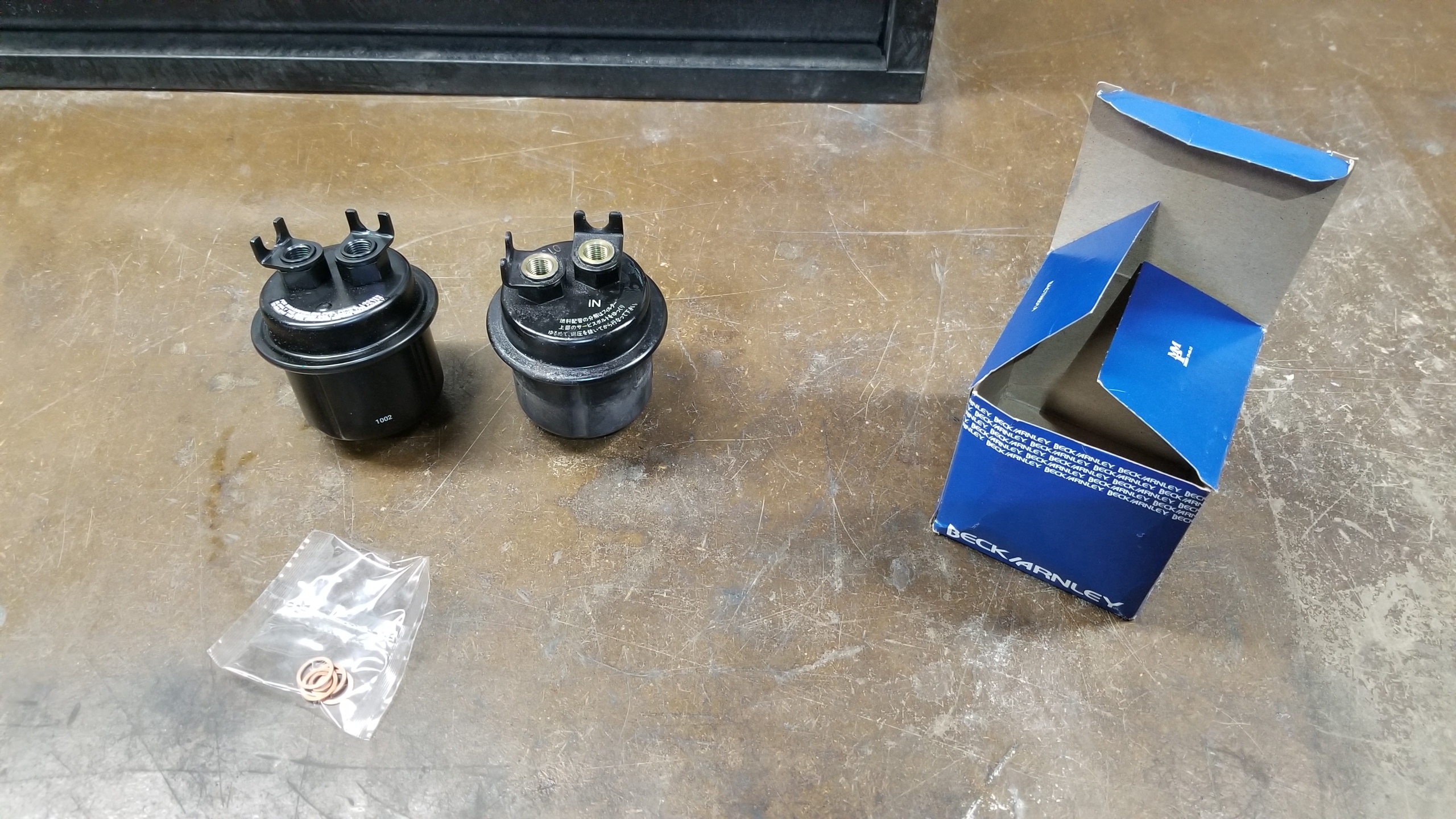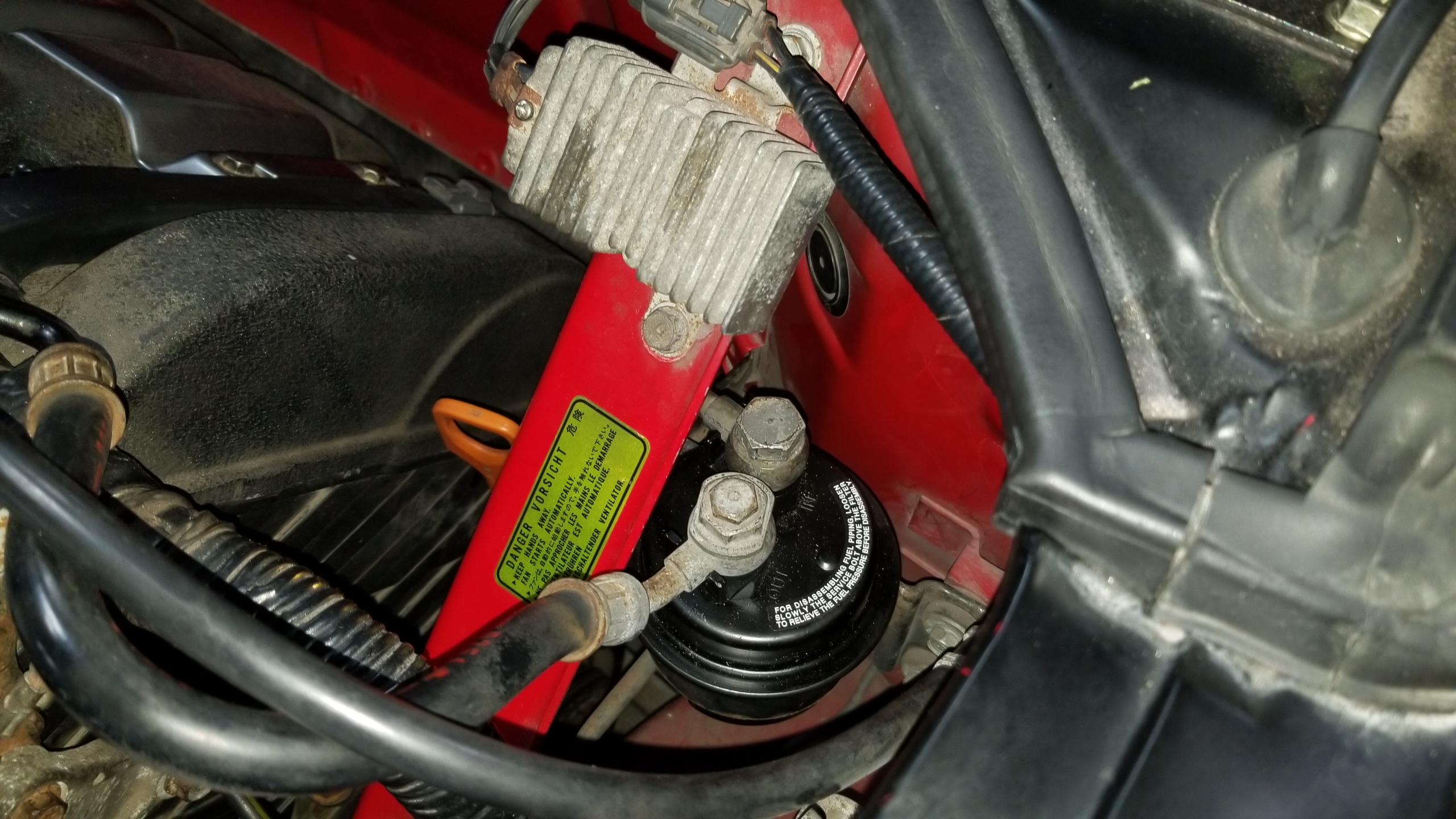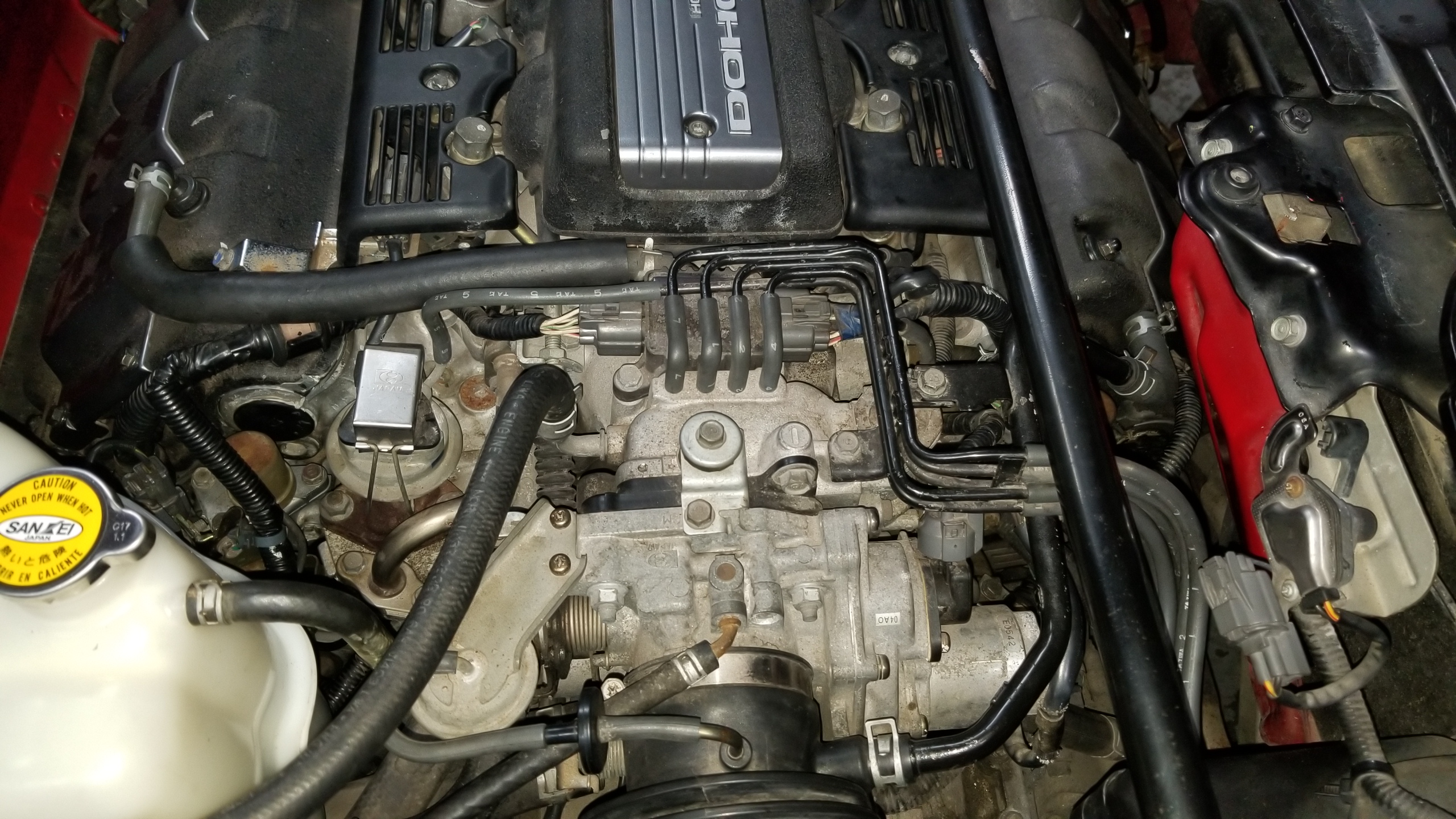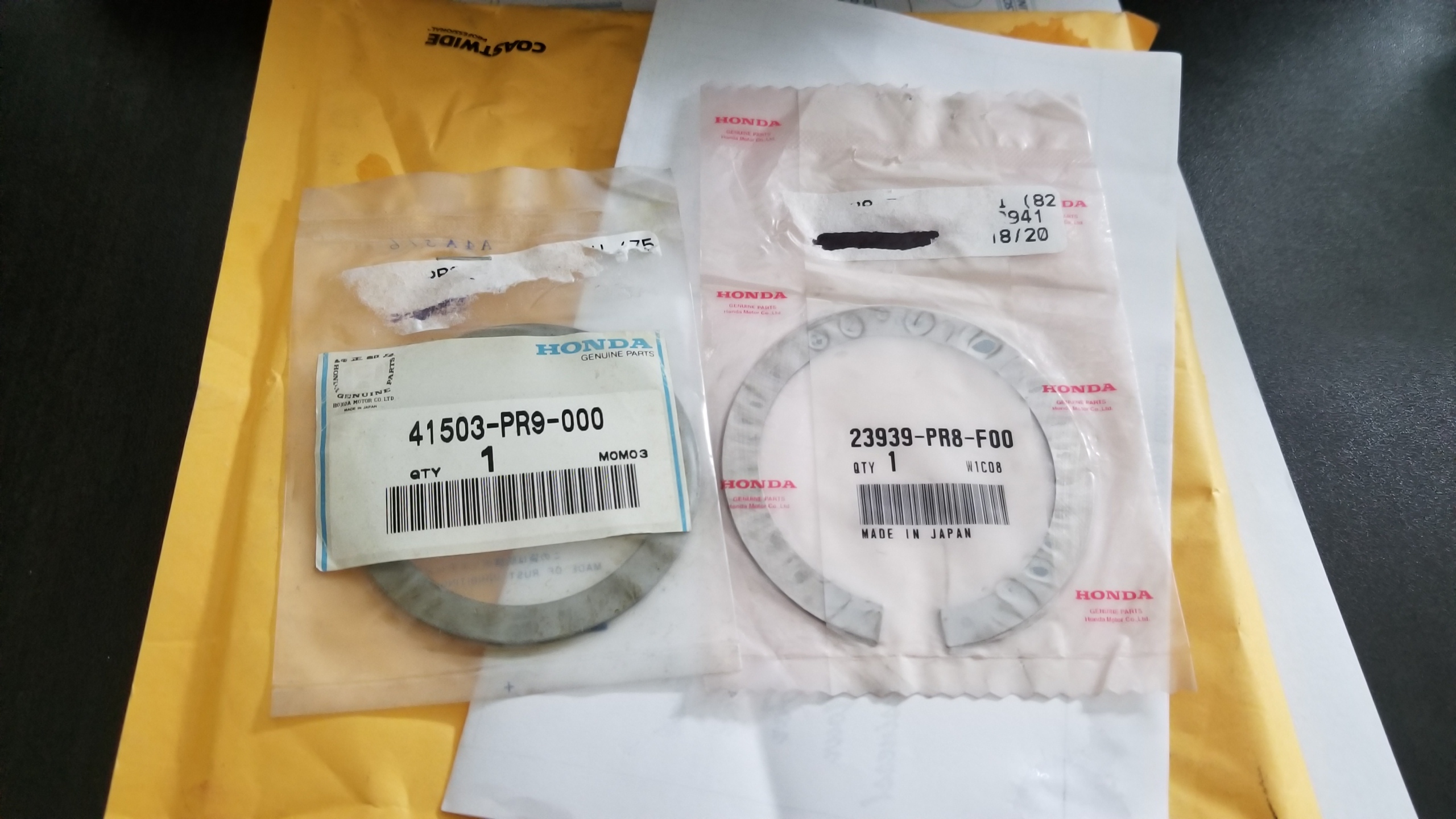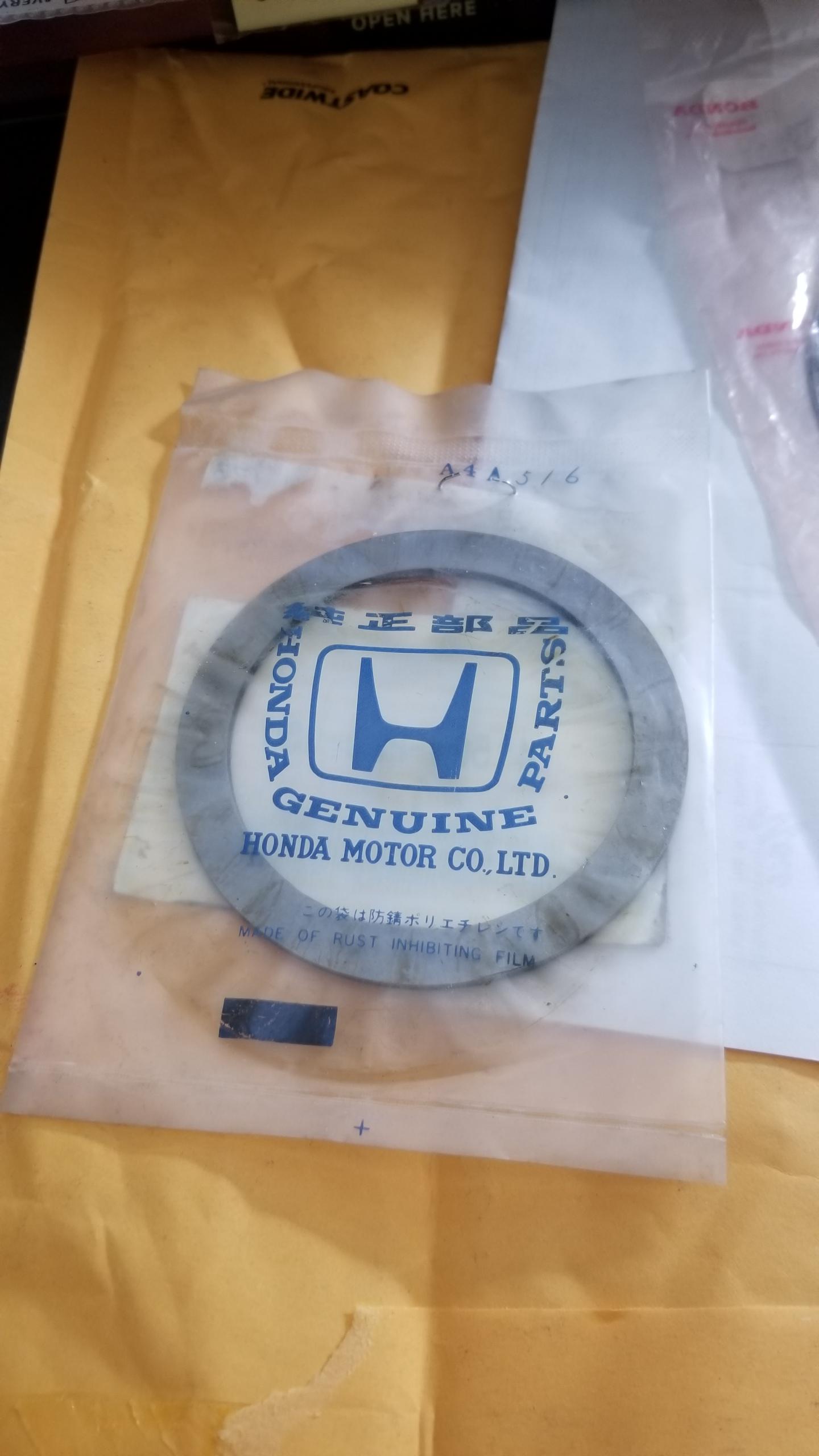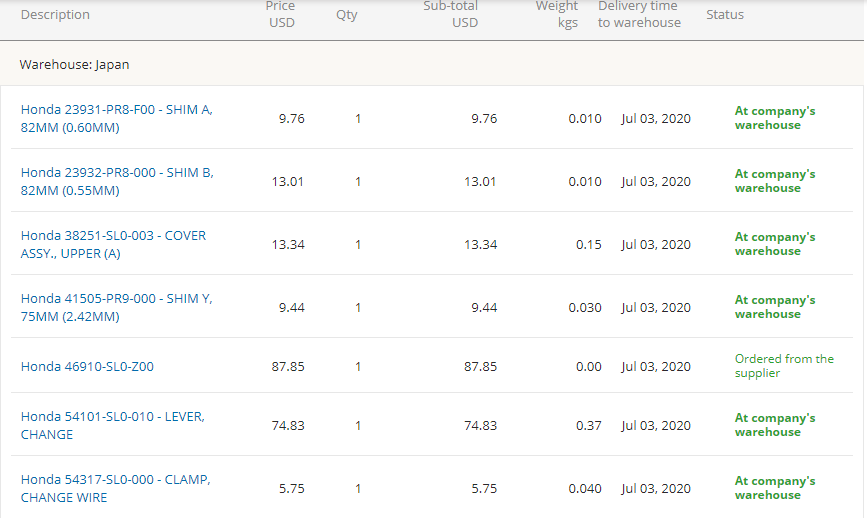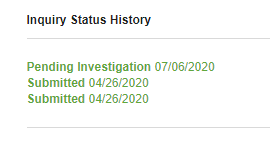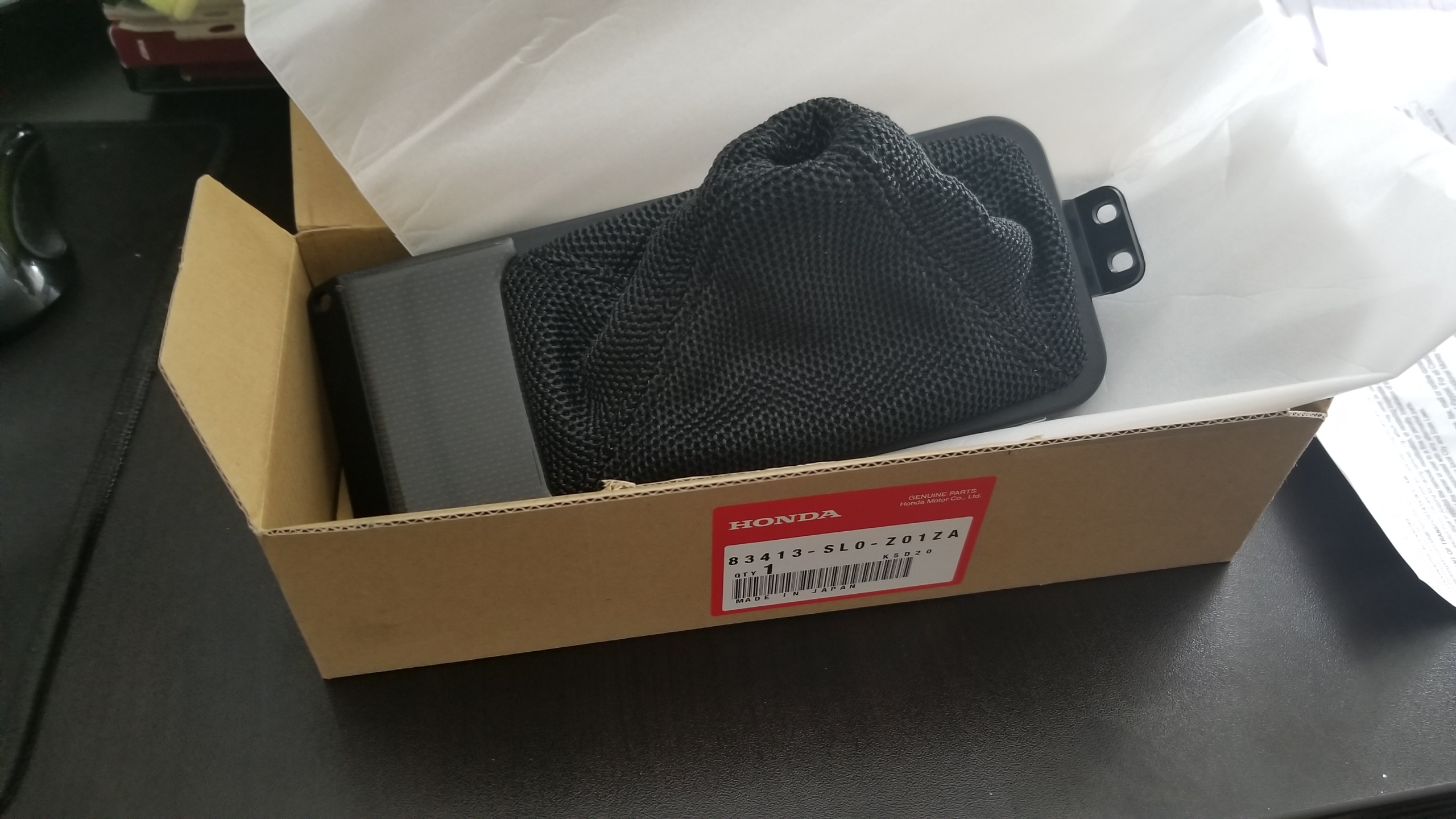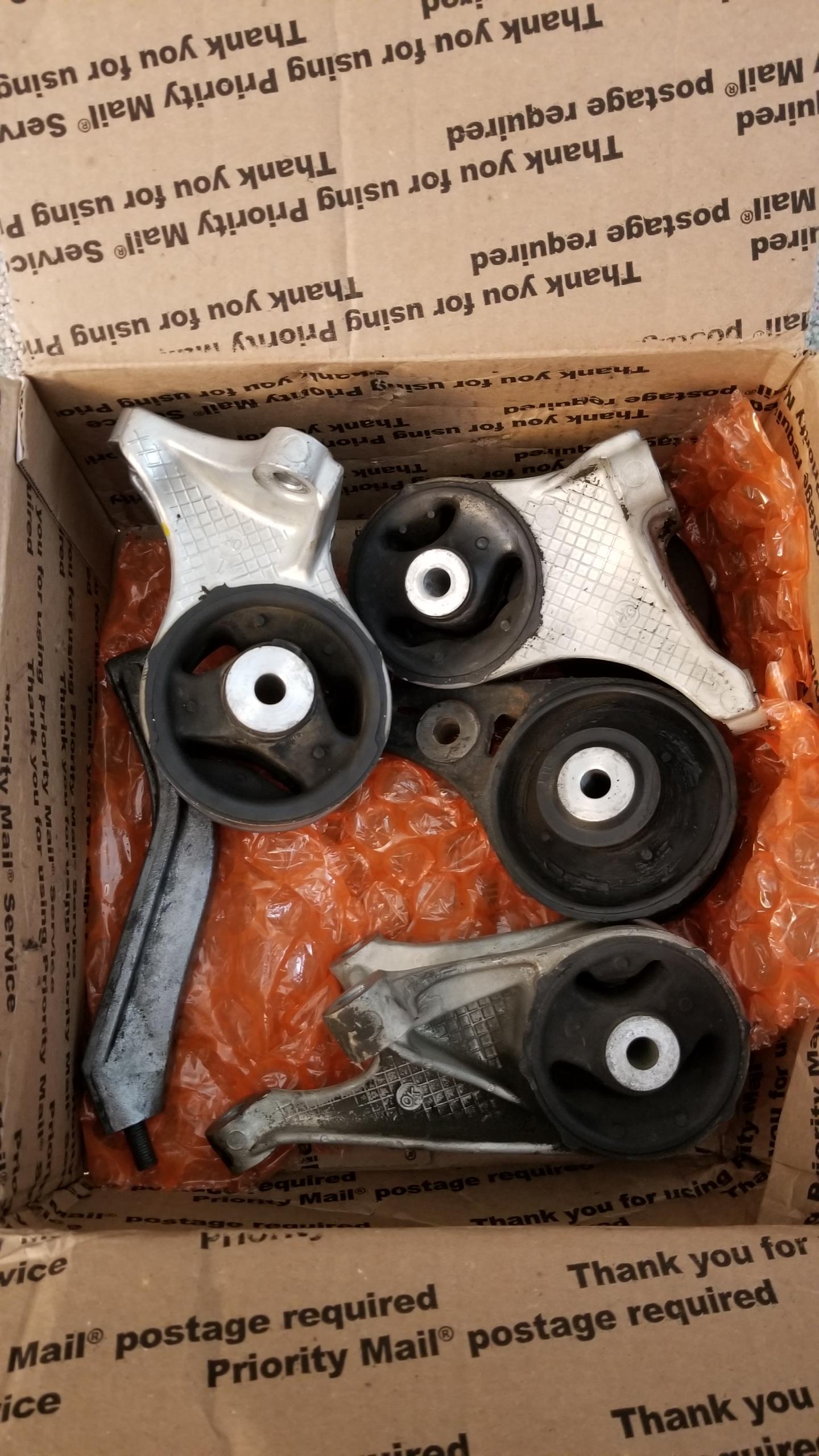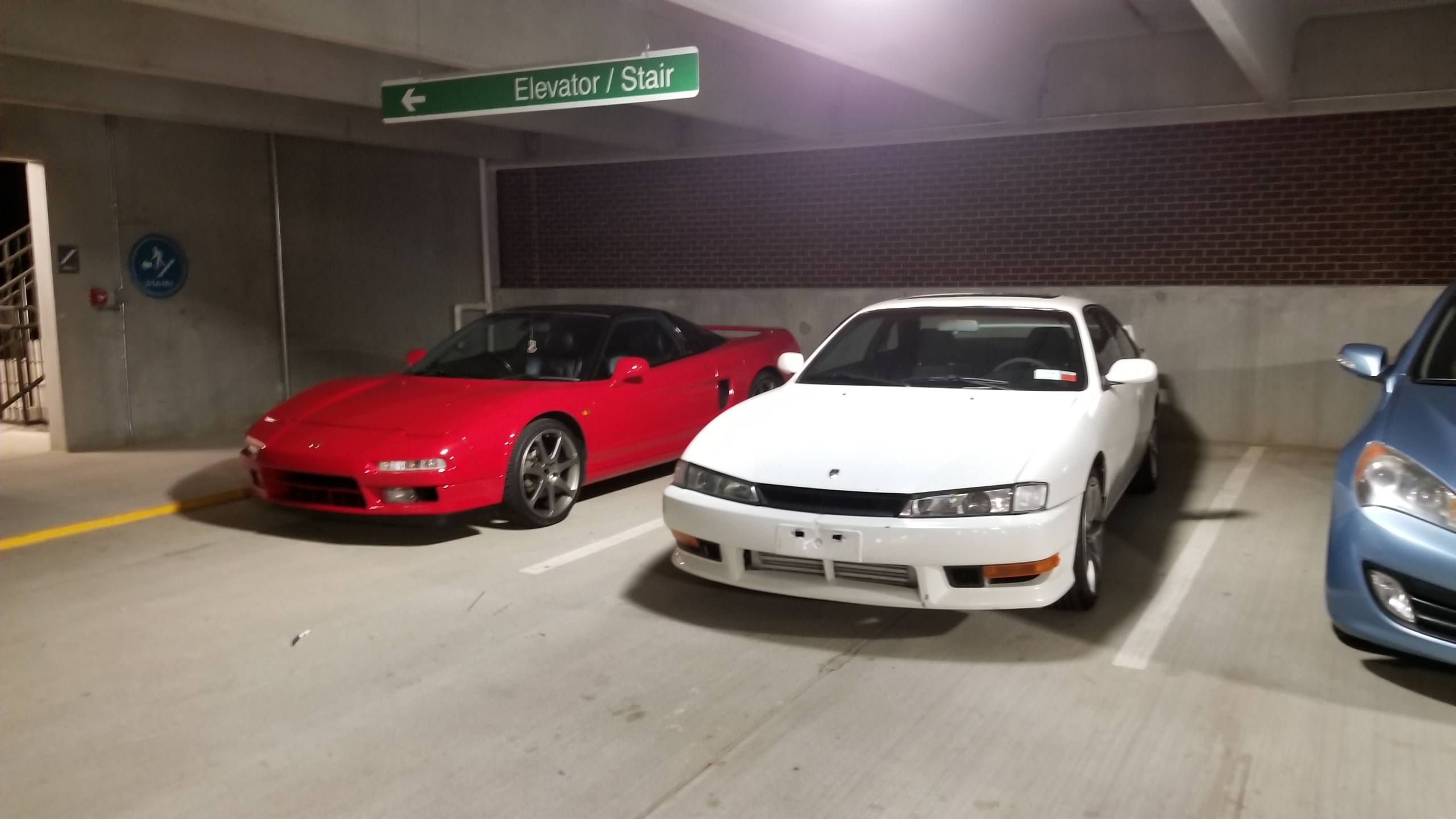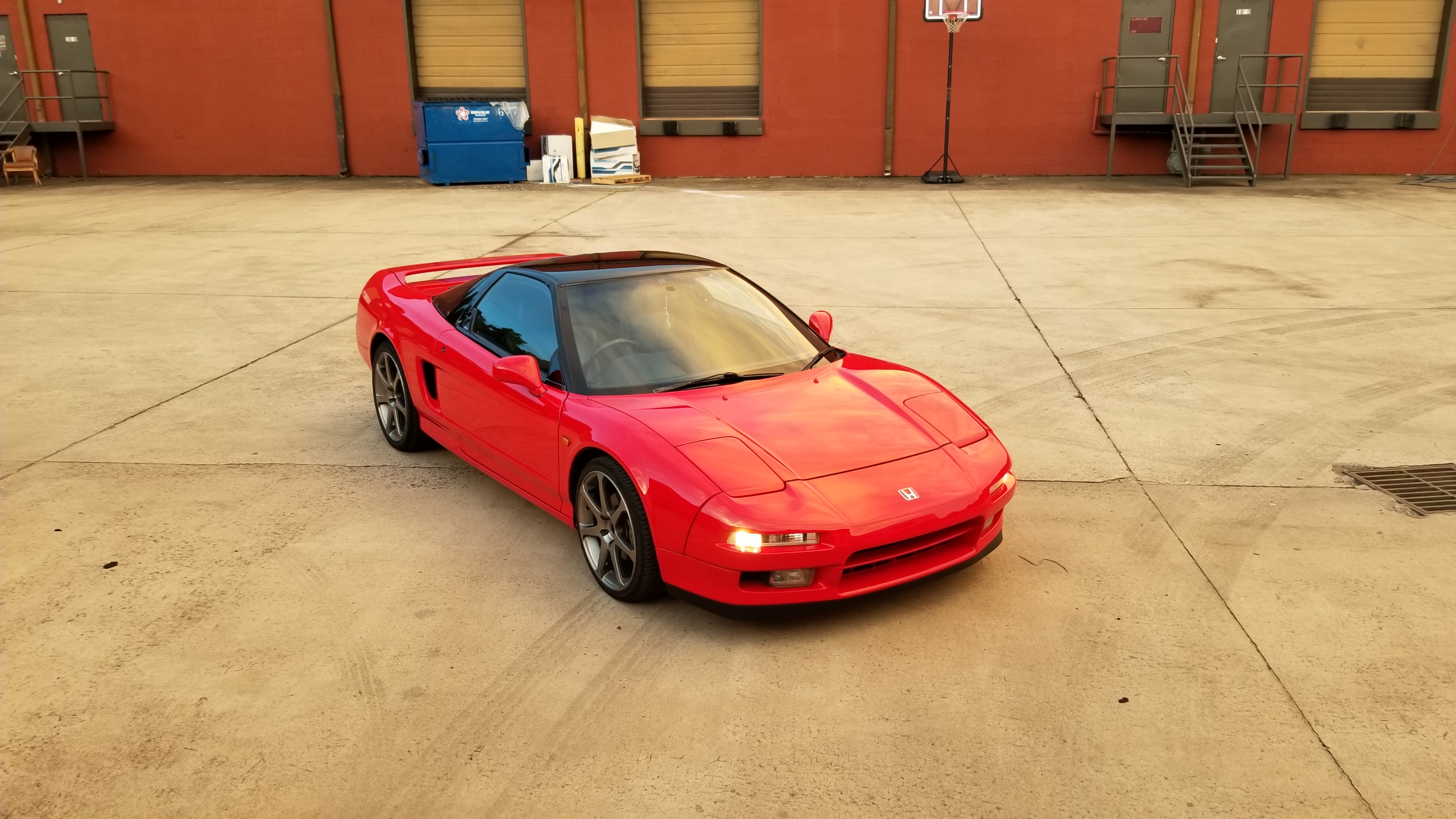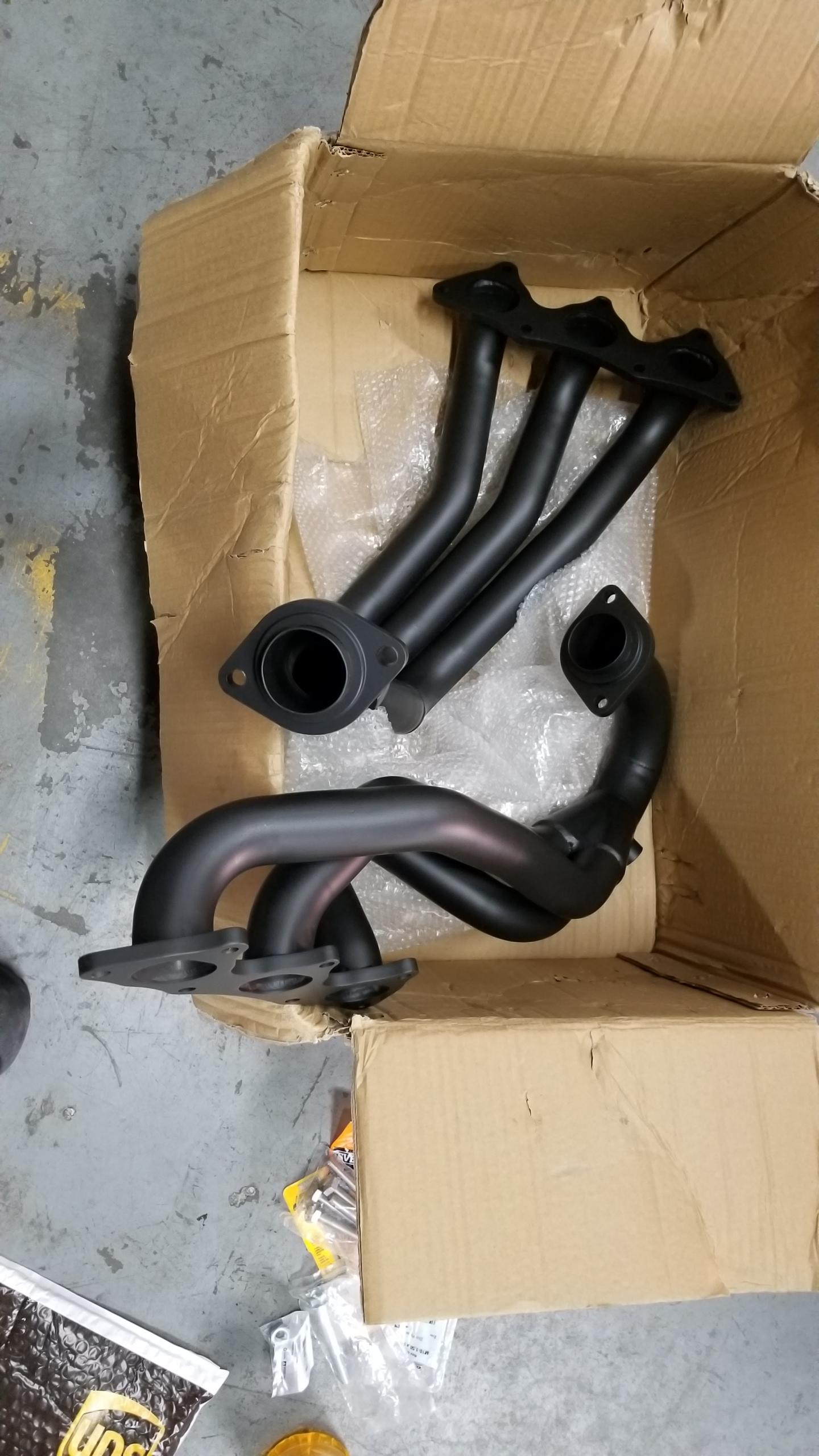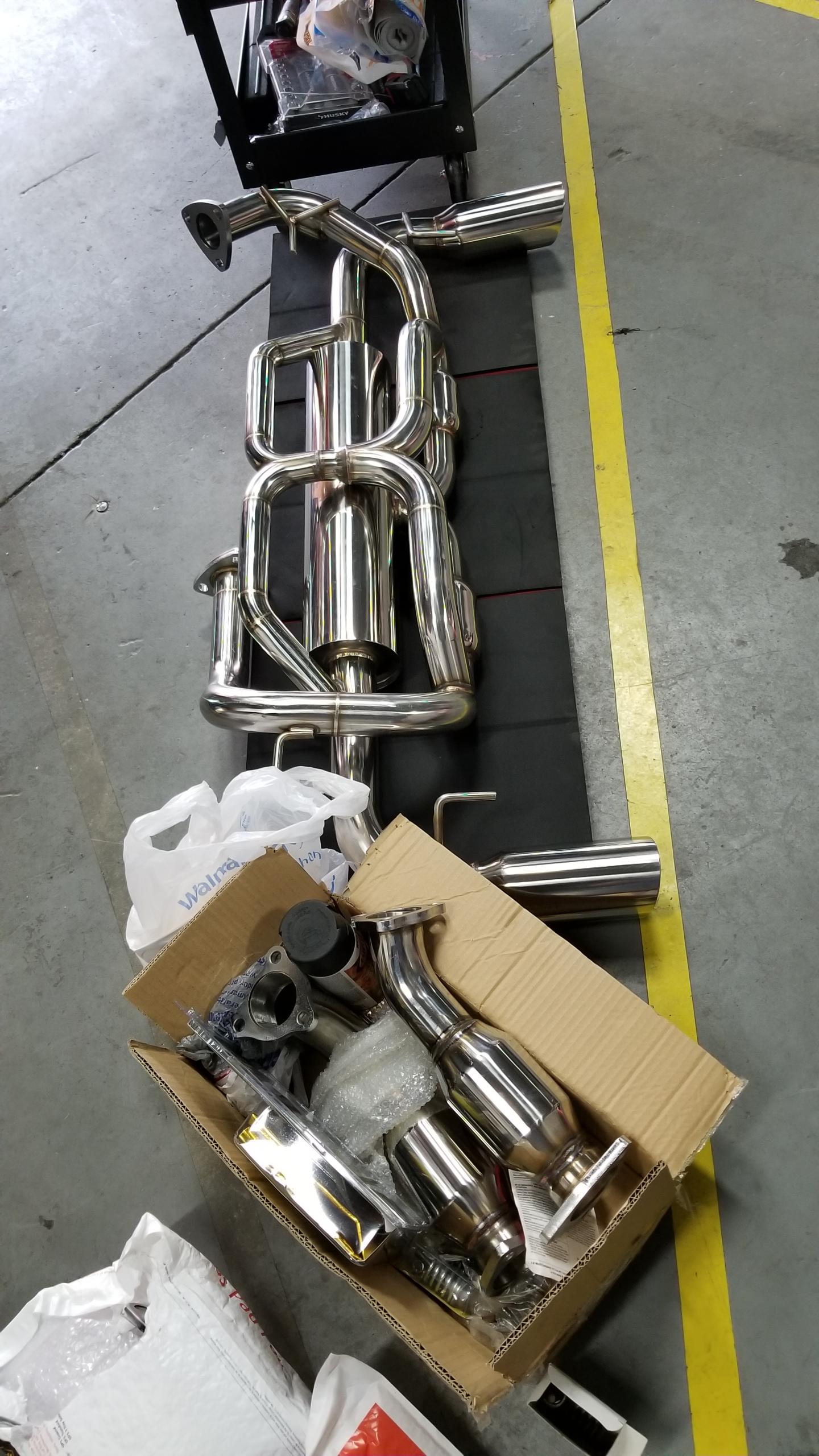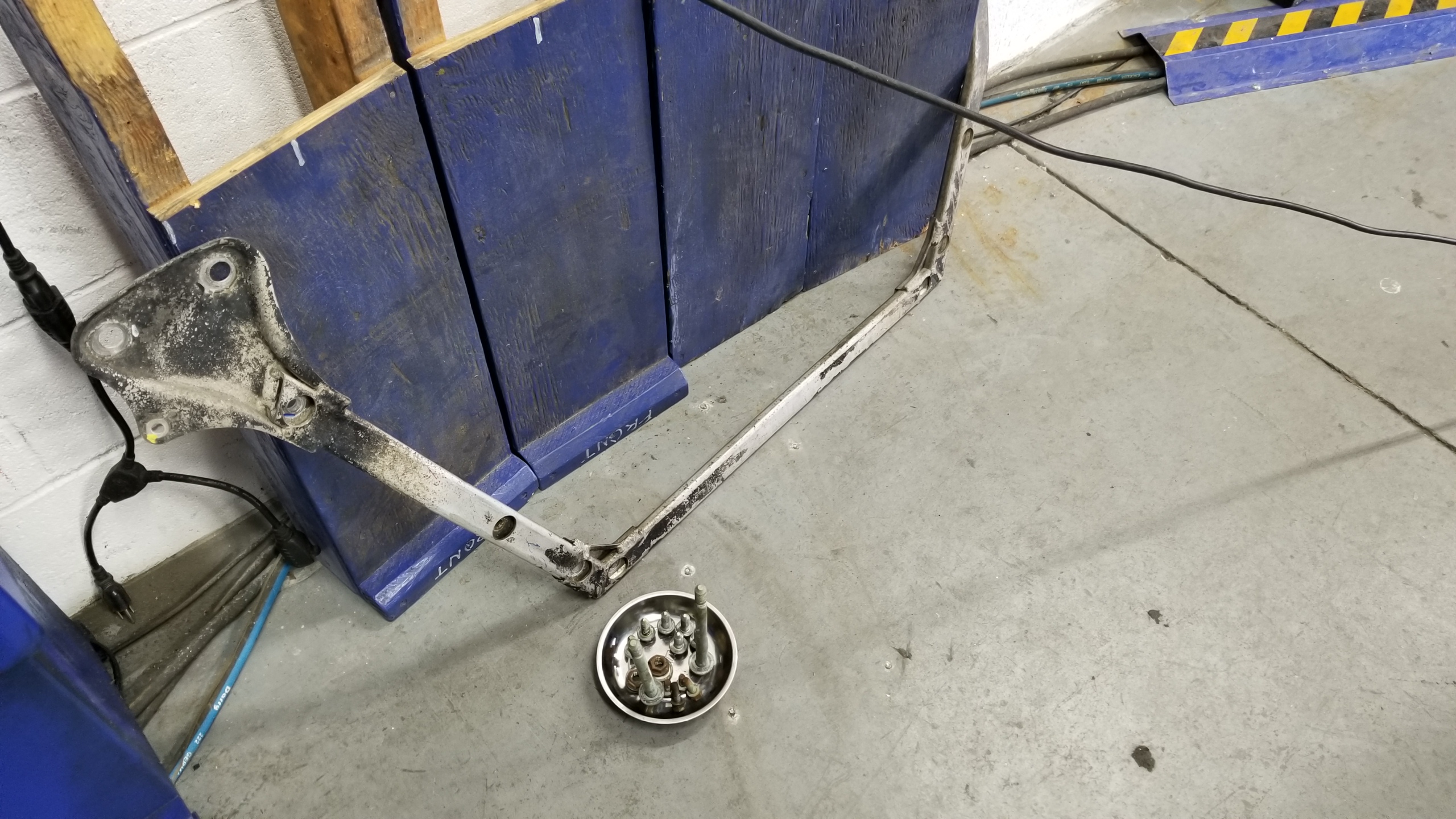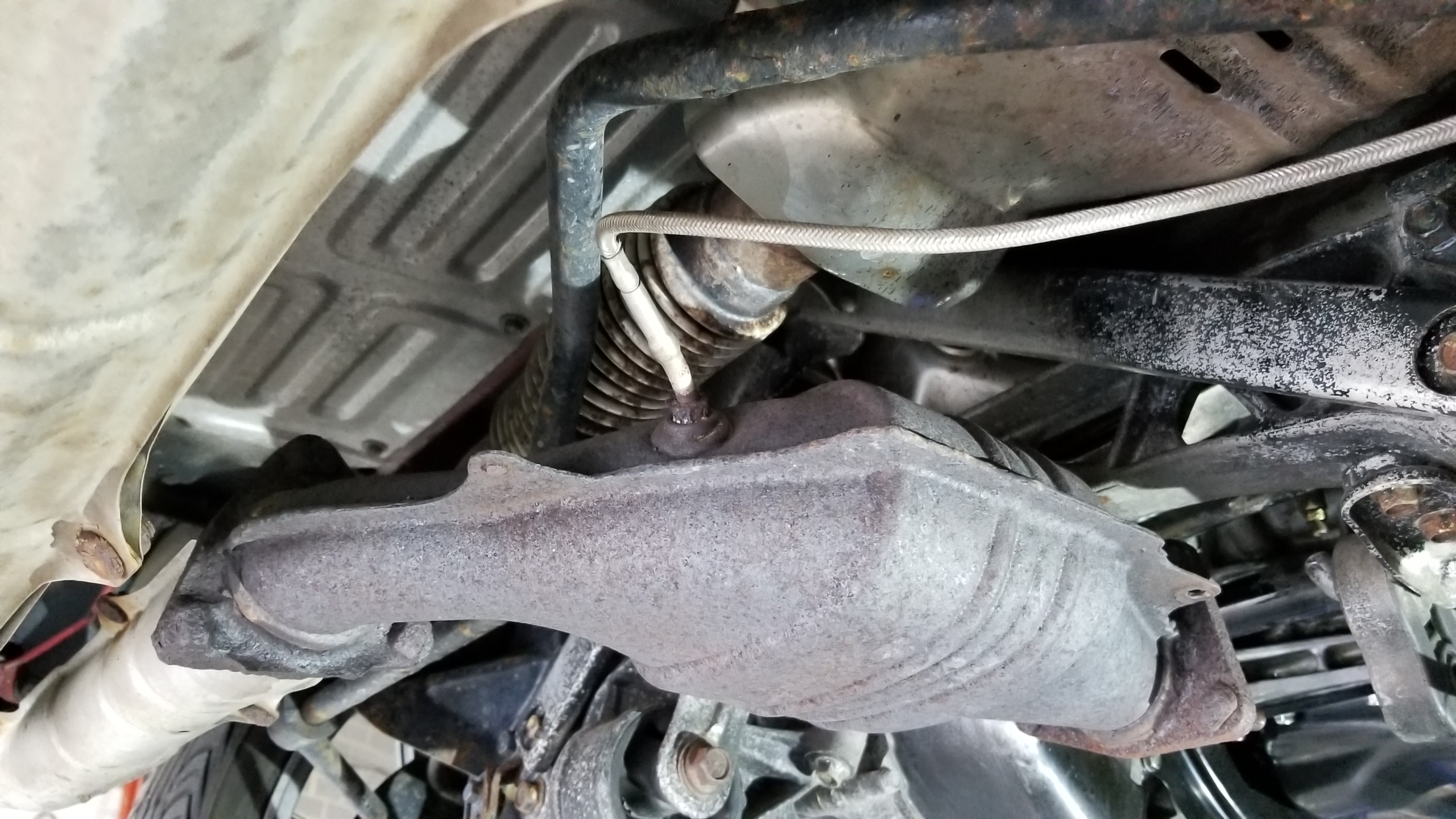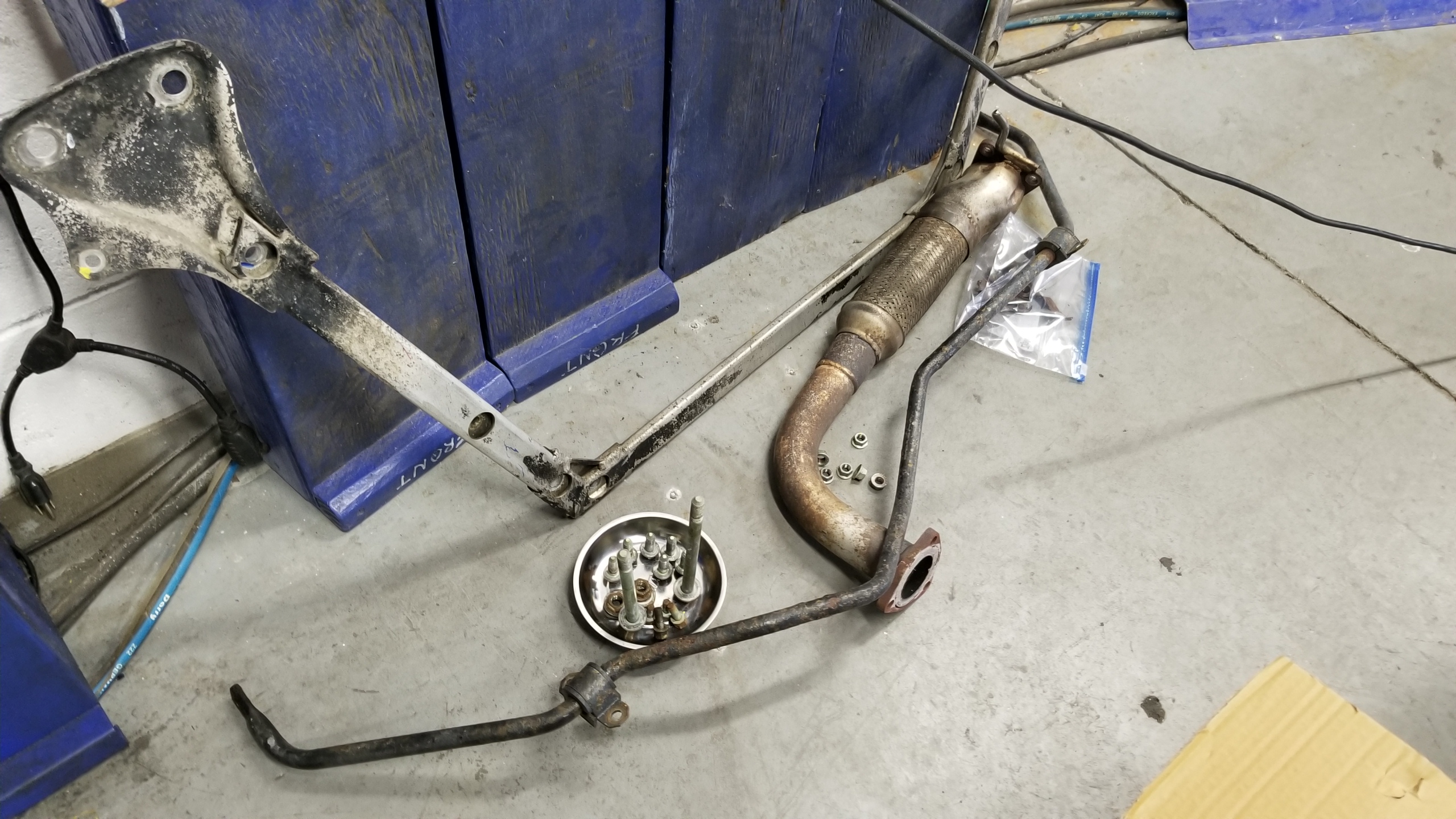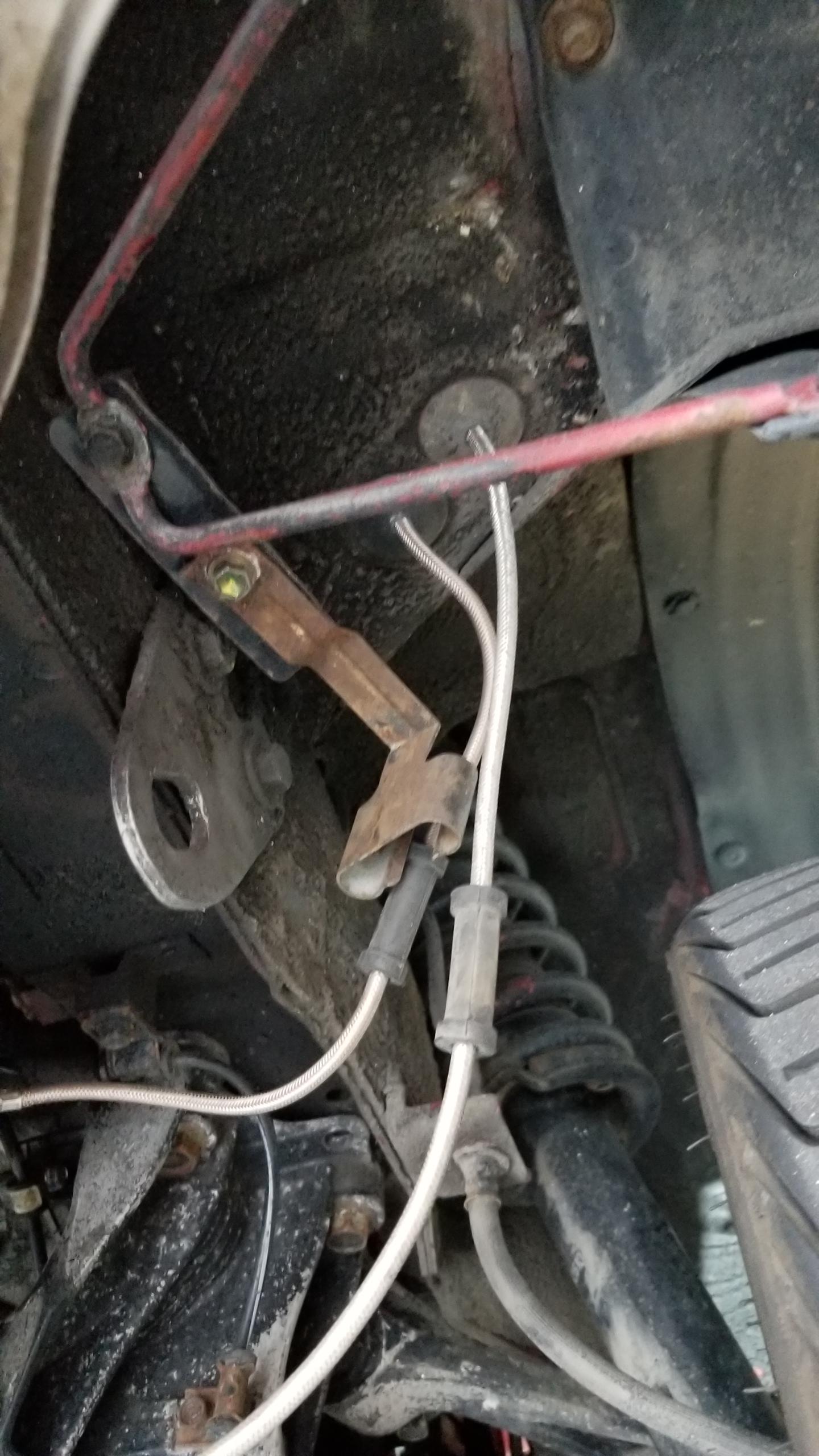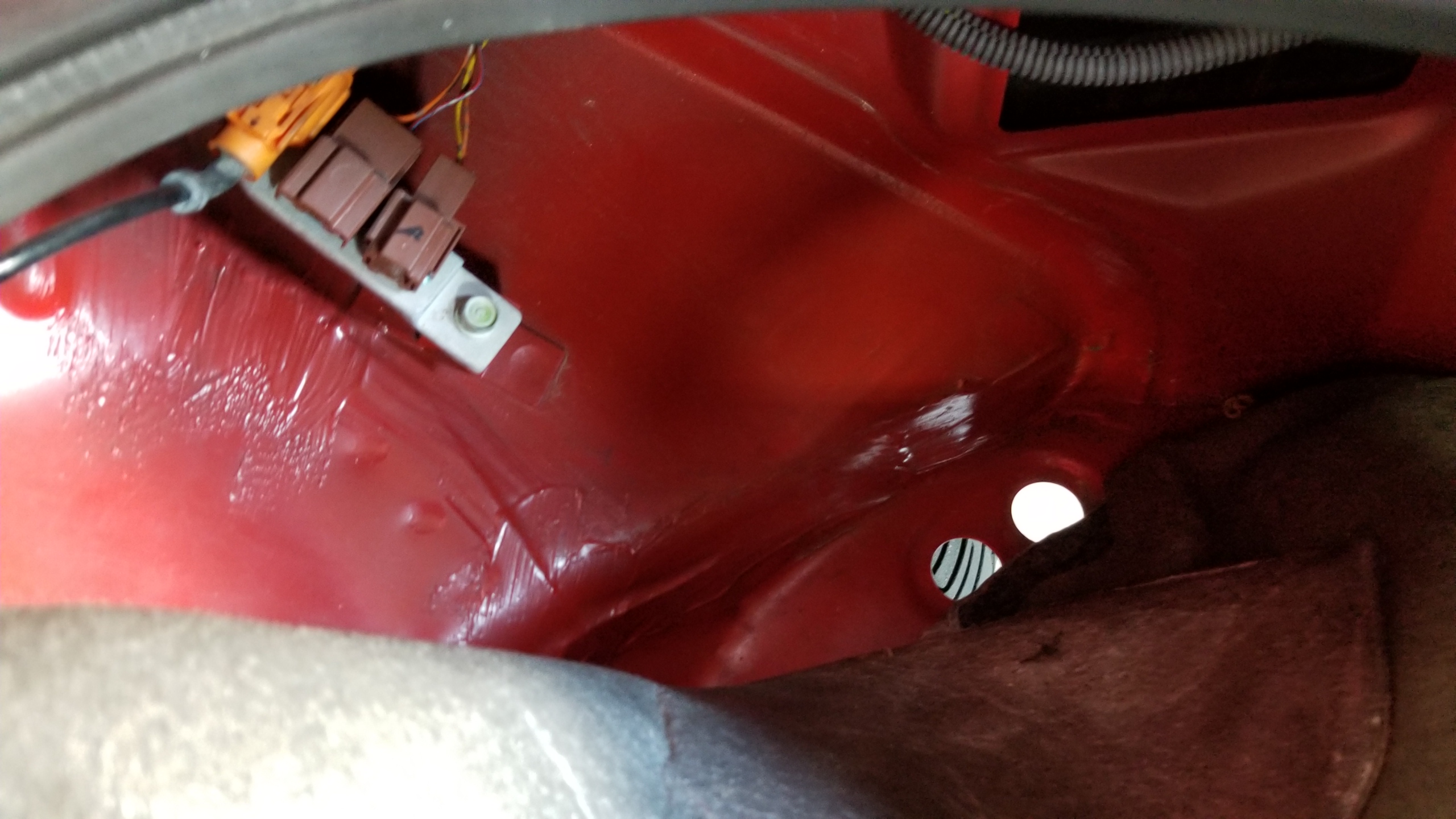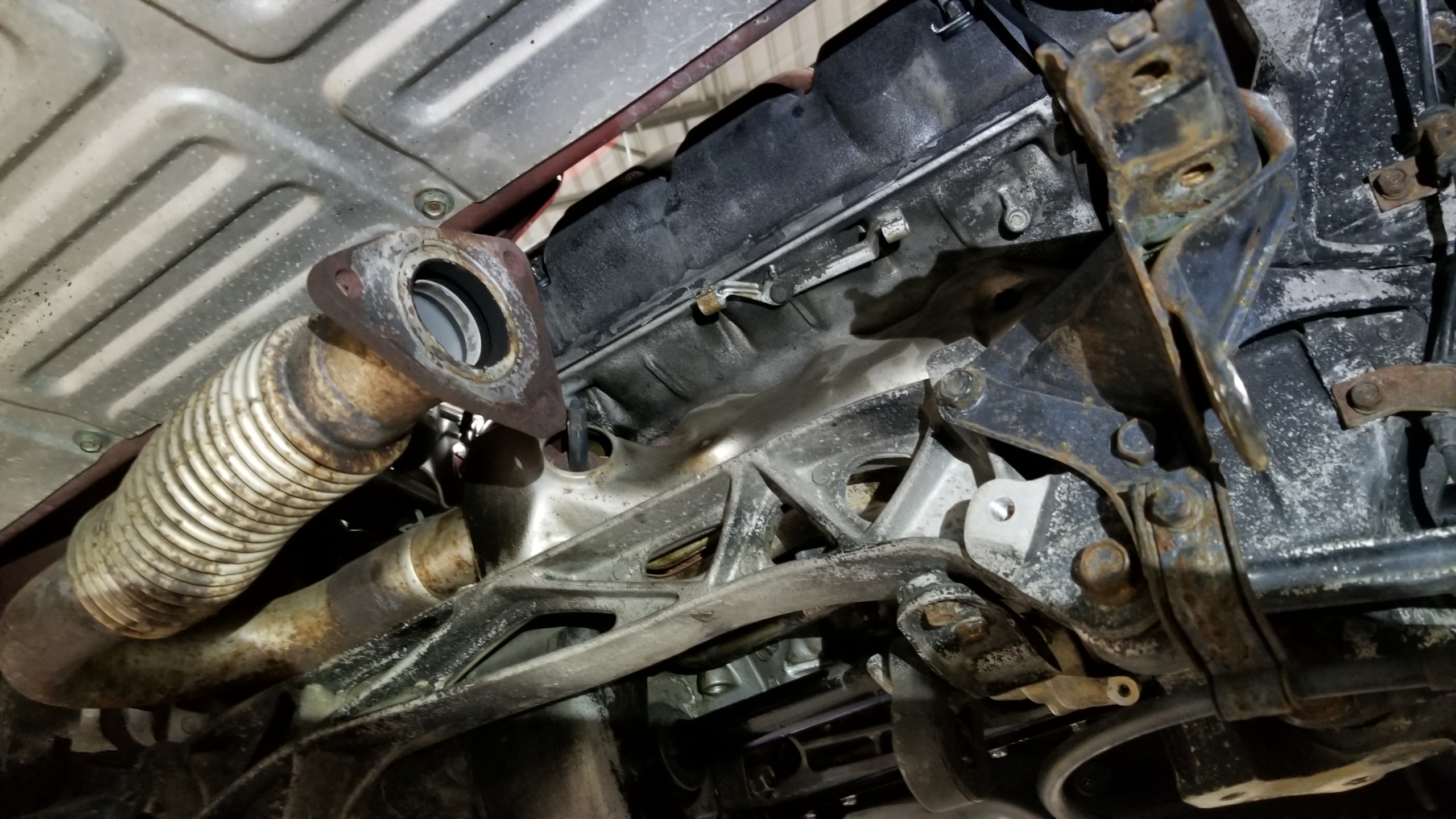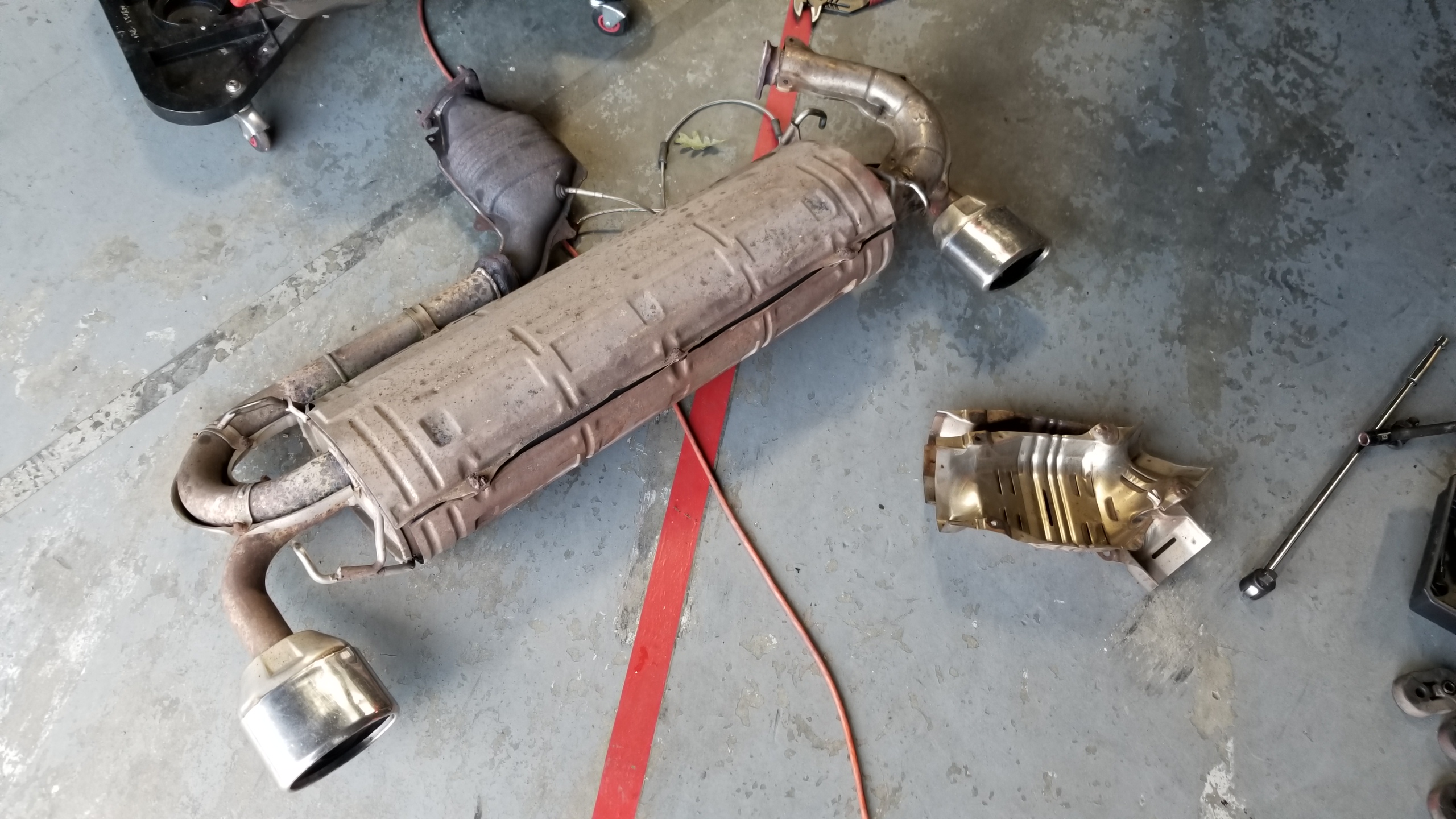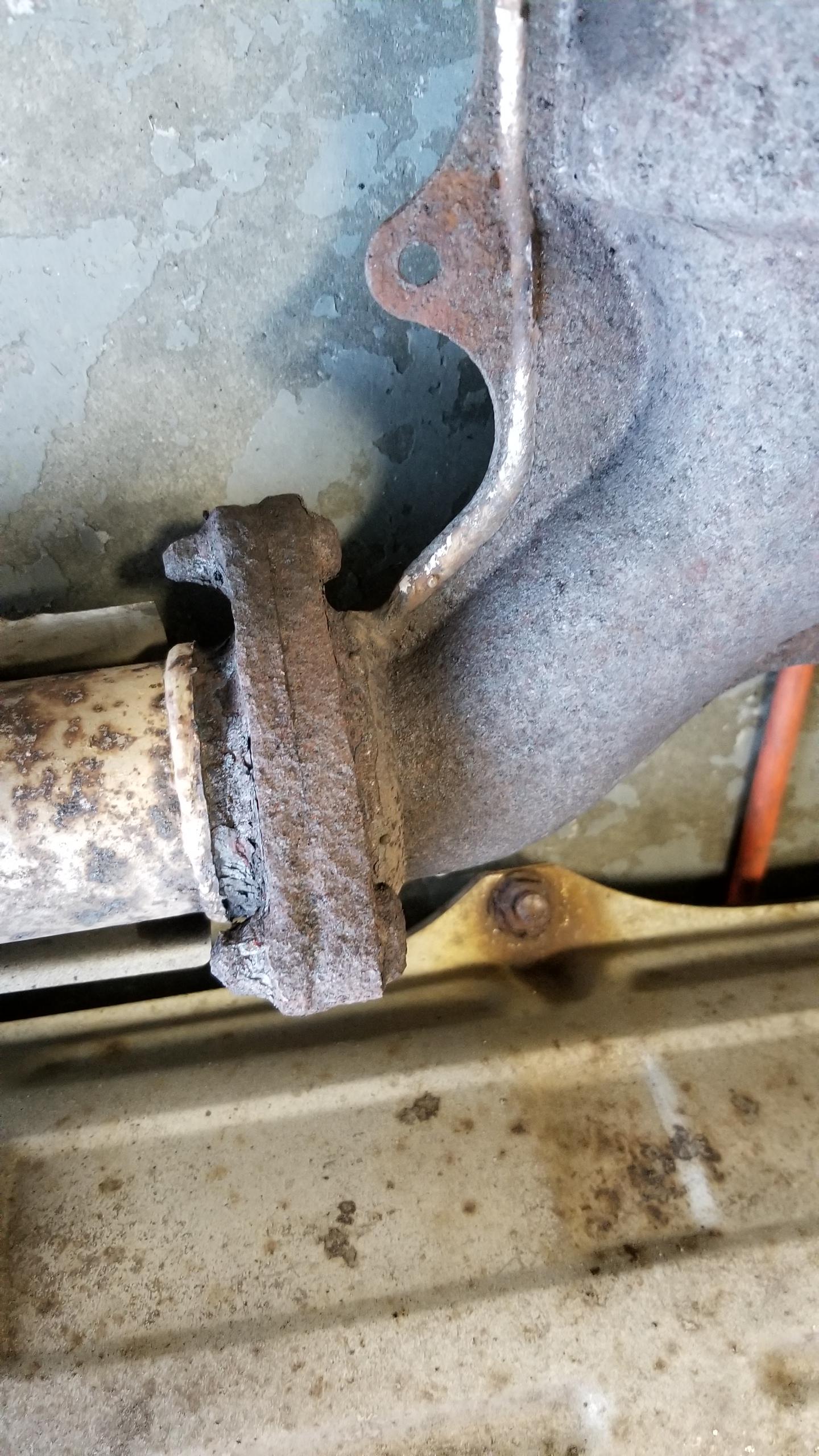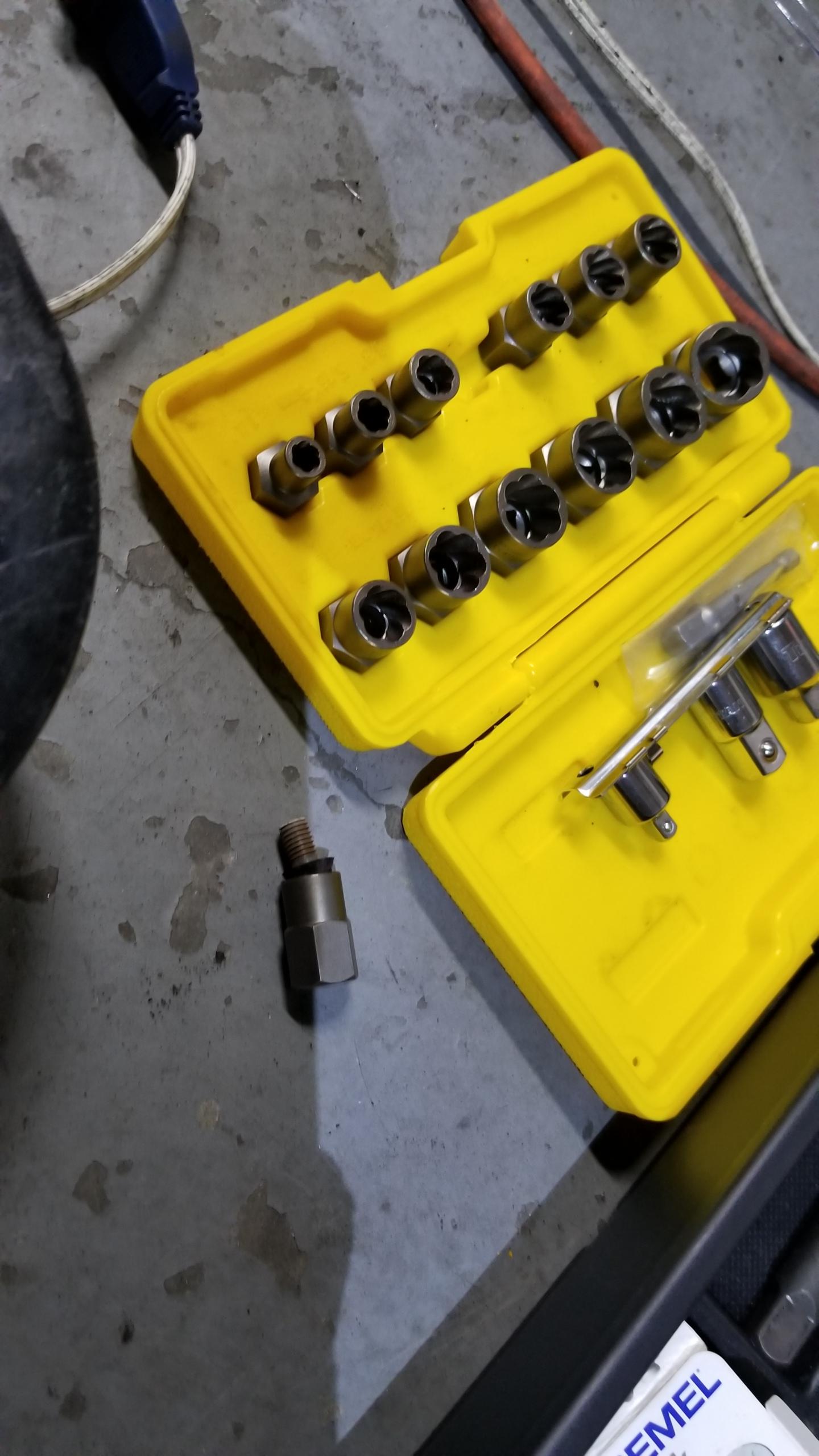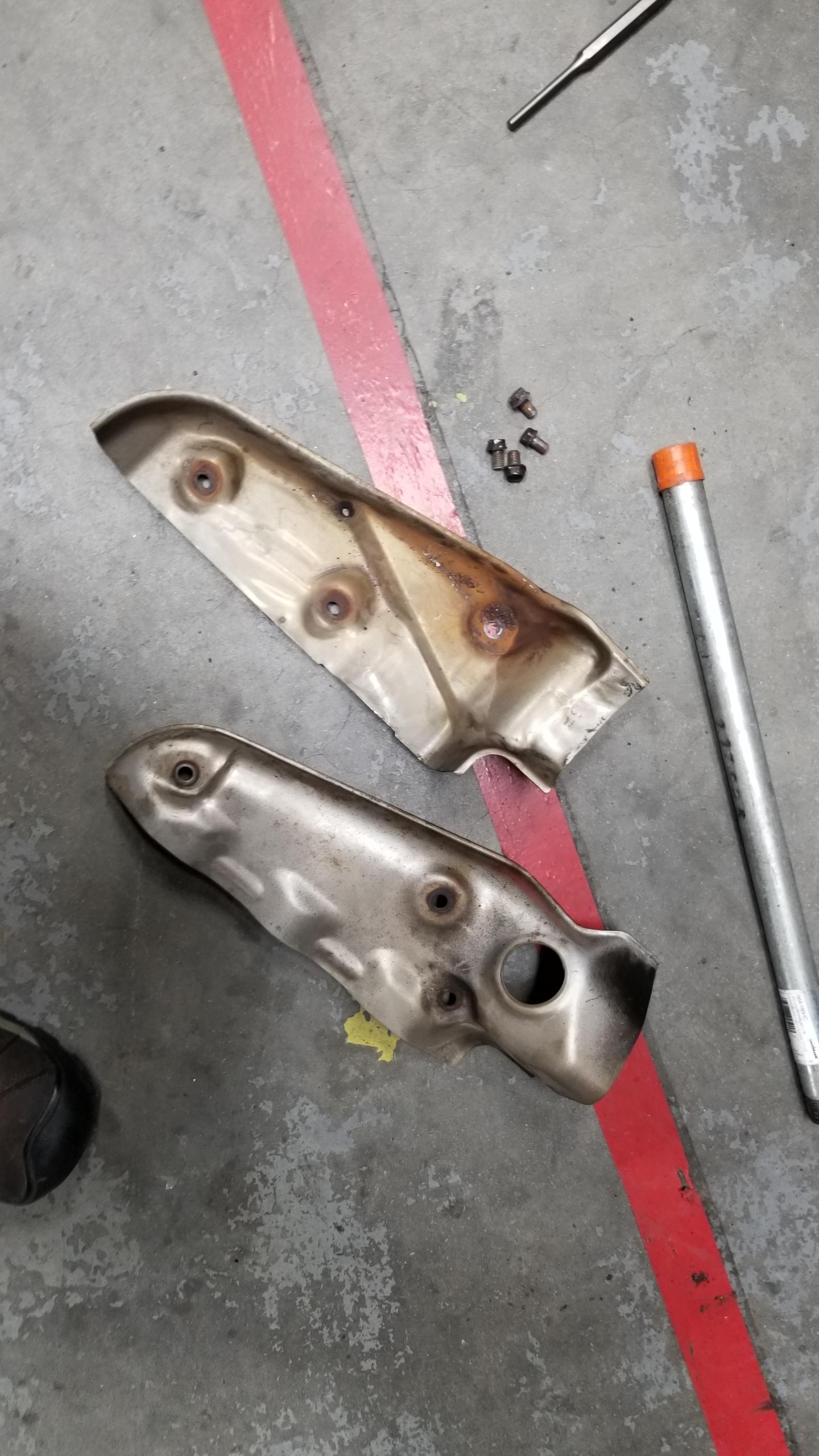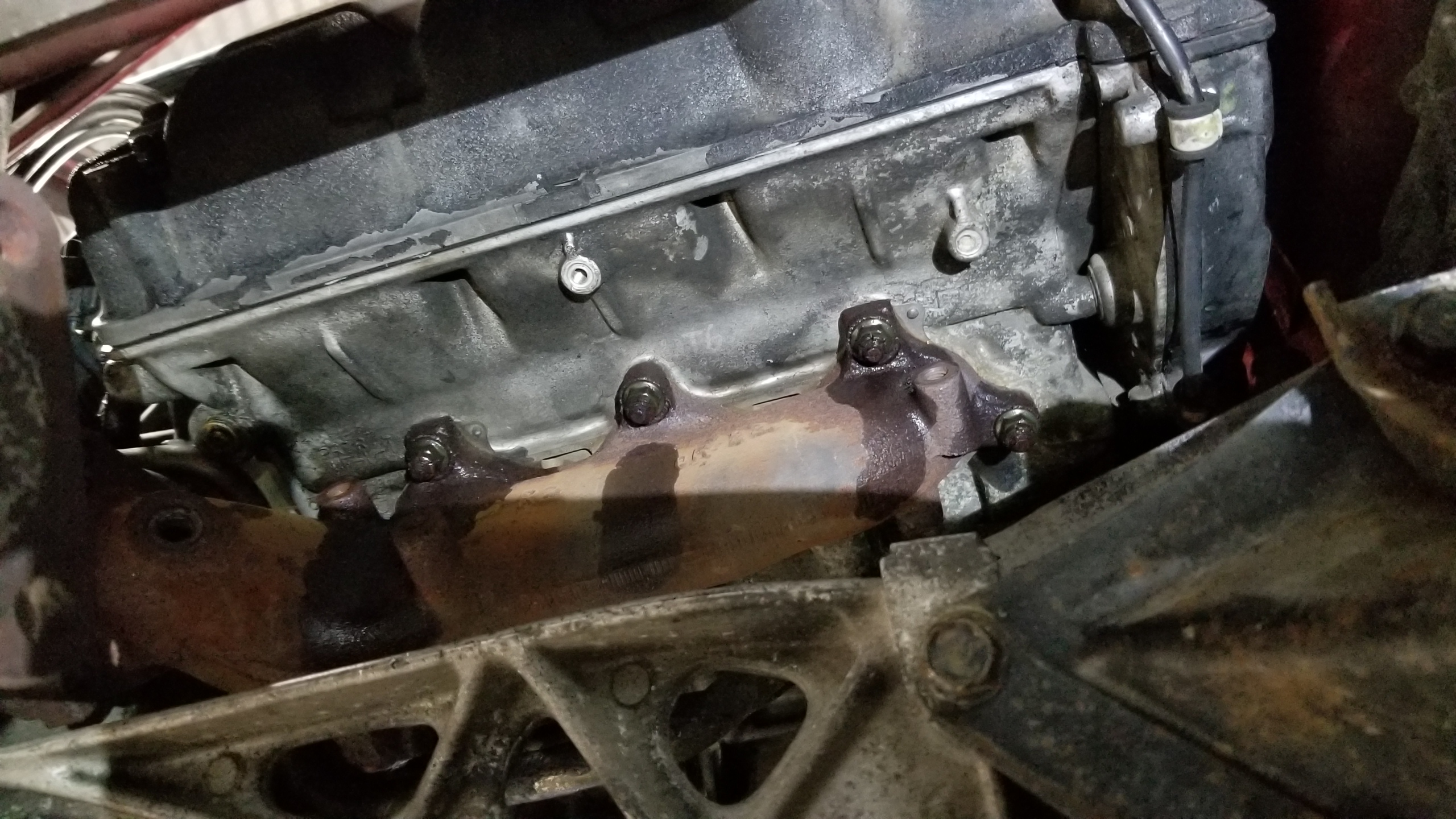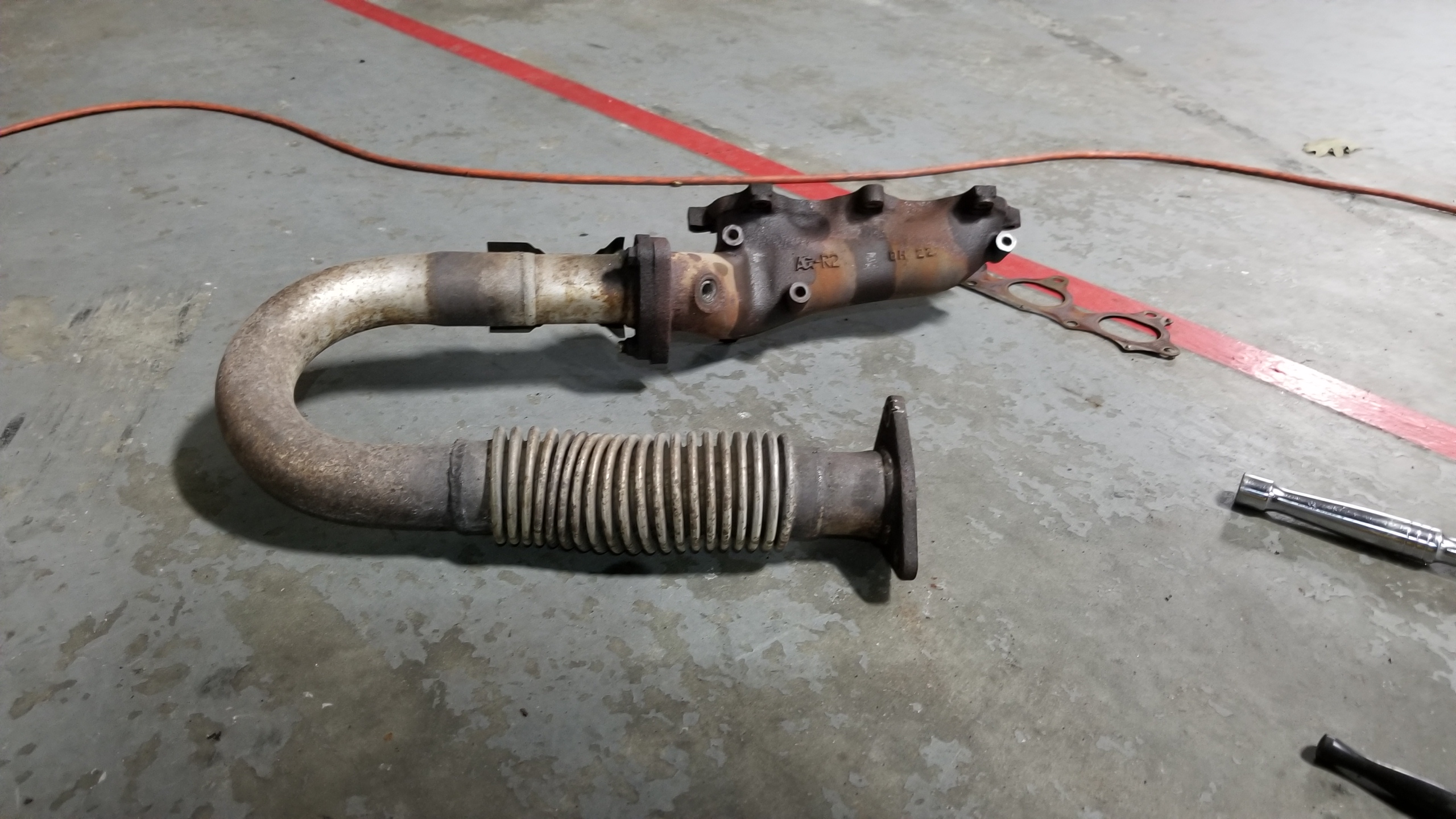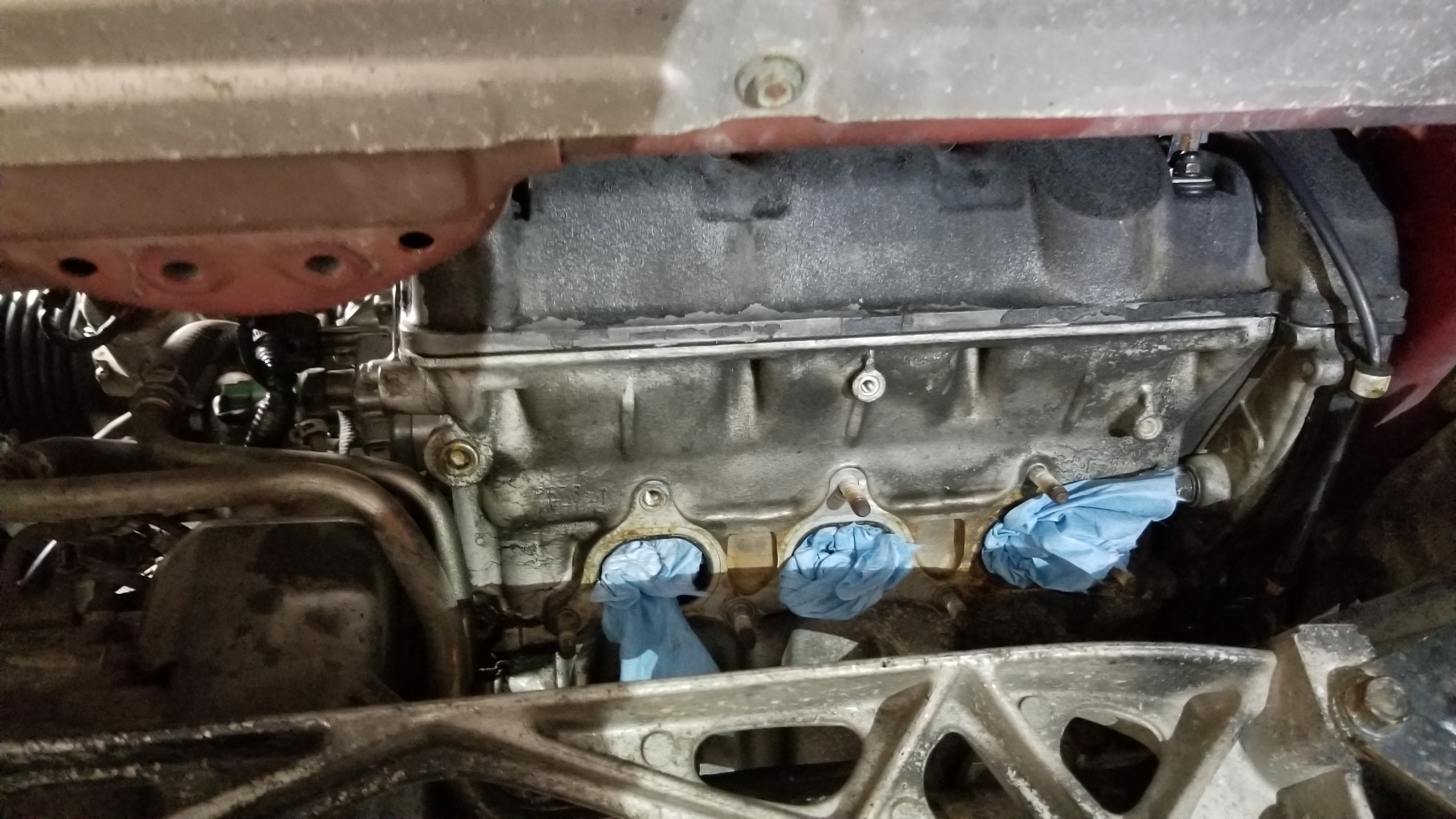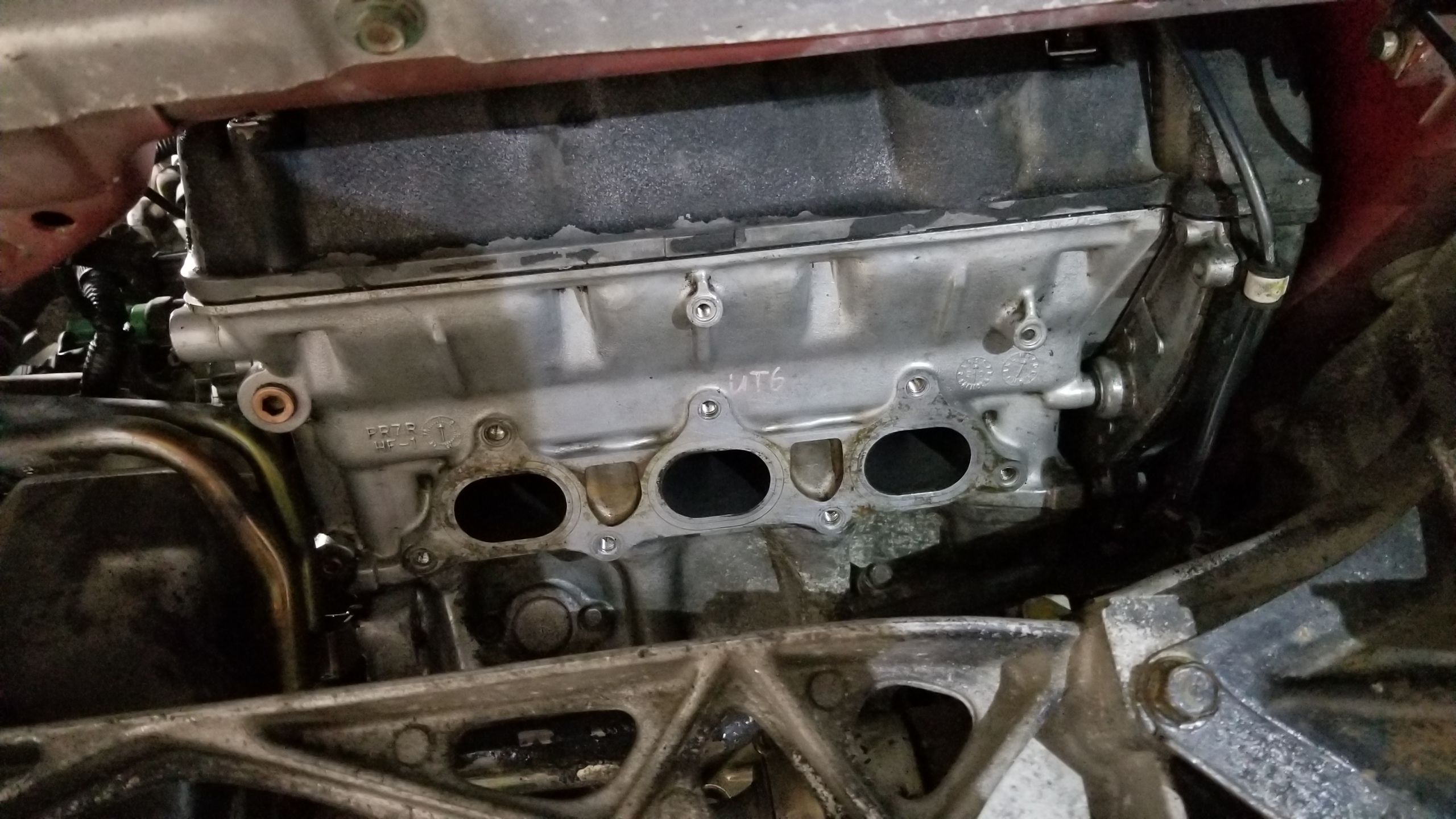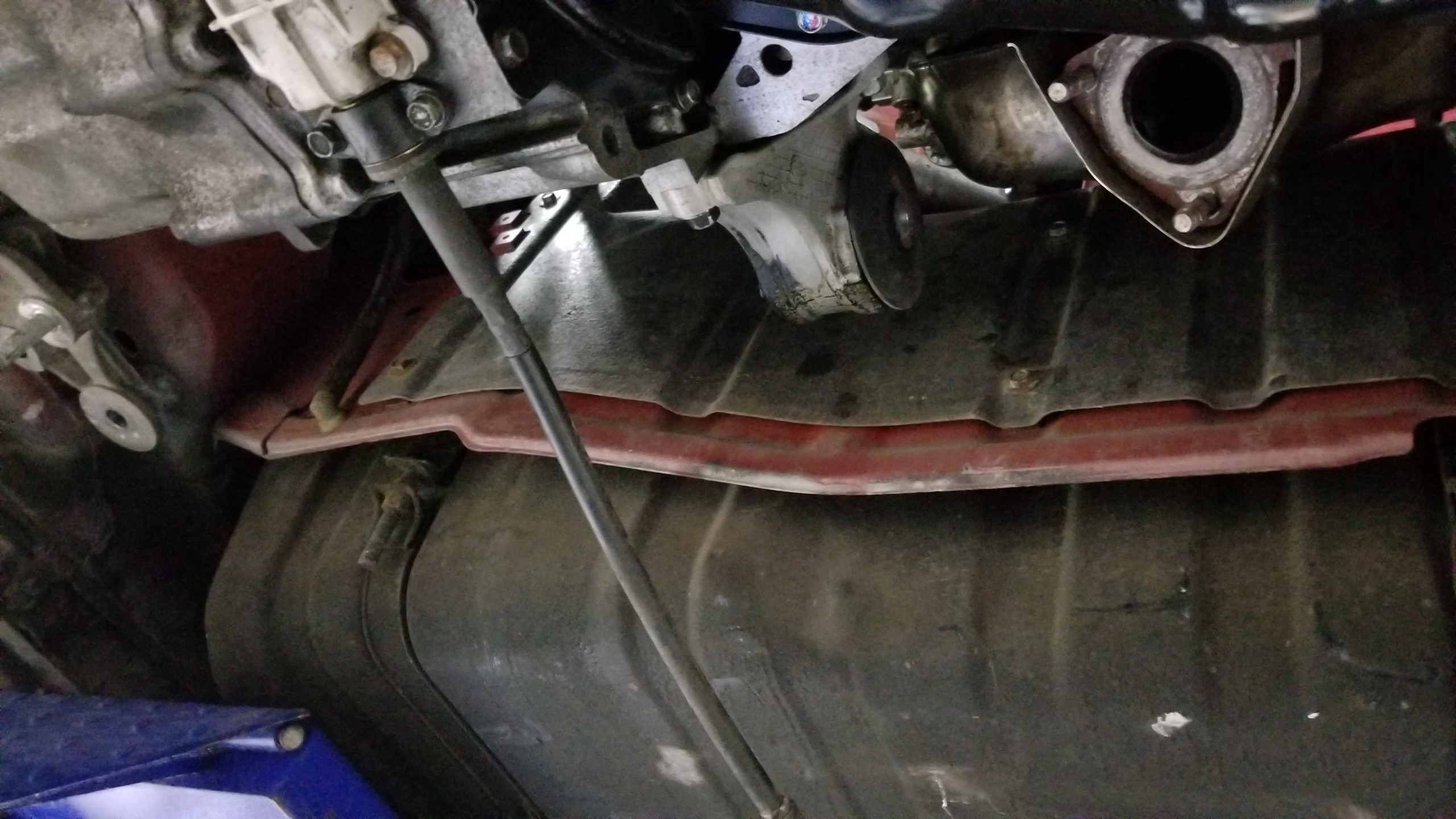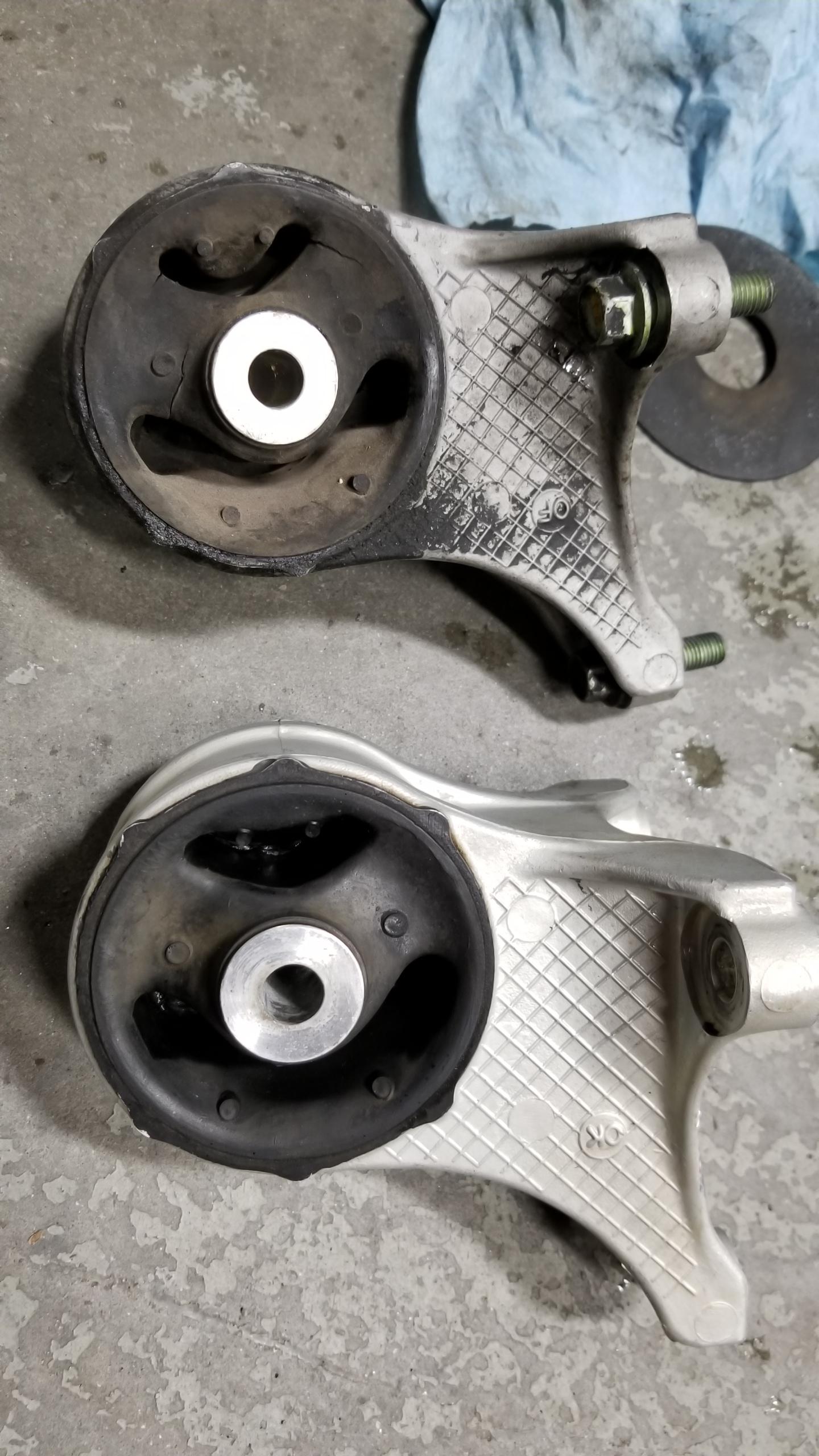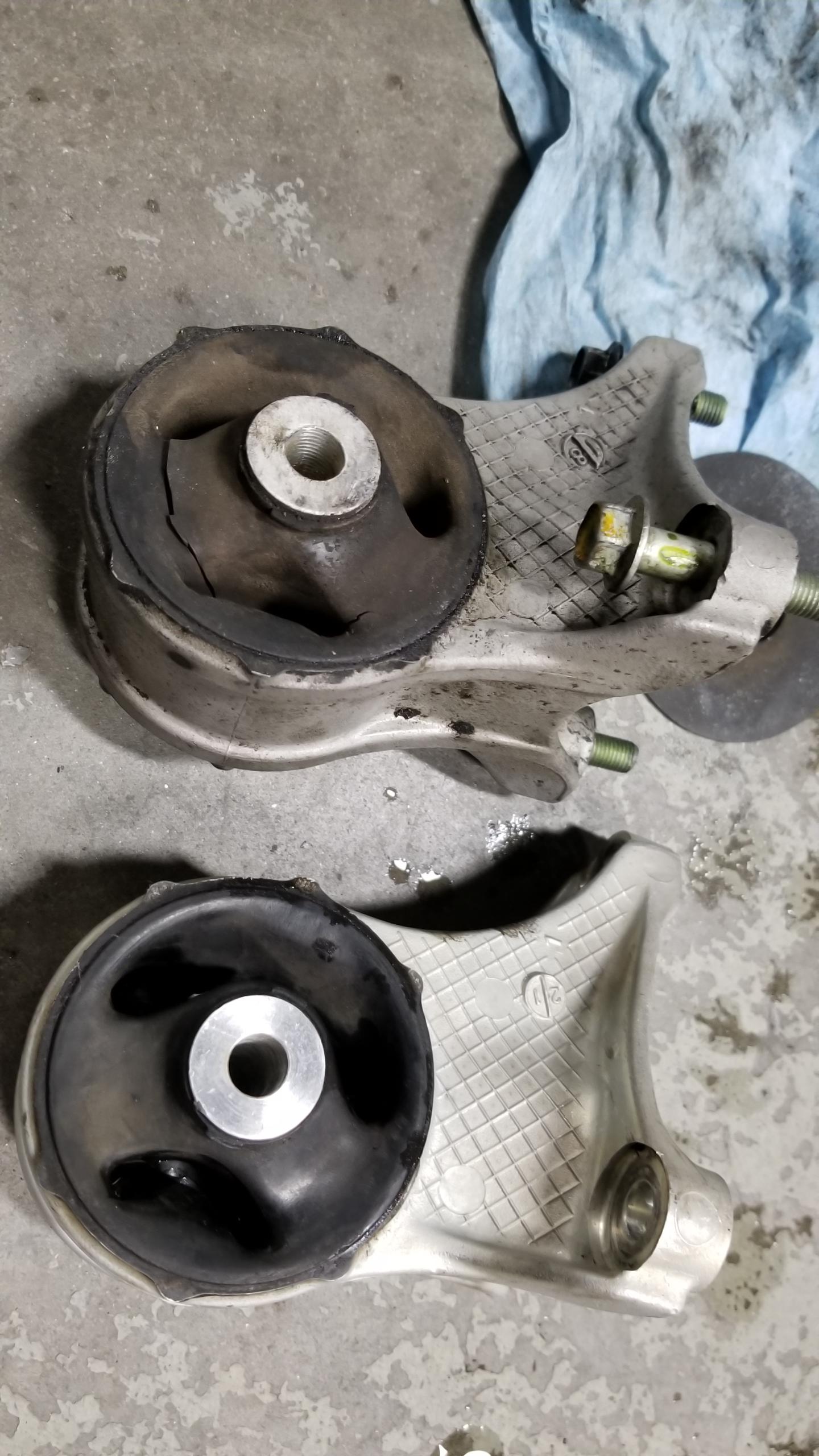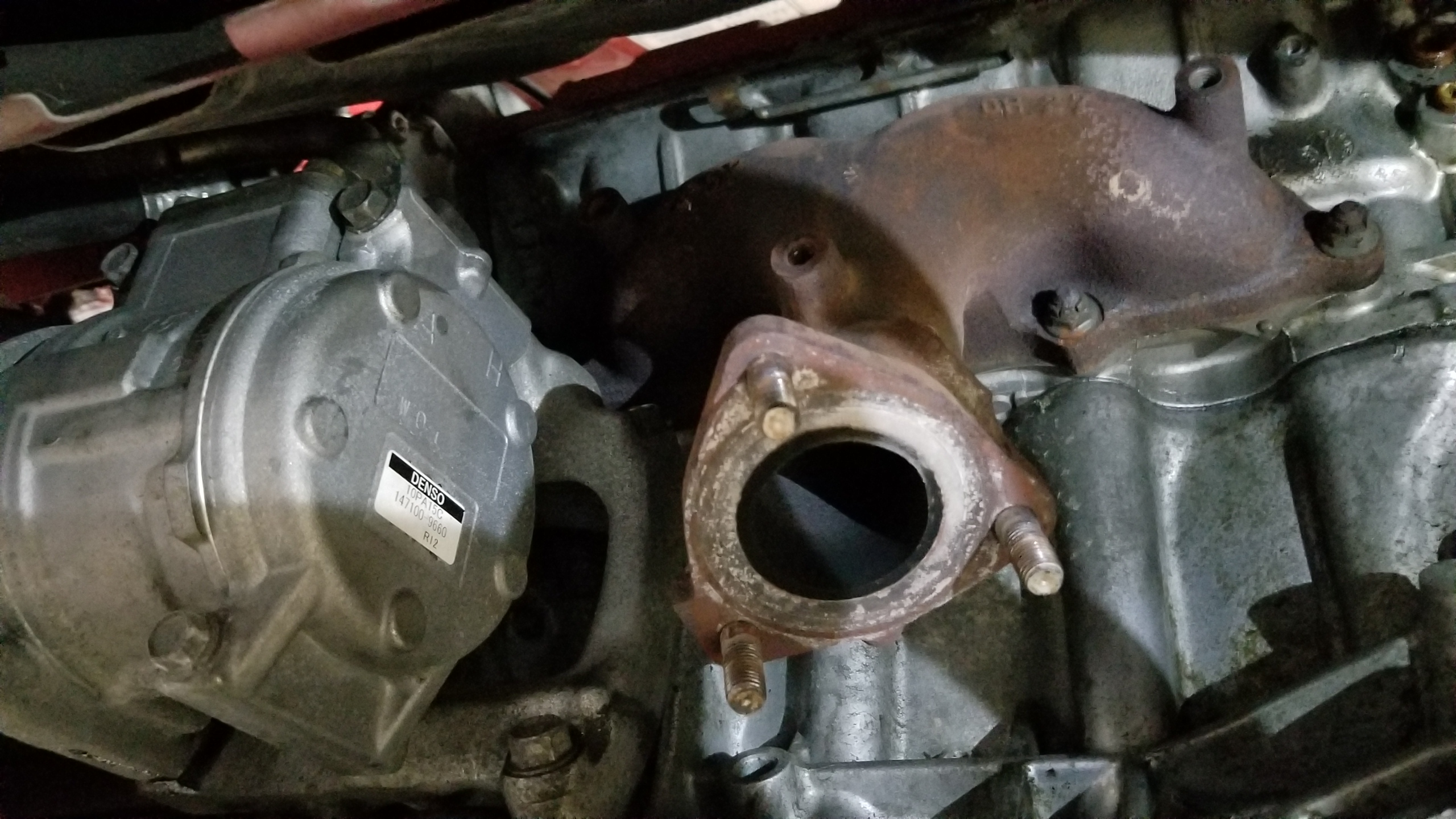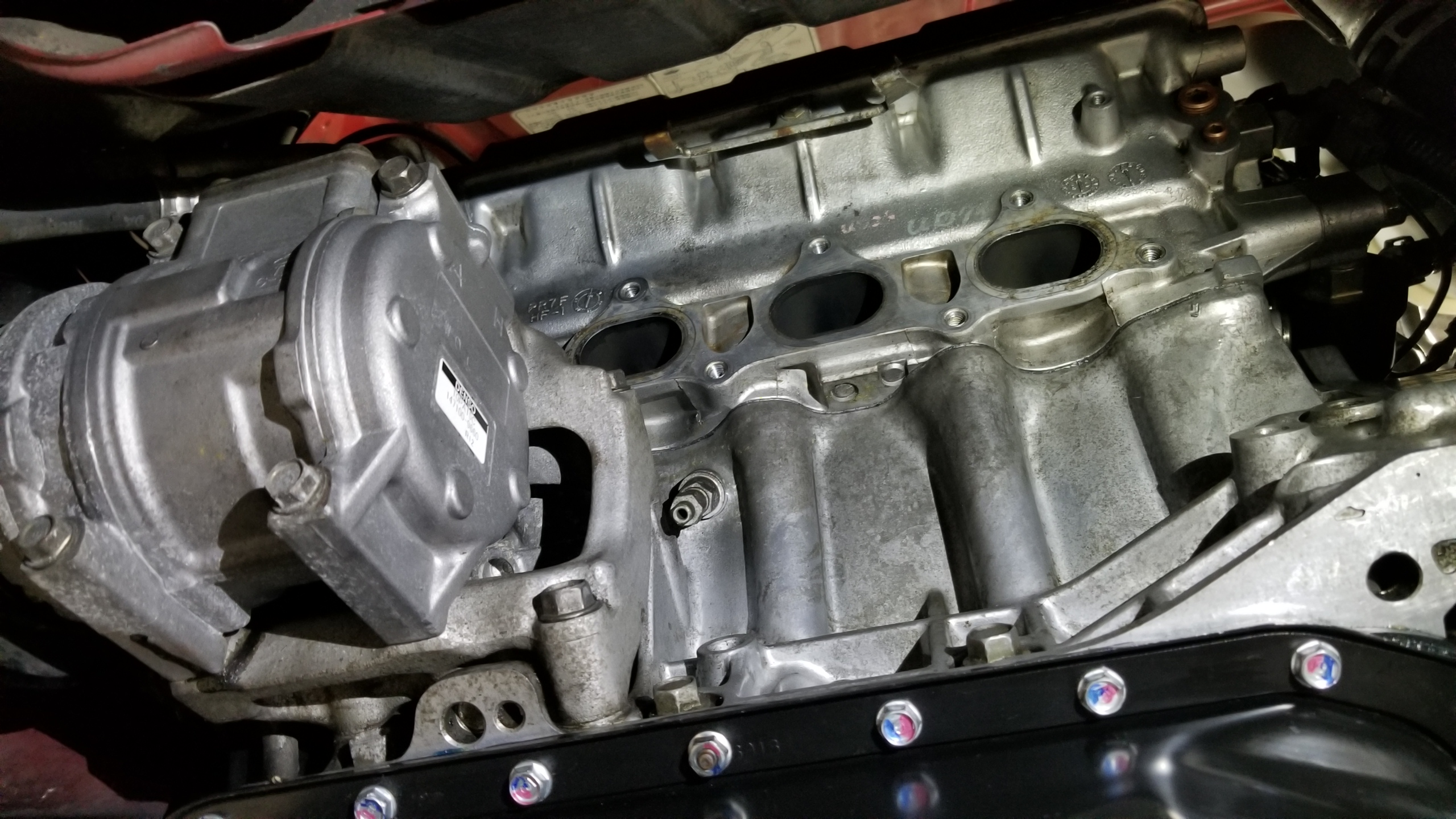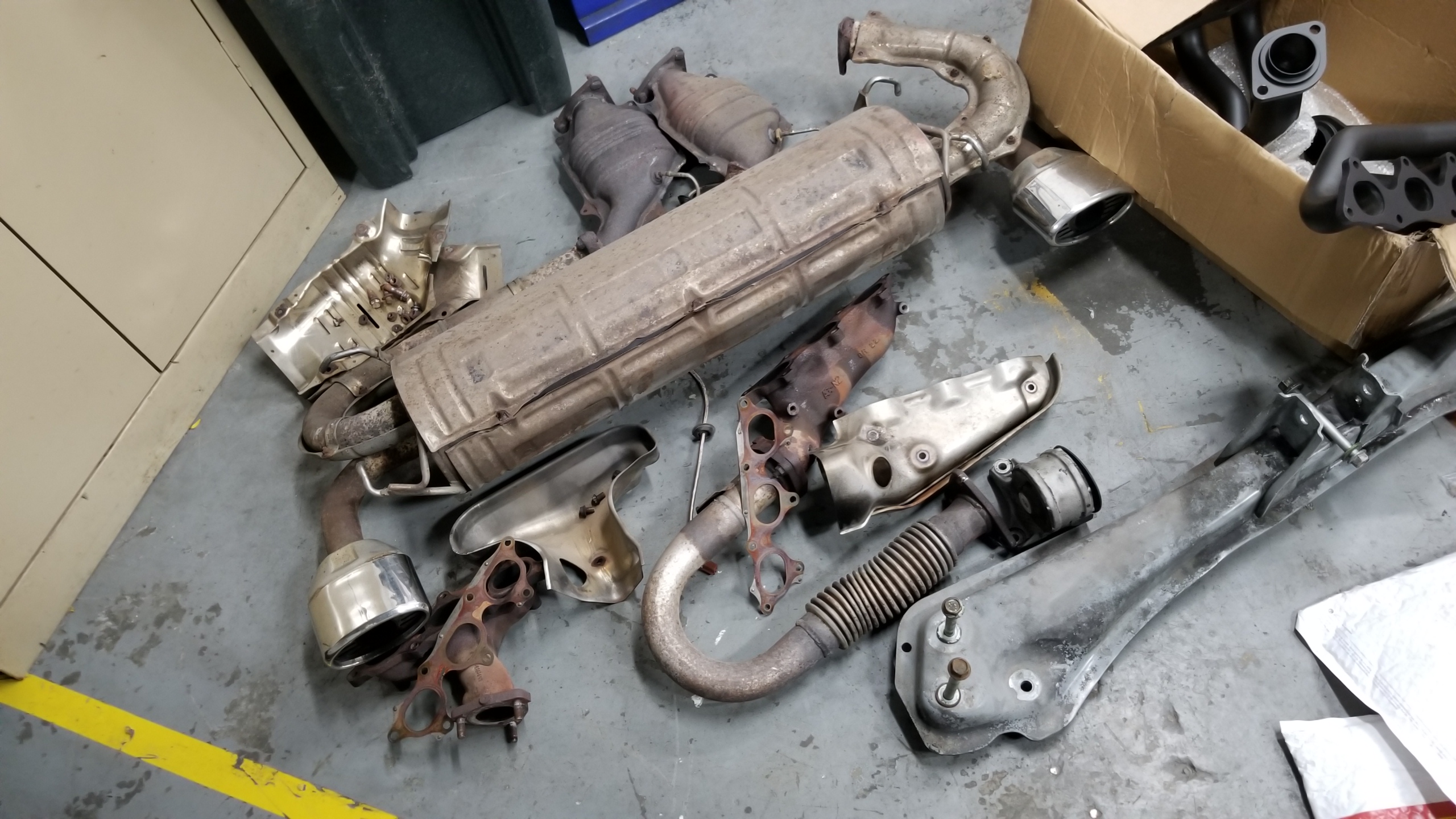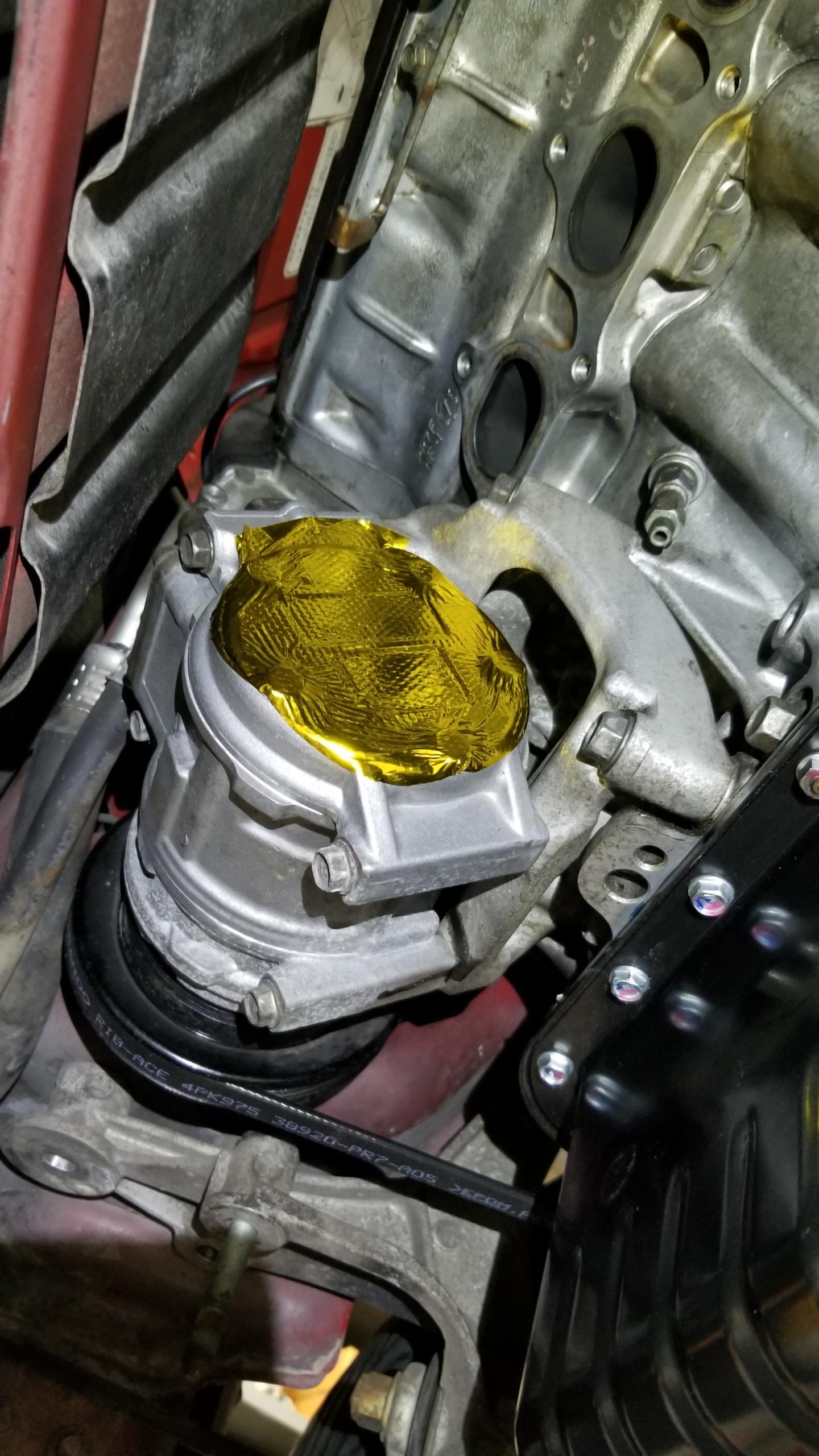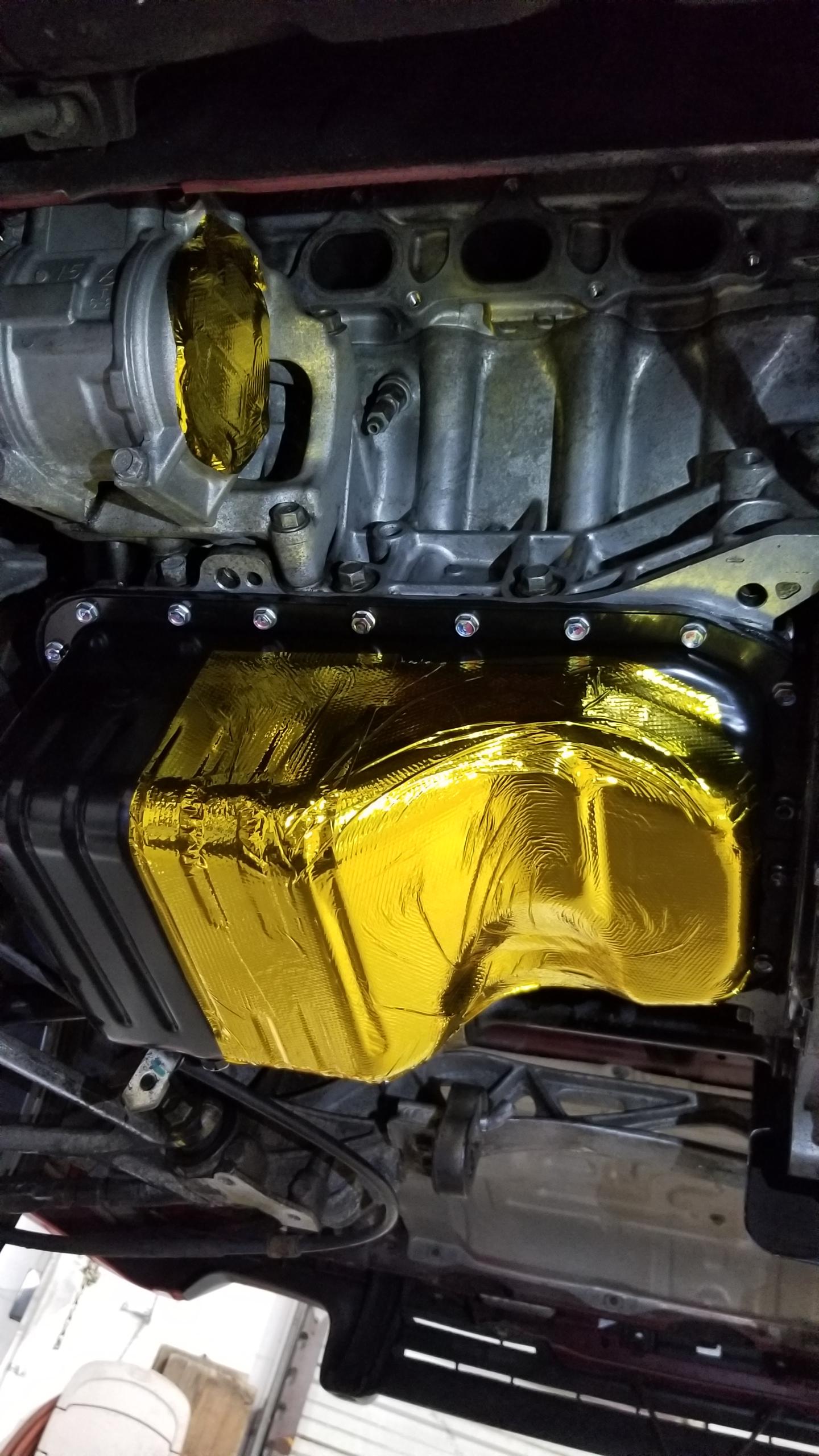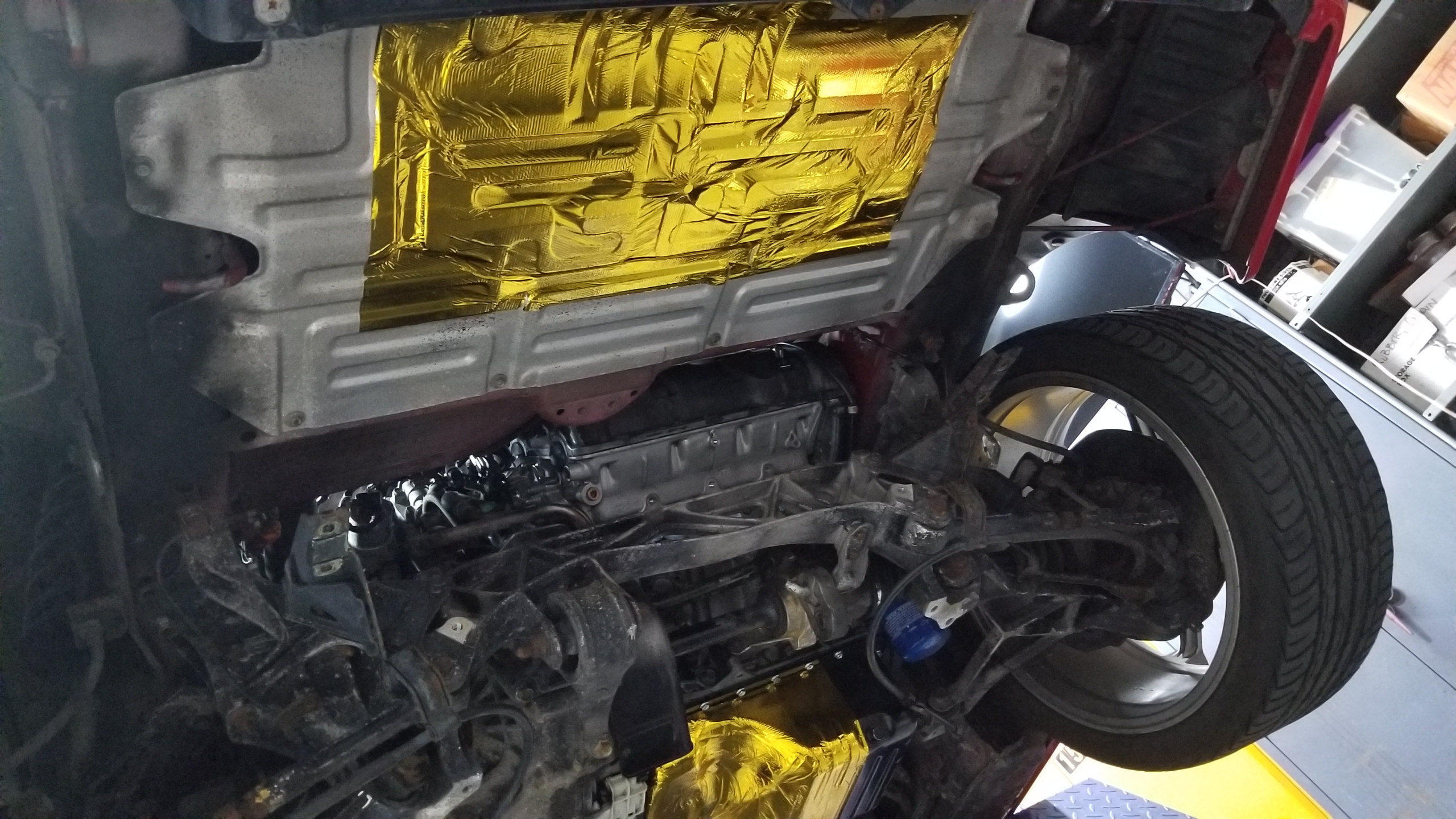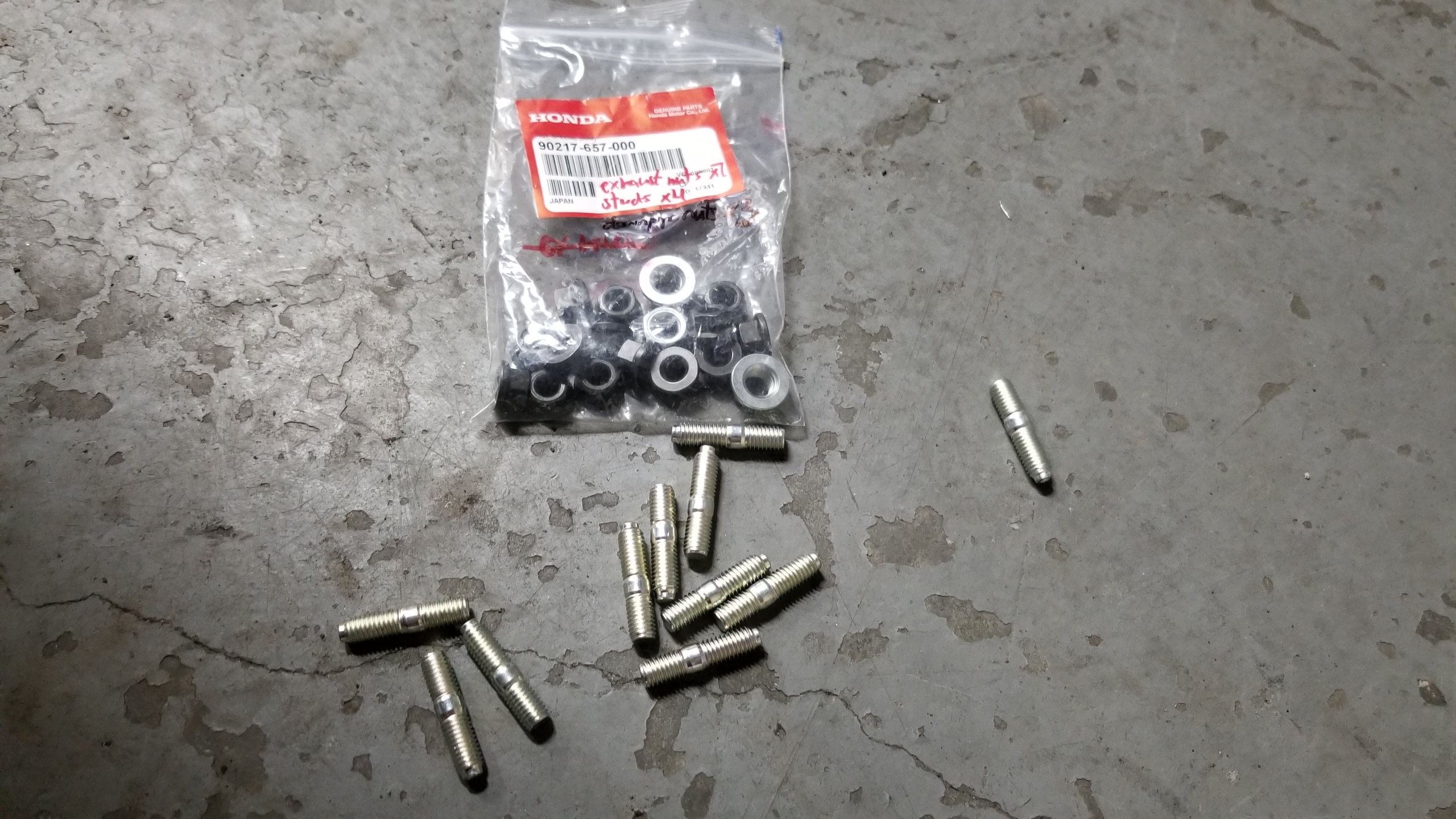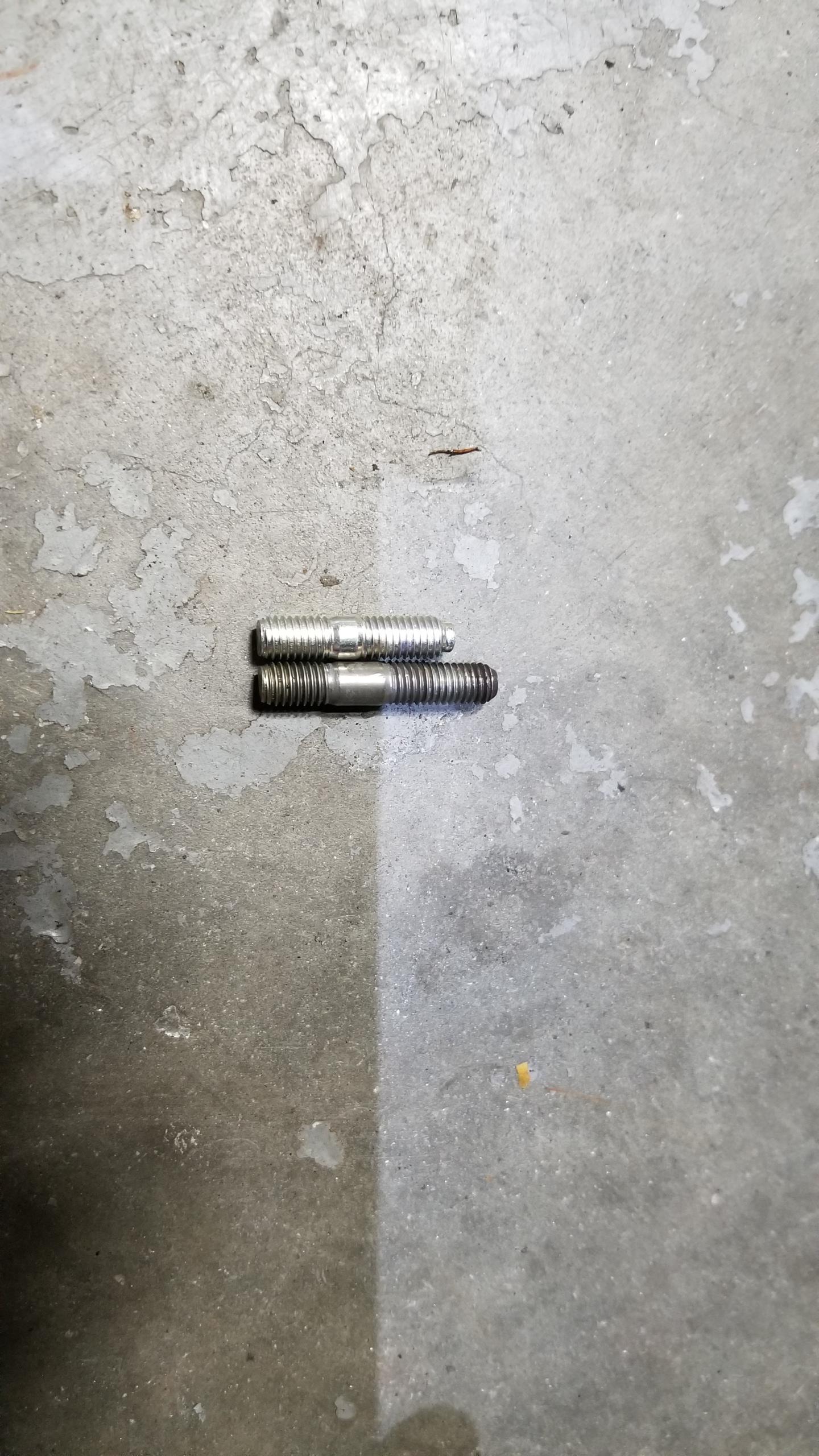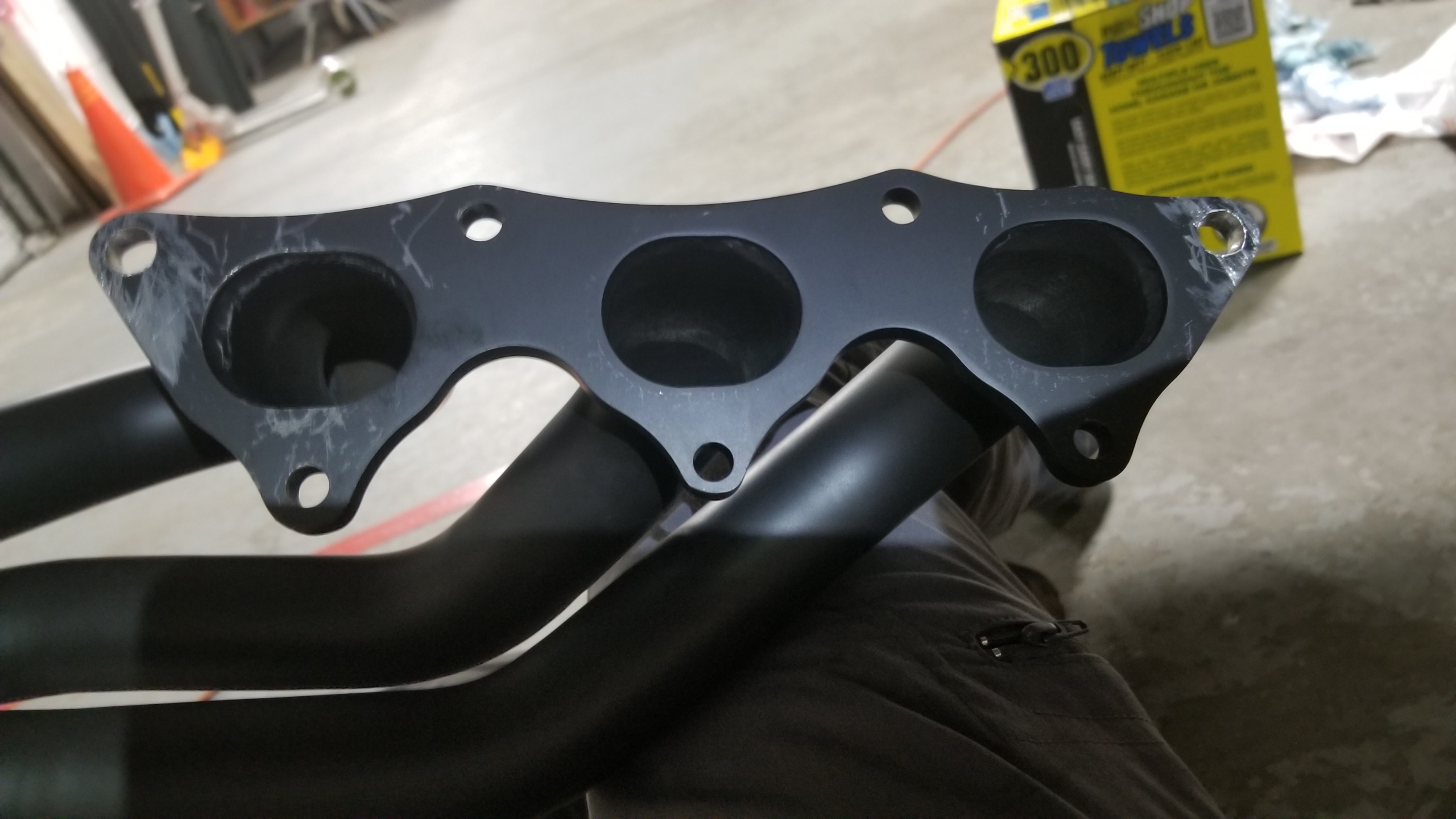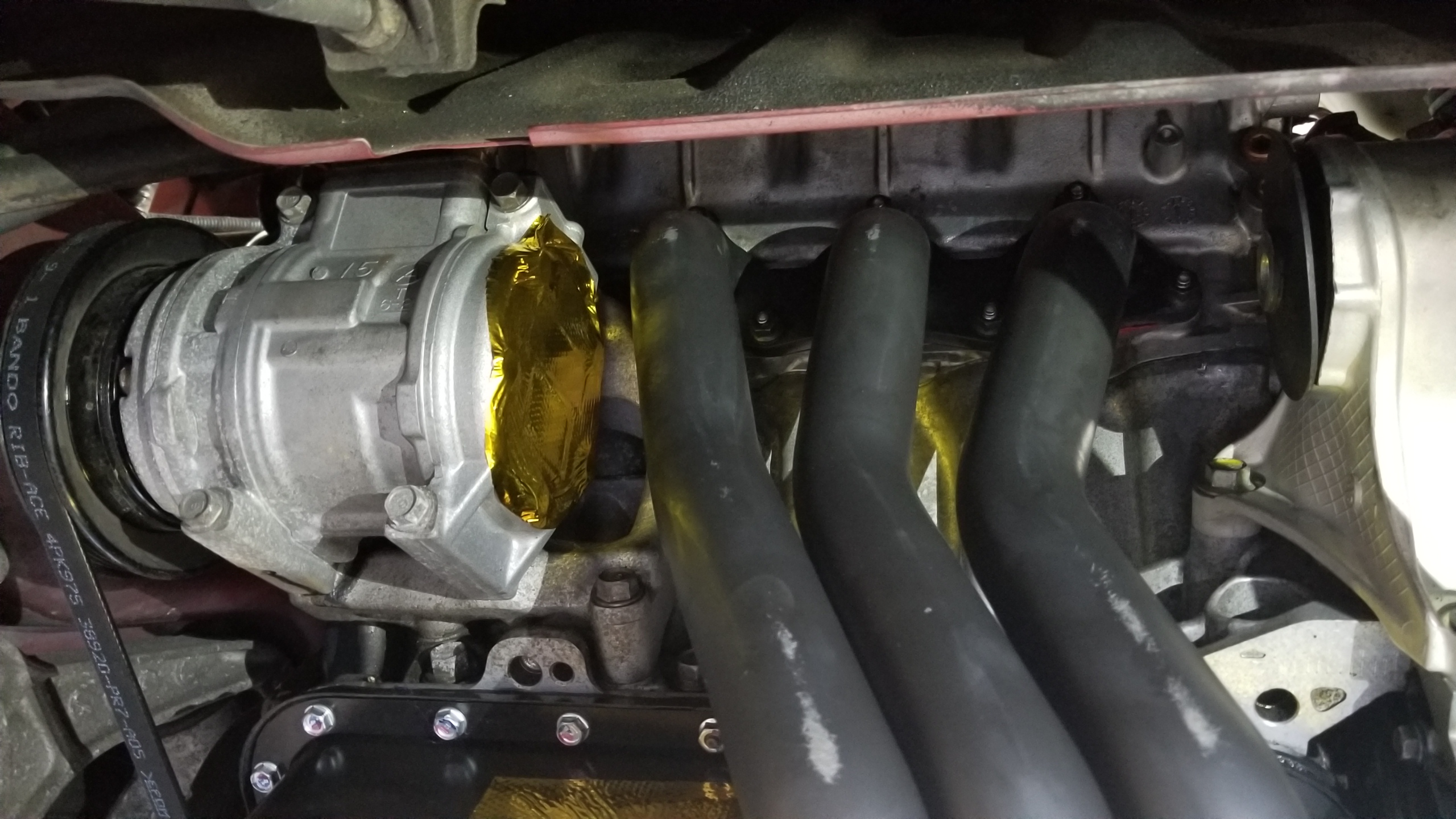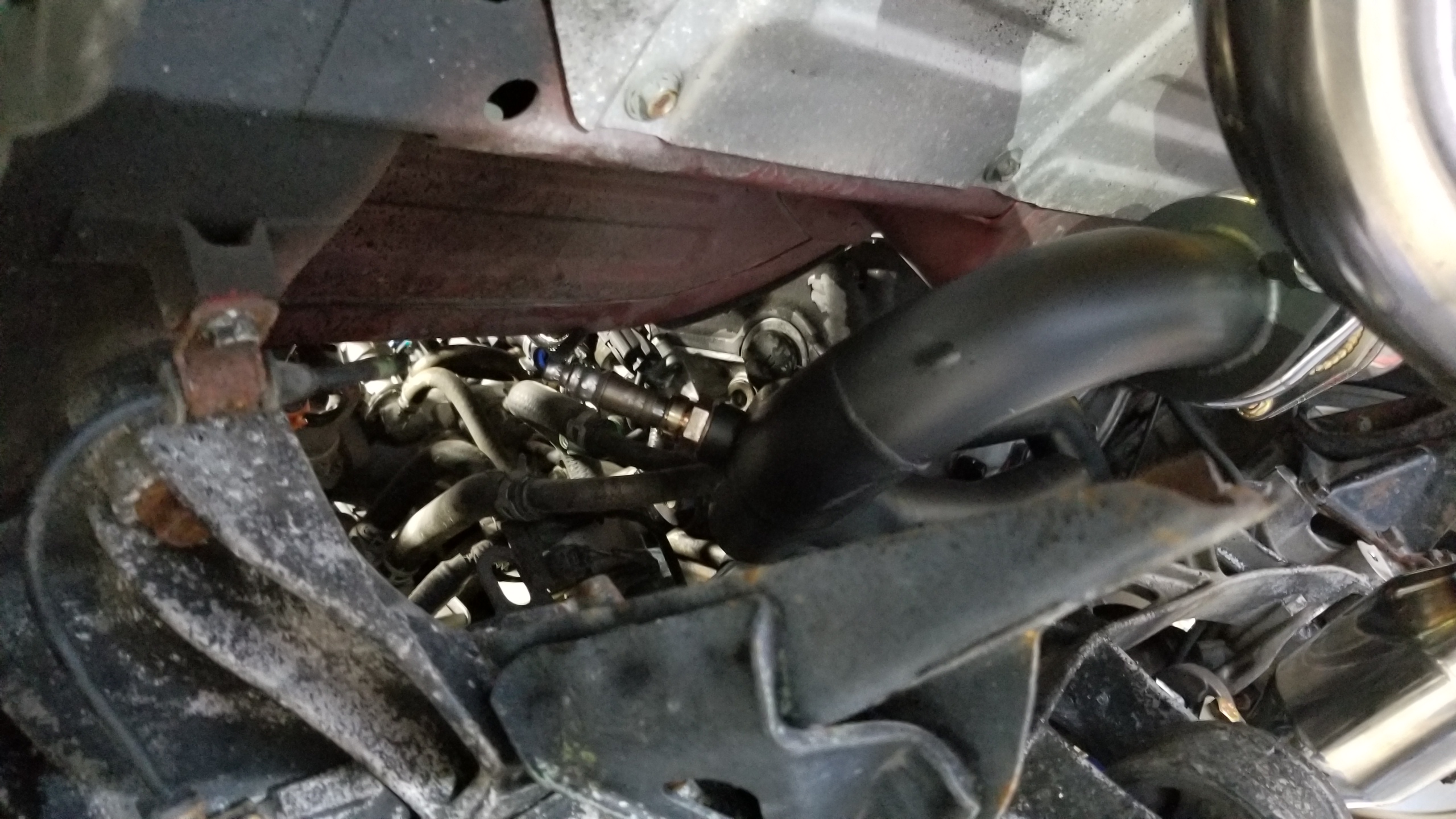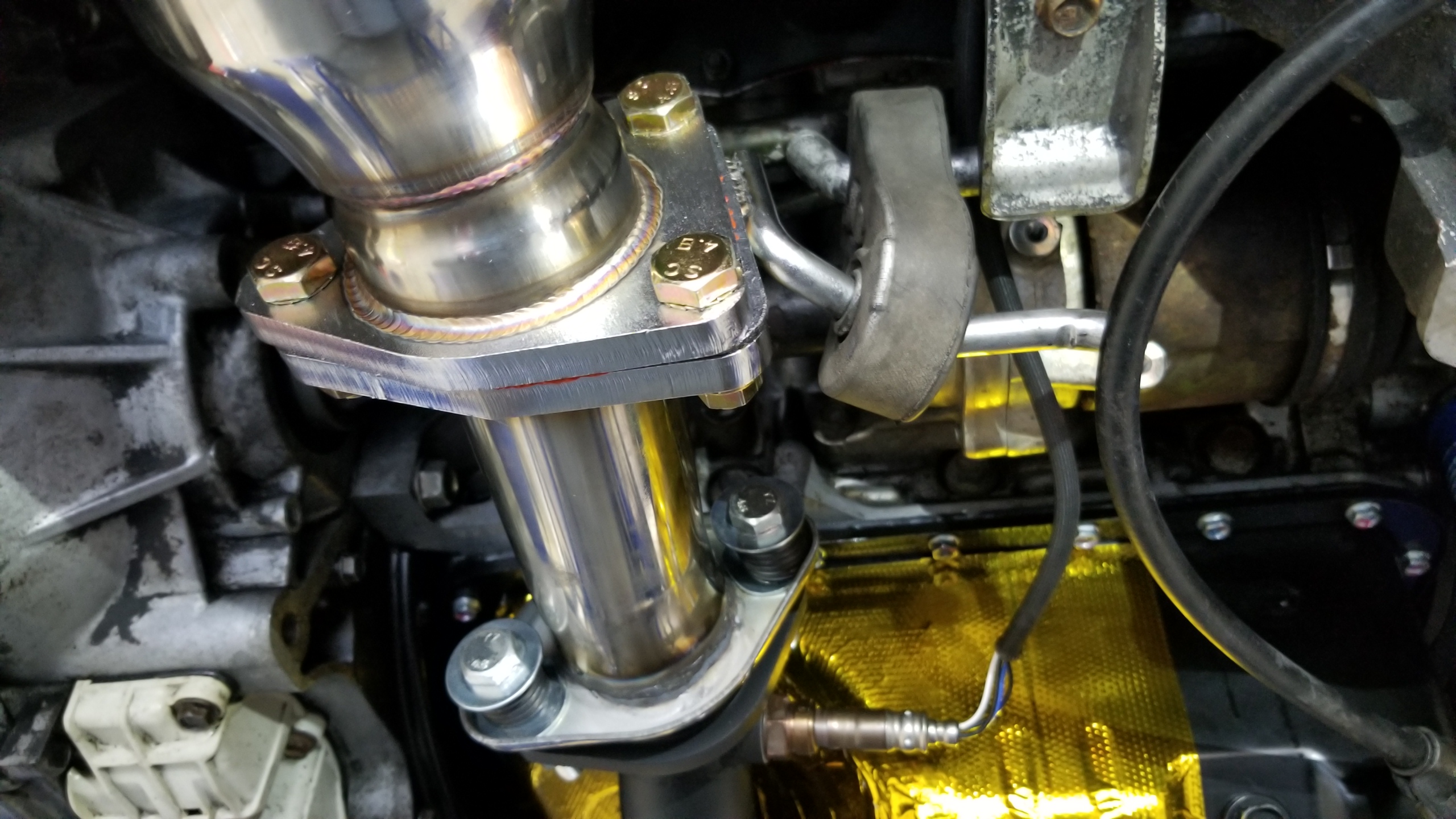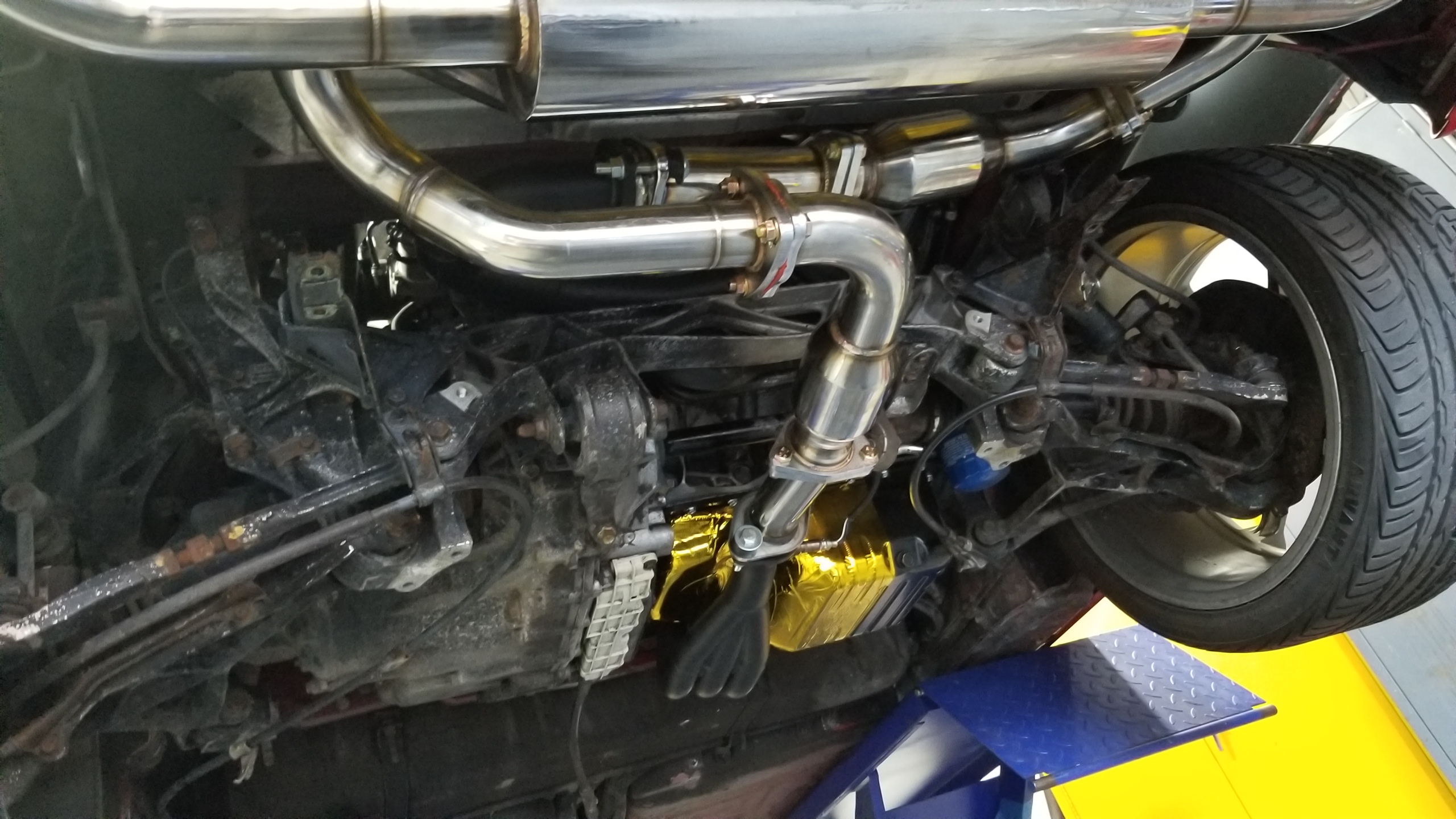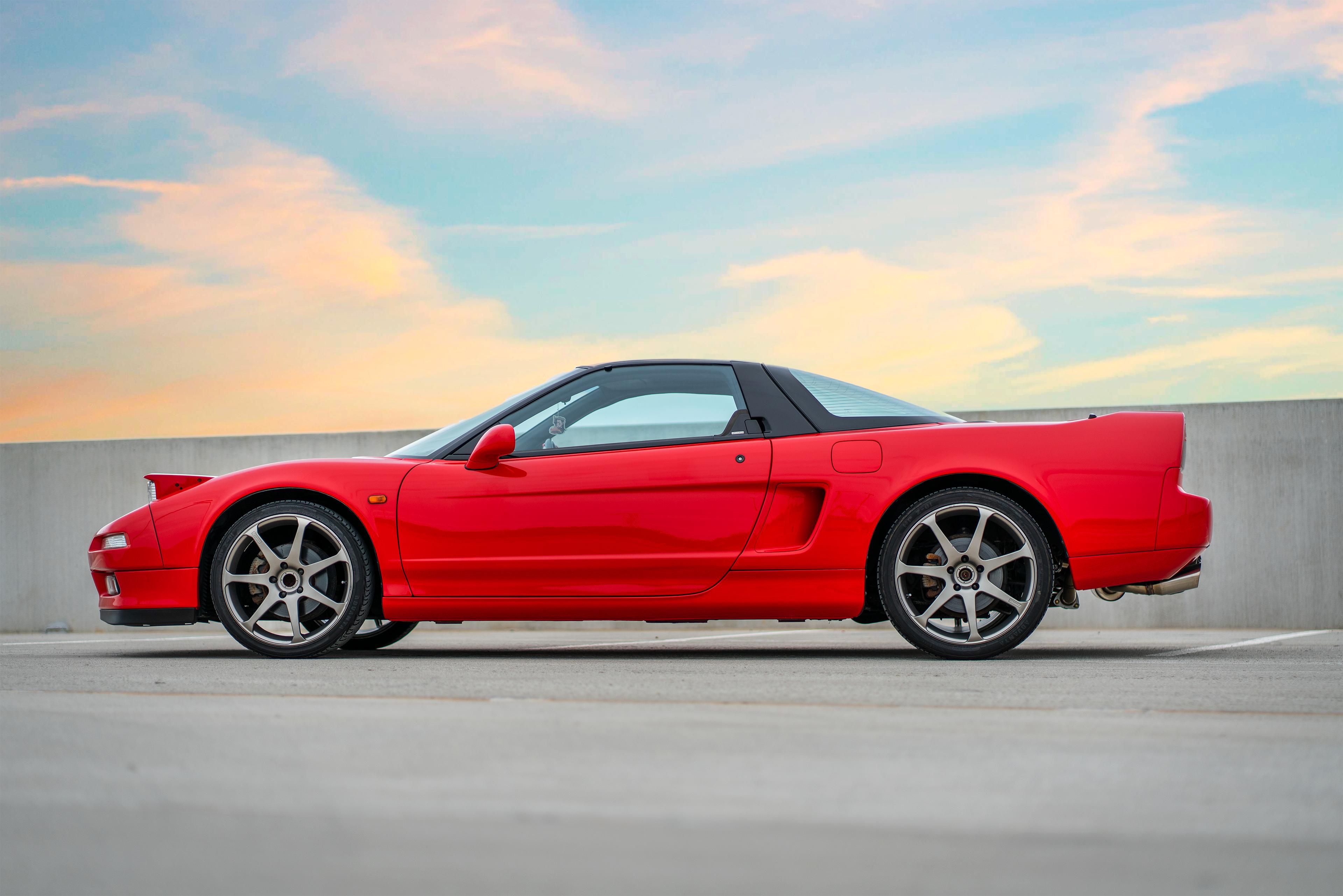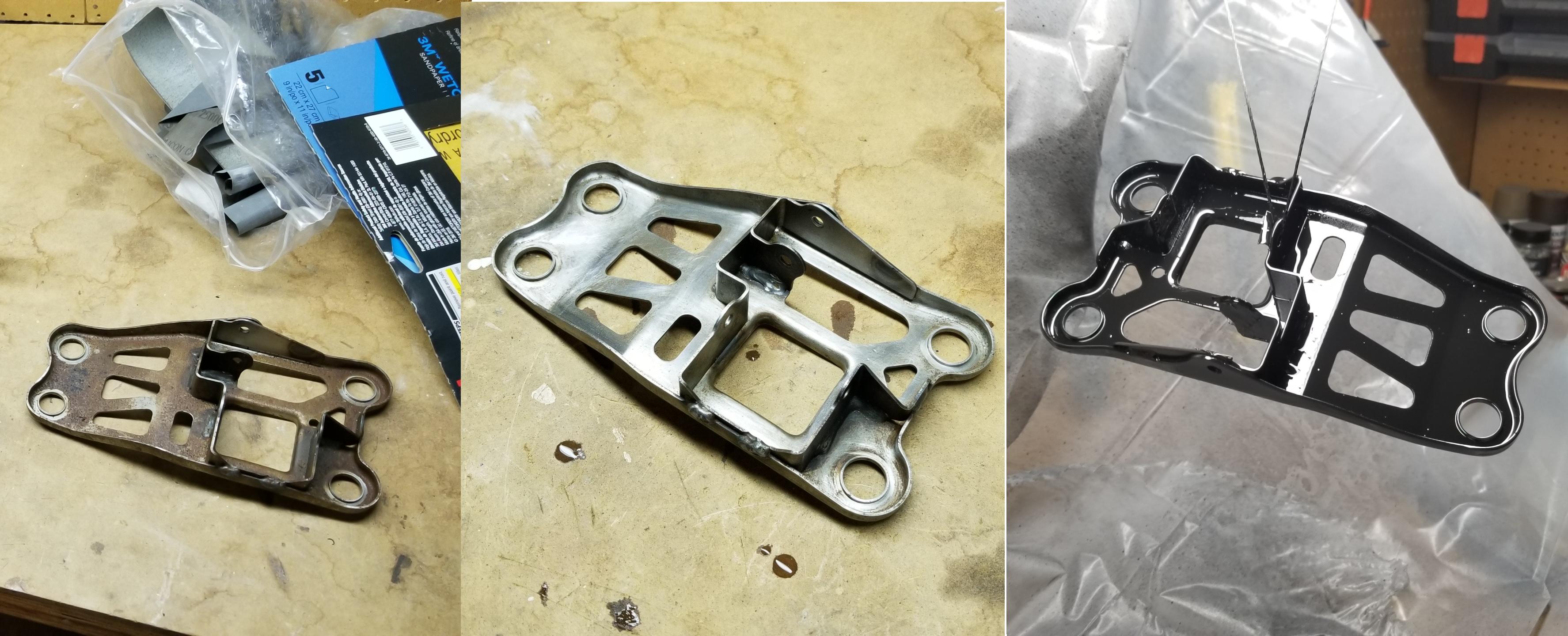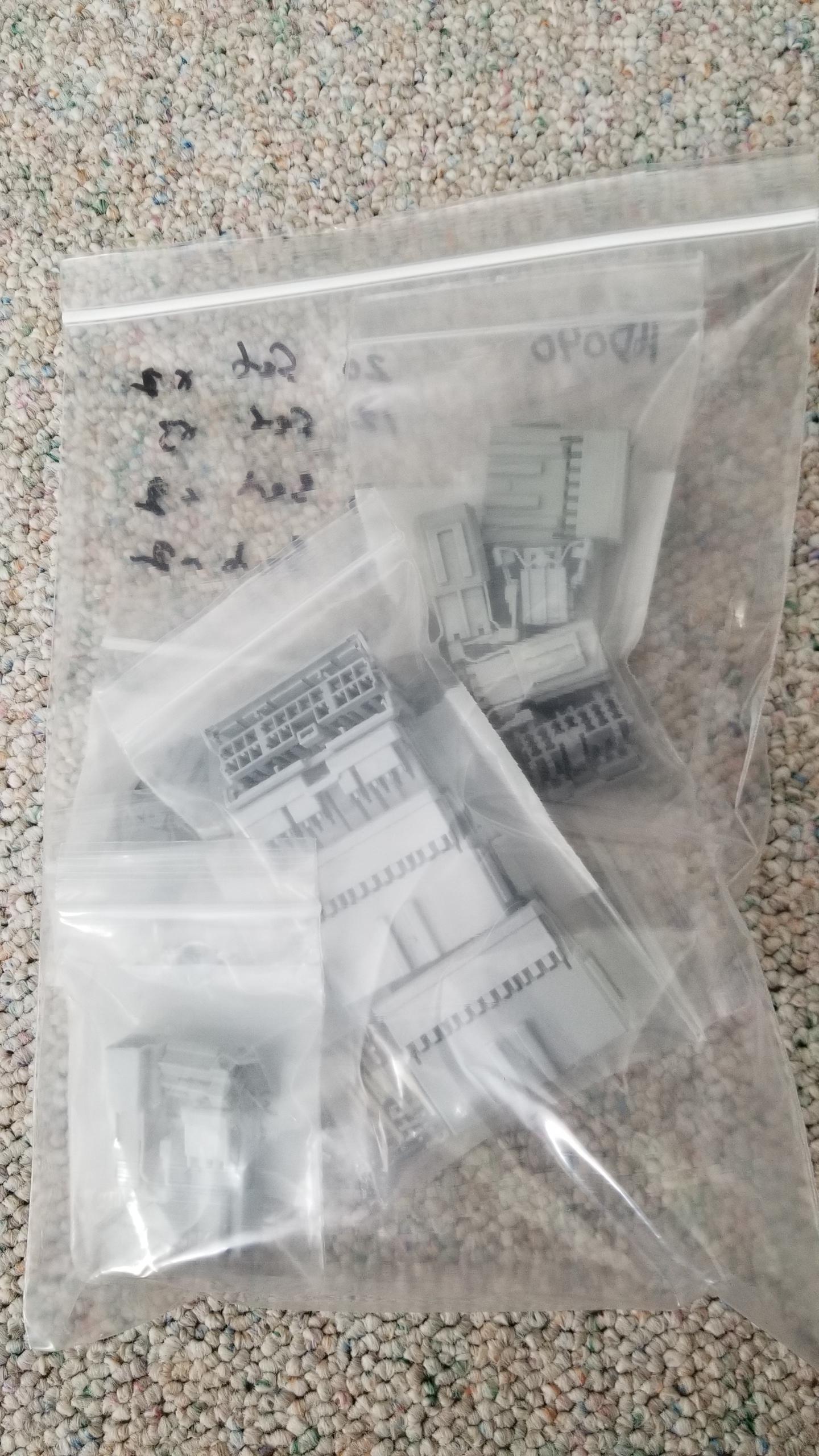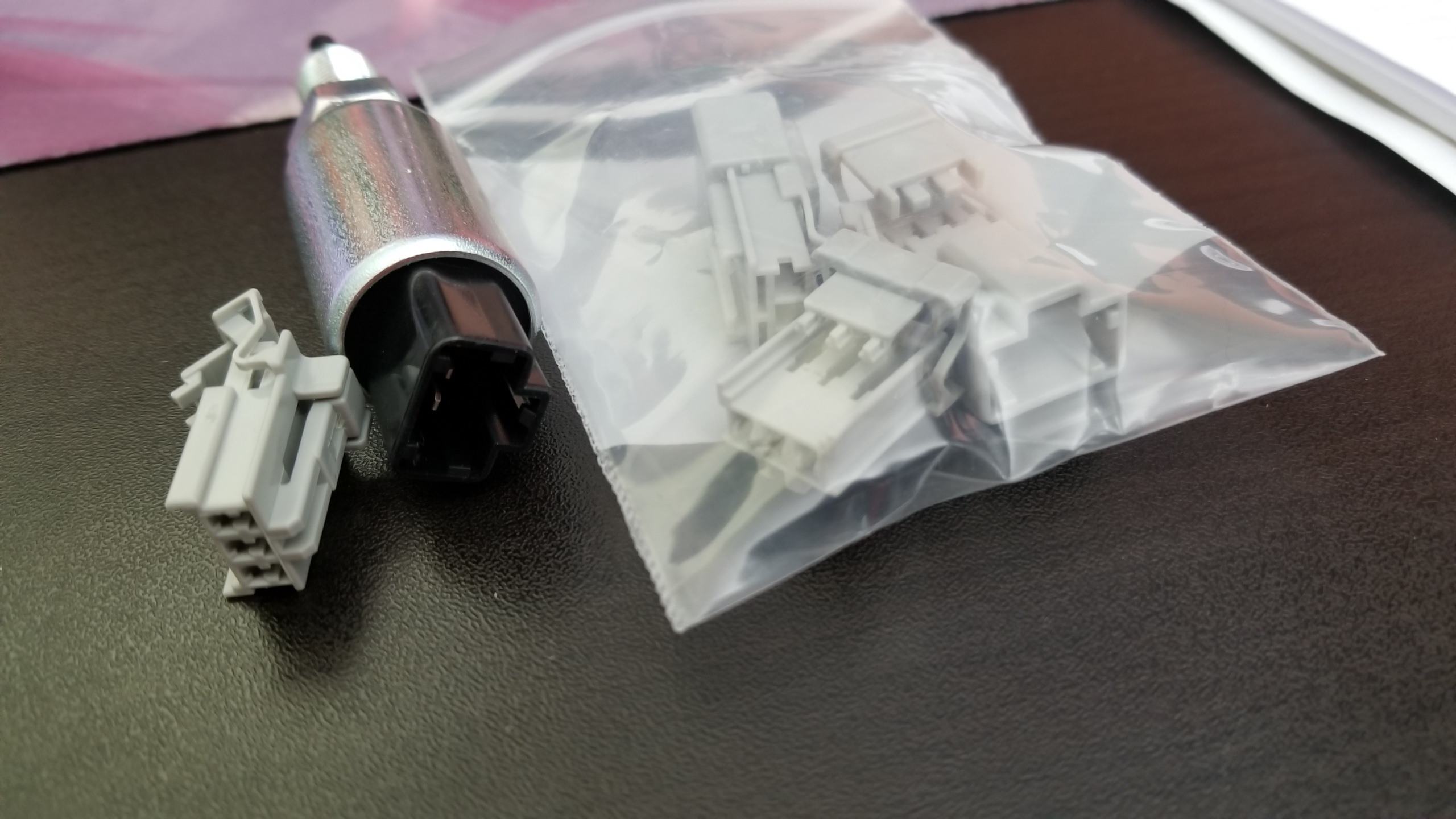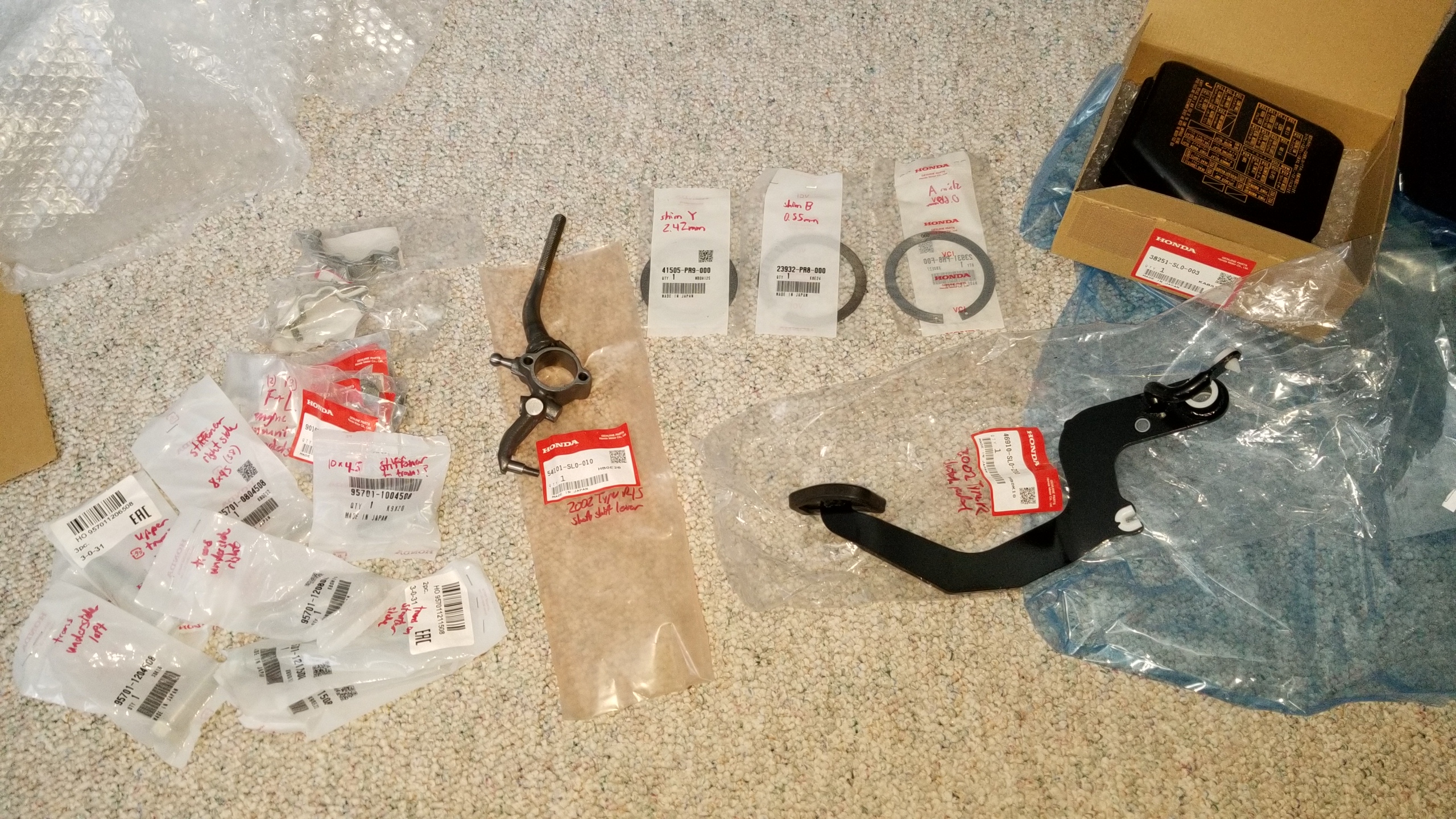Headers & Exhaust pt2
Have you ever wanted to be the most obnoxious person in your neighborhood? To have people in fart-canned Civics rev at you at stoplights? I've found the solution!
Thanks again for Primers putting together this write-up which was my main resource (
http://nsxprime.com/wiki/Installing_Headers). Total time it took me was about 20 hours over two days, give or take. I would give it a "pretty okay" rating on the scale of timing belt being the worst to a lightbulb change being the best/easiest.
This will be a classic blend of semi-DIY and just documentation of the bulk of my exhaust project. There are some fitment related issues yet to resolve as I'll elaborate on at the end.
Headers came back from ceramic coating. I never gave the color I wanted but I think black looks cool enough.
Finally, after all these years, all of the dragon balls have been collected and I'm ready to summon the dragon of loud pipes.
First was removing "rod A", which is easy with an impact gun. I'll clean this thing up and the other major underbody pieces & hardware during a future project.
Removing the heat shields on the rear cats required drilling out the bolts & rivets, which I had already done a while back. The front cats might have been touched beforehand because the bolts were easy to get out and less corrosion on the hardware.
Here is the JDM-only cat temp sensors which I believe are used to give an indicator on the dash that the cats are overheated. I believe this is because of past Japanese law that required them, I don't think they come on later years.
More stuff comes off. I've removed the downpipe several times before so it was easy. The anti-roll bar was only annoying because the large bolts that hold the bar to the sway bar links were difficult to get off without stripping the allen key hole or getting the bolt stuck like I did on the front links and had to cut one off. You don't actually have to fully remove the anti-roll bar but it gave me more space to roll around under the car.
The two temperature sensors come up through grommets in the underside of the trunk. I removed them and the brackets since they wouldn't be needed anymore.
The two brown connectors receive the temperature signals. Taking the grommets out left two nice holes in my trunk to the outside, I left them for now but I'm planning on using the old grommets and filling the cable holes with RTV to seal them up to put them back in place.
Rear cat was able to be removed from the car without too much trouble. Yes, there is a screw extractor in the old snapped-off O2 sensor threads, I'd say it did a great job of sealing in the exhaust while I was gathering parts for this :biggrin:.
Once the rear cat and front downpipe were disconnected, the muffler assembly is only held on by four exhaust hangers. I slipped those off with some silicone spray to help and another person to help lower it to the ground. The whole thing is rusty, heavy, and unwieldy. I know people sell these or keep them but I can't see someone wanting to re-use this.
If you were wondering why I waited so long to do this until I had all the parts, this is why. I would have to cut off all the "studs" and basically chisel away at the flanges to separate these, and they would probably not go back together again. Doing everything at once reduced the amount of rust I had to deal with by about 50%.
This nut extractor set was super handy. For bolts that were not hex-shaped anymore and you can't fit a normal socket to, just find a tightly-fitting extractor bit and hammer it on to the bolt. It'll either break it loose for removal or snap the head off the threads, either way it'll separate the parts. For the heat shield bolts this was pivotal.
Rear heat shields came off. The fronts were actually fairly easy, the rears have less access and the bolts were more corroded. There was one bolt on the top that was basically a circle and it took a couple of tries with a dremel and extractor to grip it enough to buzz off.
Sprayed the 7 manifold bolts with Aero-Kroil and let it sit for a bit. This was an important part and fortunately the studs and nuts looked pretty good. It really only took maybe 5 minutes to zip off all the nuts with a 12mm 6-pt socket and my impact and take the whole thing off.
Bada-bing.
Rear bank looked okay but has plenty of 30 year old grime around. One of the studs came out with the nut, I actually would have preferred if all 7 of them had came out since I was replacing them, so I double-nutted them and used a socket & wrench to remove the studs one by one.
The tops cleaned up really nicely. Ready for the new hardware and headers, but I'll move to the front.
The front crossmember has to come down, which is the sole reason that the front headers are much more annoying of a job. I ended up removing the A/T shift cable to put the crossmember back on, it only took 10 minutes to remove & replace.
It took me a while to figure out how to remove the through-bolt from the front engine mount, I think the best way is to remove all of the other cross-member bolts first and leave the mount bolt for last to give you enough room to get a socket & wrench on both sides of the mount. Fairly easy off, but I knew putting it back on would be the biggest annoyance.
Three bolts later and the front mount came out. Top old, bottom "new" after some clean-up.
Lucky that I got all 4 mounts instead of just the A/T specific ones. The old mount rubber was almost completely separated from the bracket.
Front heat shields taken off. As you can see, still living that R-12 CFC lifestyle. That'll be a fun day when my A/C eventually goes out.
Once again, after some penetrating oil and a few combinations of sockets, wrenches, and an impact, the front header came off. Note that I left the A/C compressor alone, a few write-ups say to remove the compressor from the block to get room to access the left-most manifold bolt but I found it unnecessary. You can't really see that stud from the bottom but it's easy enough to remove with a ratcheting wrench or medium length socket & swivel.
Did the same trick to remove the studs and spent some time cleaning off the block to remove grime from past oil leaks and general schmoo.
The pile of crap keeps growing. Most of this is fortunately not going back on.
Now that I'm at the halfway point of starting to put stuff back on, I started to put on some leftover heat-reflective tape from a wrecked McLaren F1 at my local Pull-A-Part. I spared a bit to put on the back of the A/C compressor to cool it off a bit from the headers which run right next to it.
Spared a lotta-bit for the bottom of the oil pan for some future-proofing to reduce oil temps by a couple of degrees. I'd be lying if I said I had data to justify that but my engineering gut tells me it would help oil temps with the new headers with more surface area under the pan. The ceramic coating should help a bit too.
The rest of the Reflect-A-Gold went to the underside of the trunk since I had no other use for it and it might help cook my groceries a bit more slowly. It does get pretty hot in there after driving for any longer distances.
New manifold hardware. I manage to get 11 of the 14 new "NA2" updated studs, the remainder was backordered or otherwise unavailable at my Acura dealer so I had to re-use 3 of the old ones that looked the cleanest.
1st gen vs. updated stud design. Not sure if the materials used are different but the shorter stud helps reduce the amount of corrosion on the threads.
Here's one of the parts that really shit in my oatmeal, the Pride V2 headers did not fit on the manifold studs on the block. The two lower holes on each end were 2-3mm too close together, and the headers would not fit properly on the studs. I had to drill out both of the holes on both the front & rear headers to allow them to slip on. Yes, they were square to the block when I tried to fit them and no, taking the studs out and trying to put them on after the header would not have worked. That was a waste of two hours and a ruined coating on the flanges from drilling & filing. Disappointing but not enough to stop my progress.
Fronts finally installed. The coating scratches quite easily and test fitting the headers several times to check my new holes didn't help keep it fully intact but it should be fine. All the nuts were oiled & torqued on, the only one I couldn't torque was the one under the A/C but I got it gutentight.
Rears installed & torqued. You can see the new location of the rear O2 sensor, I think it's a bit easier to get to now. The wires could be routed the same was as factory with with the wire extensions, there was enough slack between the bracket and the connector clip that I just zip-tied the wires to the upper wiring harness across the rear valve cover. Don't want the wires drooping down onto the headers and melting.
Little out of order, but this is where the new front O2 sensor sits, behind the oil pan. I routed these wires up through the rear brace (away from the CV axles and rear header), up to the rear O2 clip, and over the engine near the alternator up to the front valve cover where the factory plug was. The longer wire extensions with the Pride kit weren't long enough to use the OEM clips, so I removed the little black ignition coil/wiring cover and moved the O2 bracket up to the top valve cover nut.
By the way, there is a large metal black piece in the rear of this pic that covers the back of the A/T and the intermediate shaft, I assume it's a protective cover/heat shield. It has to be removed to have a chance of fitting the rear headers on at all. It would've been nice to have some instructions for this.
Working from the headers back, a friend an I put the rest of the exhaust system on, including header adapters/donut gaskets, test pipes, and the V2 muffler. I left the hardware loose to try and line all the flanges enough to get bolts through them. There was a hydraulic lift table to use that I took to lift the new exhaust up into place and fit the old rubber hangers onto it, so it was fairly easy. It was a bit challenging getting all the flanges to line up properly, but after an hour or two of adjust this and loosening that, all the bolts were on and then we could tighten everything up.
Reassembly was pretty self-explanatory but I was rushing a bit more and didn't take many pictures, so this is the best I have of the whole thing as-installed.
Basically, once the whole exhaust was together, I just put the old stuff back on the car. Rear braces, anti-roll bar, front crossmember (took like an hour to figure out as expected), shift cable brackets, shift cable, and the U-shaped bracket "rod A".
Of course, not everything was peaches and creme. I found out that the rod A happens to pass right by where the flange for the front exhaust adapter & test pipe sits, so by tightening down the rod, I pushed the whole exhaust pipe up by like 1/4-1/2" as the bracket was pulled up by the bolts. This is a pretty big fitment issue, and I might end up having to remove the adapter & TP to have the flanges cut off and re-welded an inch away so they aren't right on top of the bracket. Pride has been responsive enough and suggested some washers under the bracket to push it away from the flanges, so now I have to remove it again, measure everything, spend more on expensive stainless hardware (thick washers & longer bolts), and hope that it gets me enough clearance. I am concerned that it might cause damage to my headers or even to my studs & block threads in an extreme case if I leave it for too long. That would be an absurdly expensive mistake.
Just to reiterate, the rear headers were missing an O2 bung (Pride sent the bung & paid for labor, appreciated), the front & rear manifold downstream flange bolt holes were too small to fit the provided spring bolts (same welding shop drilled them out for me since a kind Primer let me know beforehand), the spring bolts had washers that were too small (Pride offered to pay for new ones but I just got them), the manifold end bolt holes were too close together (I had to drill out myself during the job), and the exhaust adapter flange hits a major body bracket and I have to figure out how to get enough space without grinding my flange or bracket. I would buy the same exhaust package again, but there were more issues than I expected. I still recommend Pride's stuff and will probably buy from them again in the future, but I would wait until they get the issues with the V2 headers ironed out before buying. Chase & Mark @ Pride have been helpful and responsive so I don't really hold it against them.
I will say, I am very impressed with the overall results. Sound at idle is deep but not too loud, cruising with 0% throttle all the way up to highway speeds is basically silent with a slight warble from 5-20% throttle, and very little drone at highway speeds especially with light accelerator pressure. Inside the cabin it sounds great at any RPM, but never really too loud as to be annoying which is good. Outside the cabin, at WOT or more than 50% throttle it is ABSURDLY loud, waaaaay more than any car I've ever driven. I love it, lol. I really have to take it easy at night in residential areas or I will get the cops called on me, rightfully so. GA is not too strict on exhaust laws so I don't expect much trouble unless I'm really dumb. Oh yeah, and my butt-dyno says the car is a bit faster, but I haven't wrung it out enough yet to get a feel for how much better it is.
I promise I'll have better pictures of everything back together and maybe a video of how it sounds soon, I just didn't have a chance to get one yet since it was late and there was a car show to get to in the early morning, as usual. Already got several compliments on how it sounds so Pride did good

.
In summary: the job went okay, not as bad as I thought it would be, some fitment issues, fixed my CEL so I finally have no lights on my dash anymore, love the sound & performance, overall pleased. Once my overseas parts arrive in the next few weeks, I can finish my transmission rebulid and buy the clutch kit, THEN I will finally have all the parts I need to do the fabled transmission swap. I'll be taking a whole week off work for that :biggrin:.
 . I've had my eye on their stuff for a few months, and actually after seeing how bad the rust on my cat flanges were yesterday I decided to get their V2 exhaust and resonated test pipes too...I was gonna get them later this year anyways after my trans swap but I figured now made more sense from a practicality standpoint, one of the flanges is just a rust lump so I think it's mostly rust sealing the gases inside. I like their design and the higher pitched tone. Hopefully it's not *too* loud.
. I've had my eye on their stuff for a few months, and actually after seeing how bad the rust on my cat flanges were yesterday I decided to get their V2 exhaust and resonated test pipes too...I was gonna get them later this year anyways after my trans swap but I figured now made more sense from a practicality standpoint, one of the flanges is just a rust lump so I think it's mostly rust sealing the gases inside. I like their design and the higher pitched tone. Hopefully it's not *too* loud. 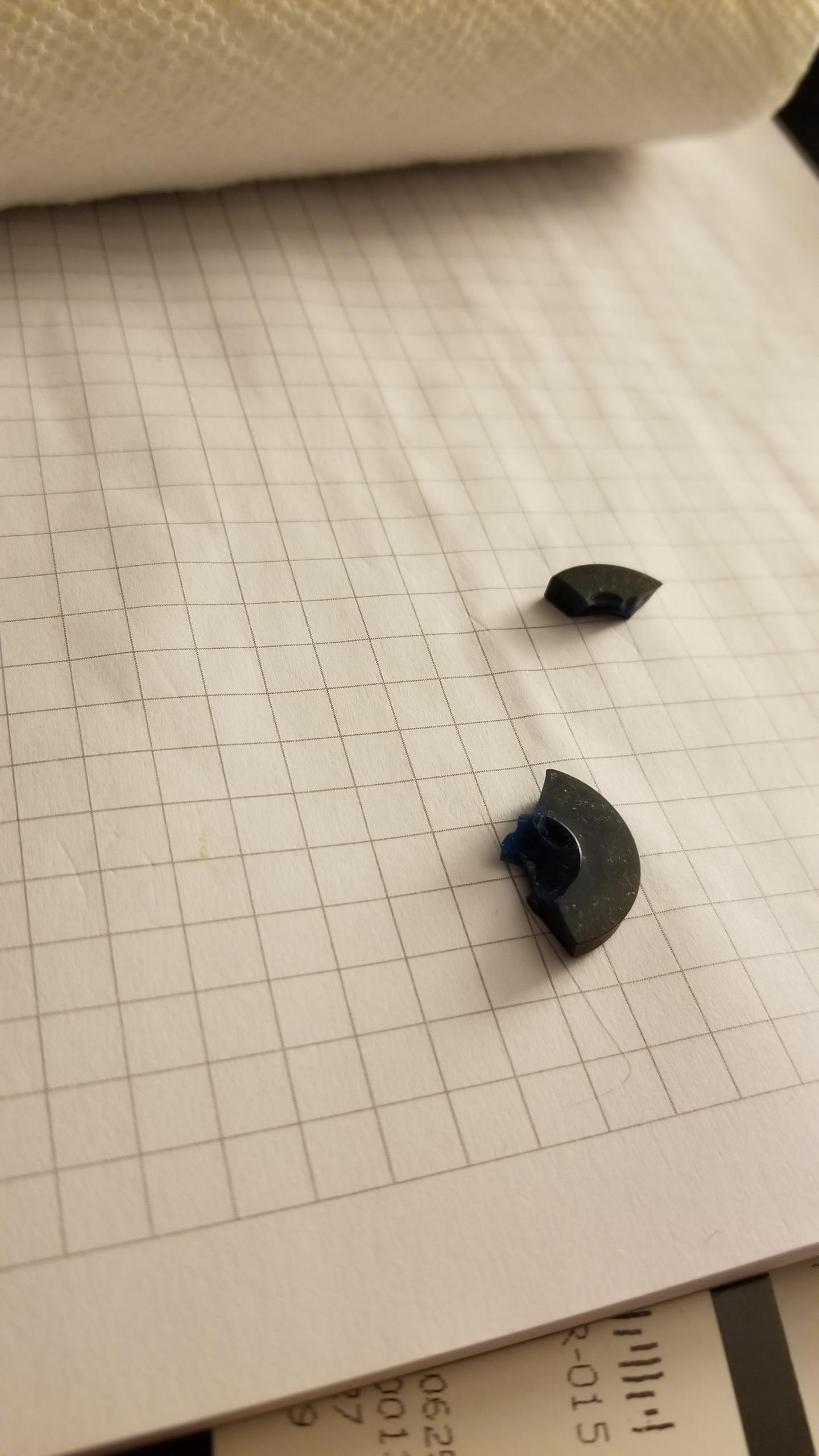
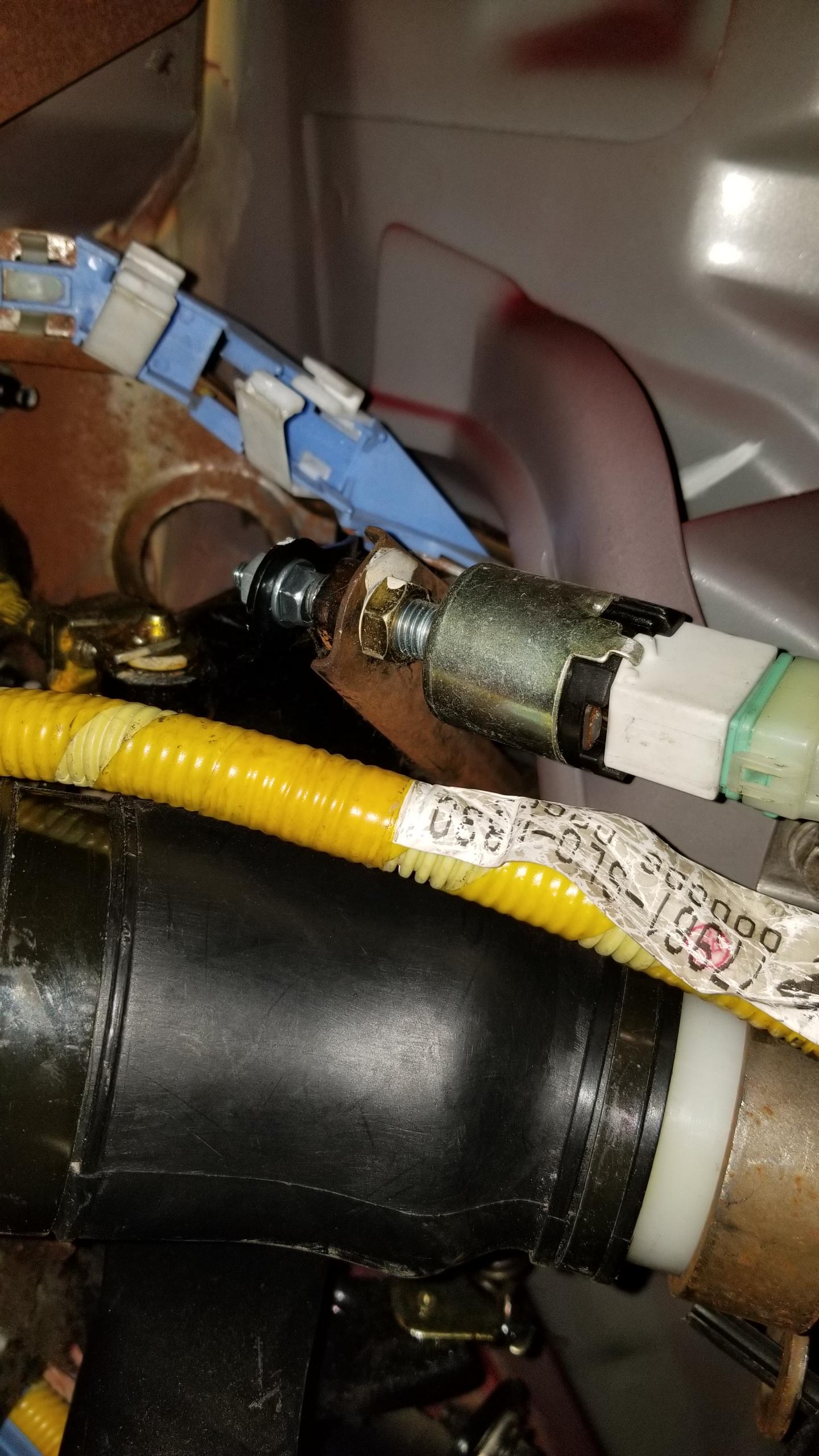
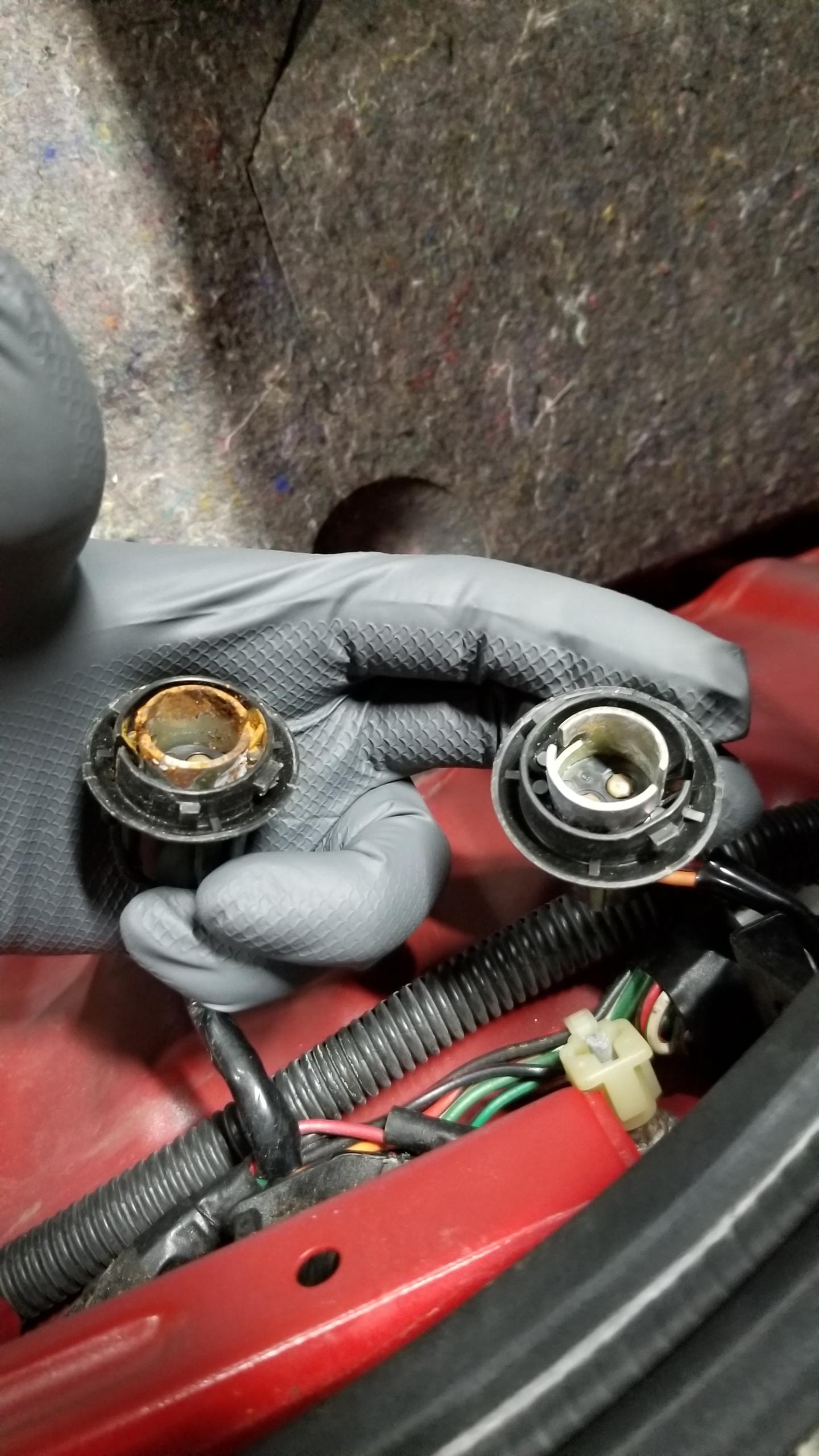
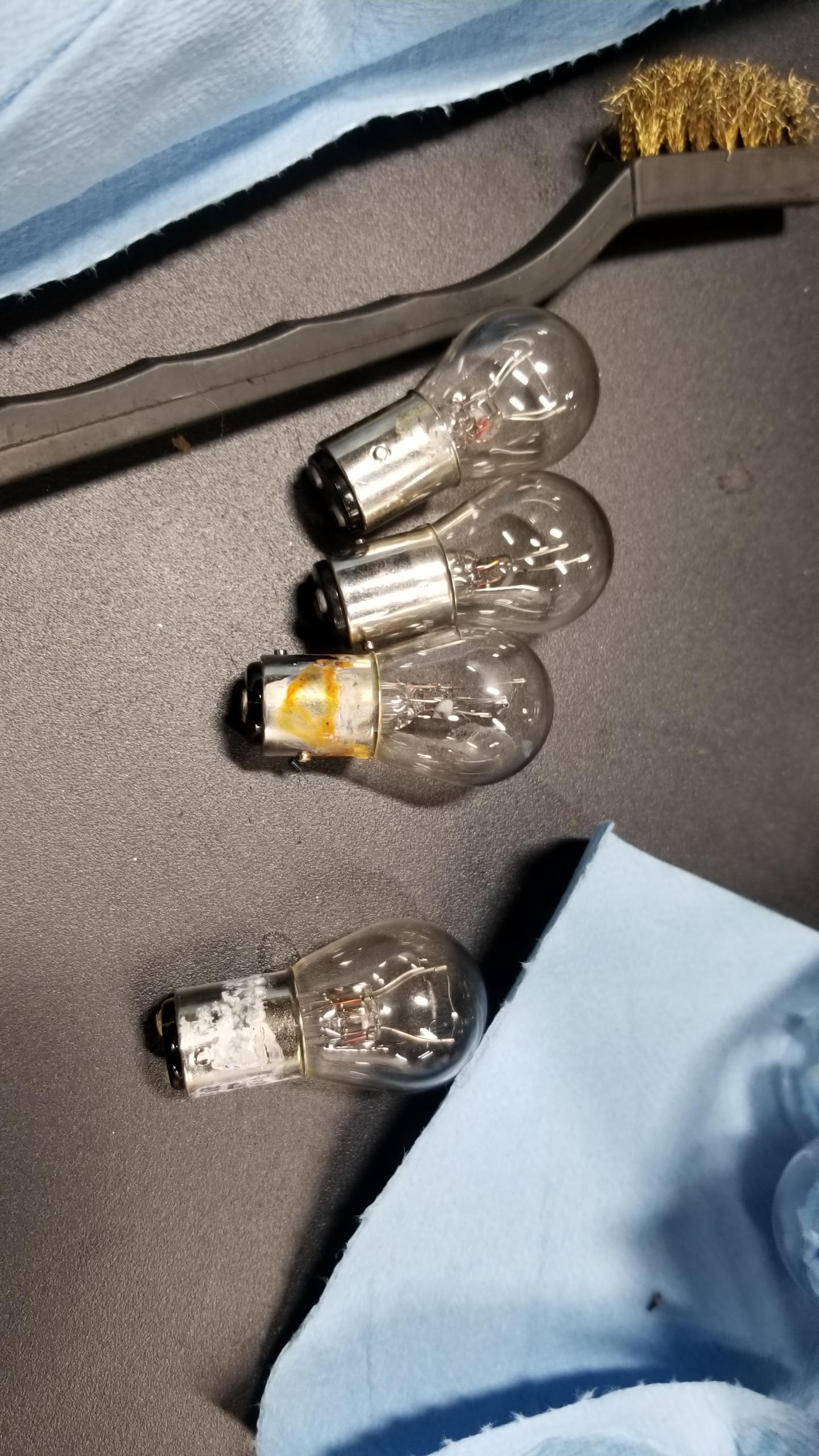
 ?
?






